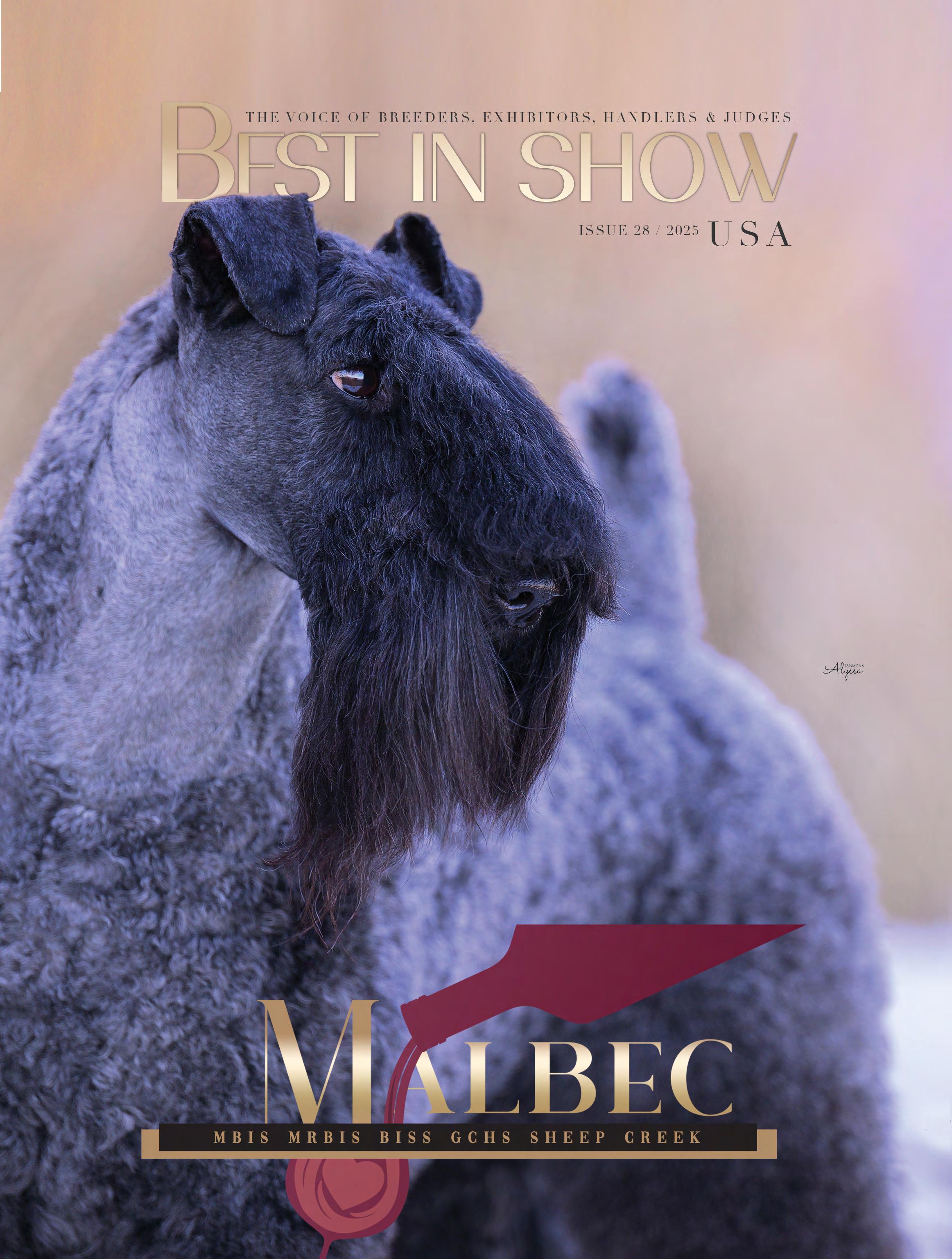
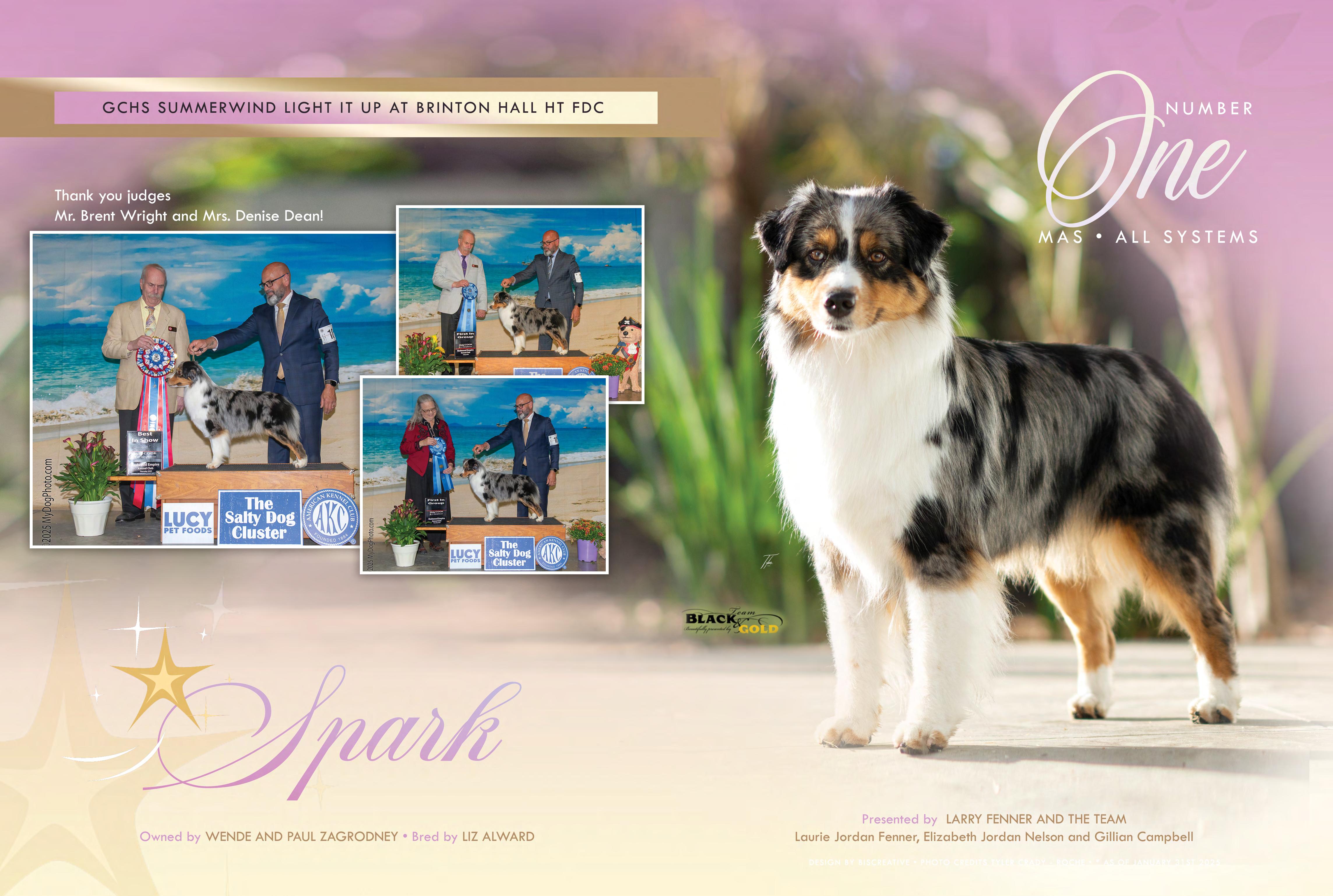





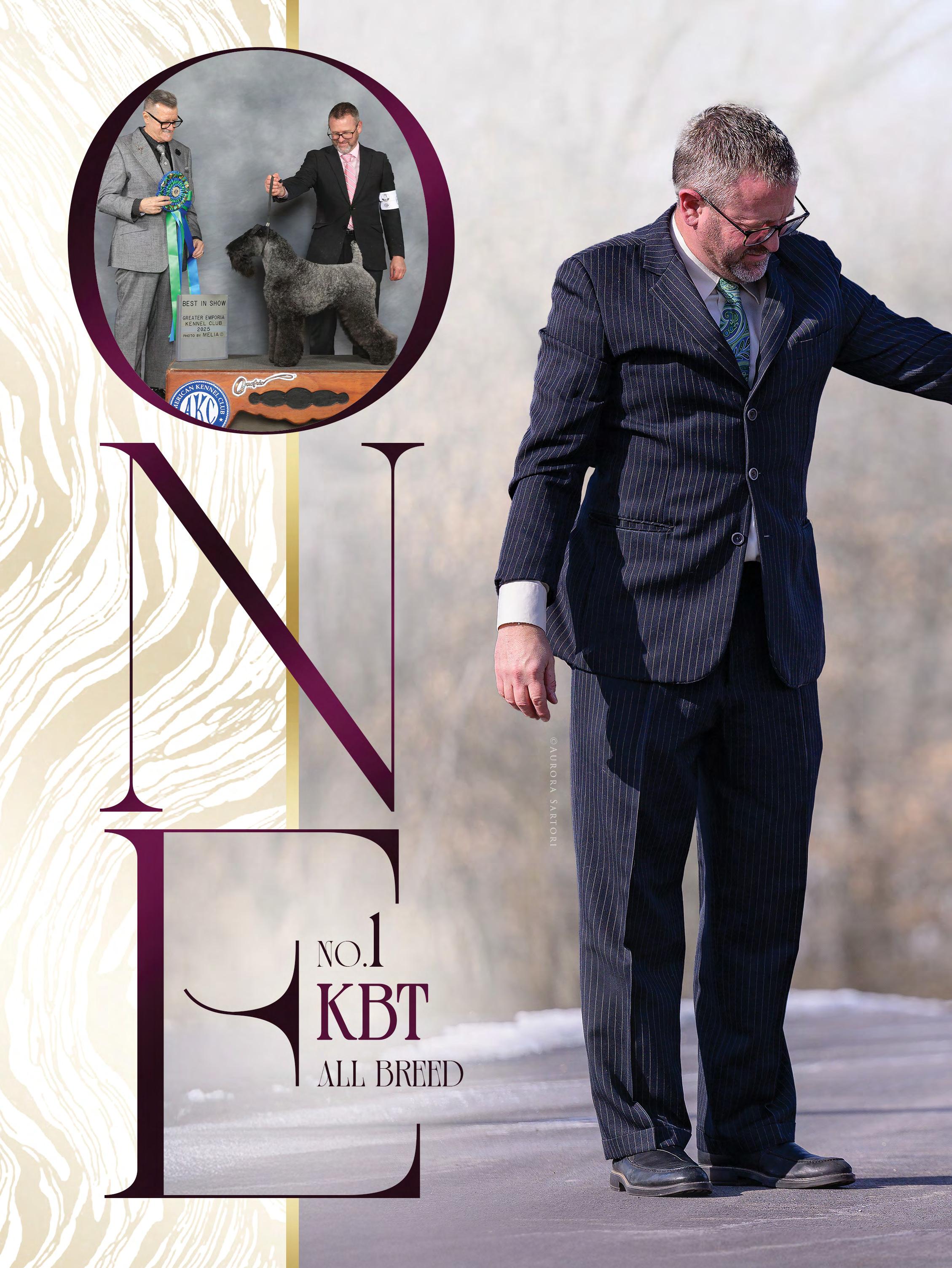
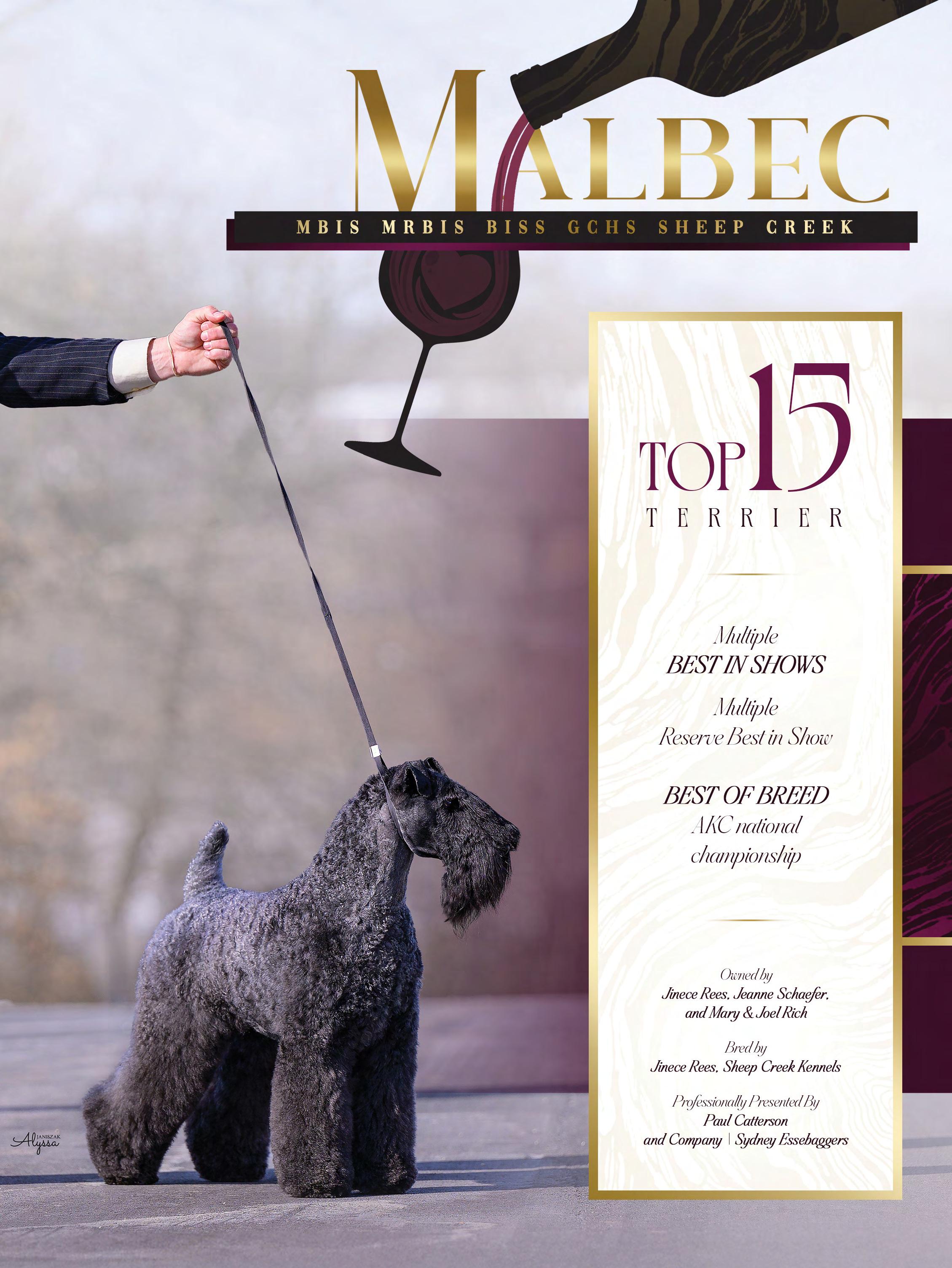
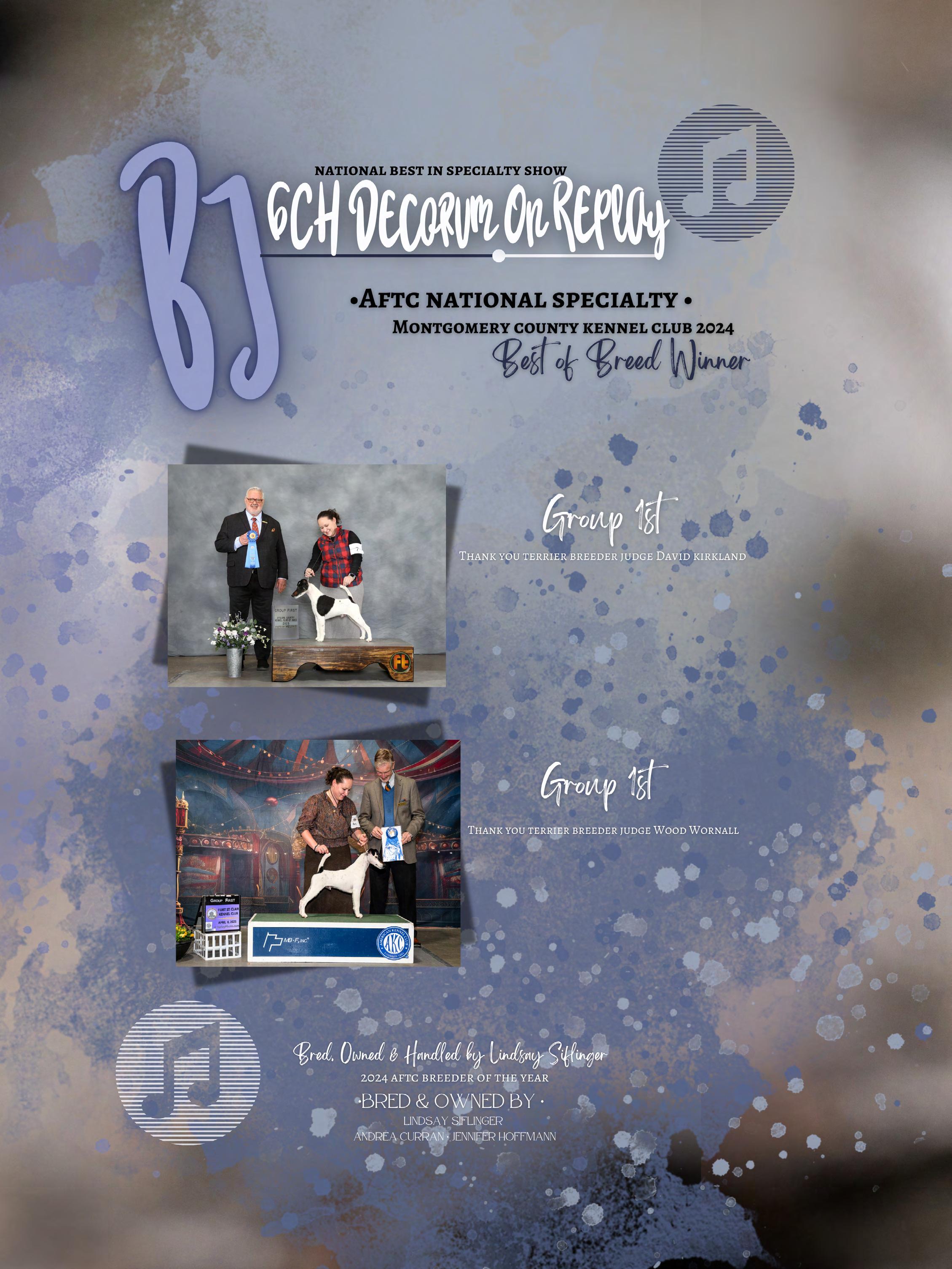
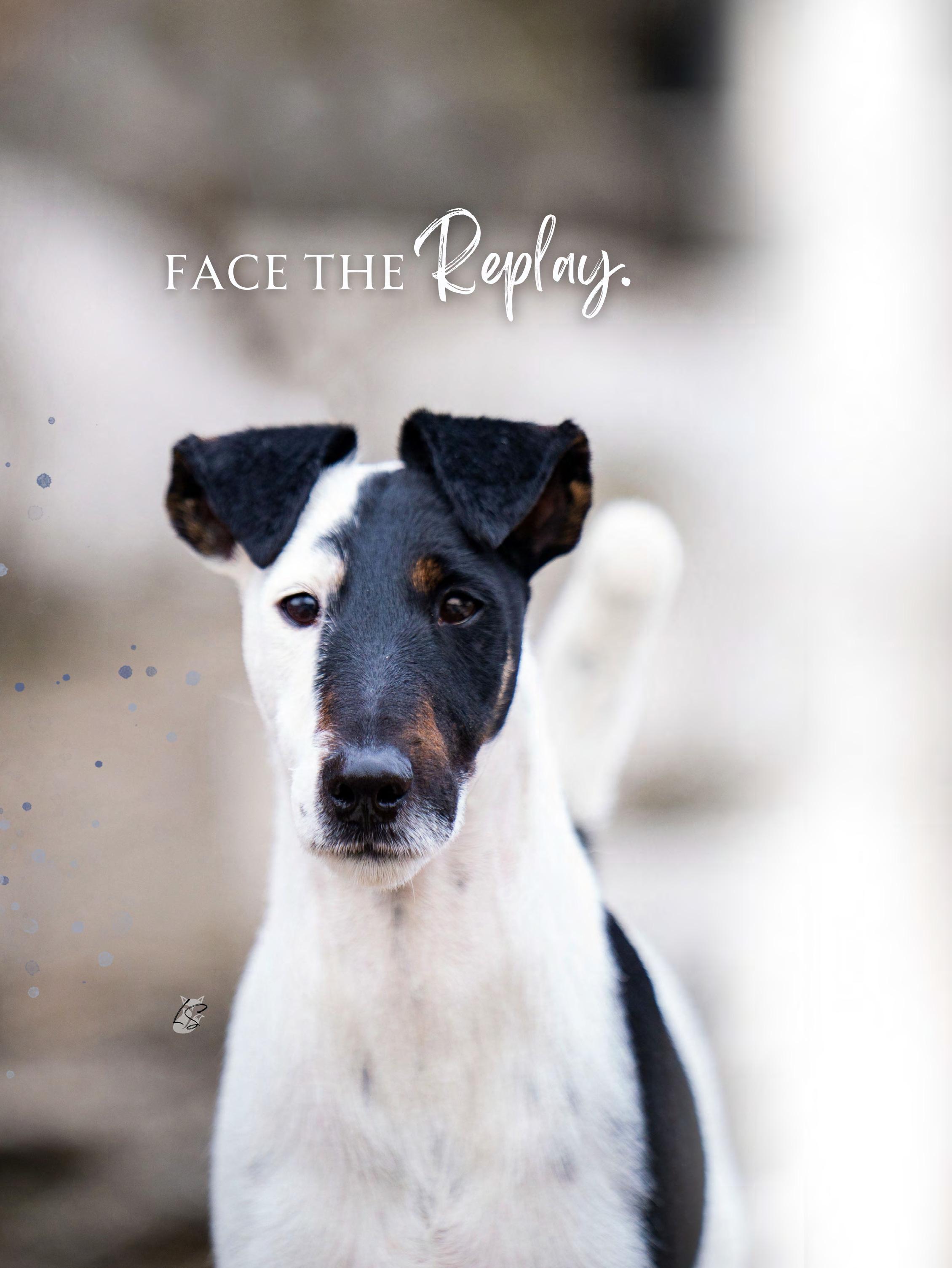

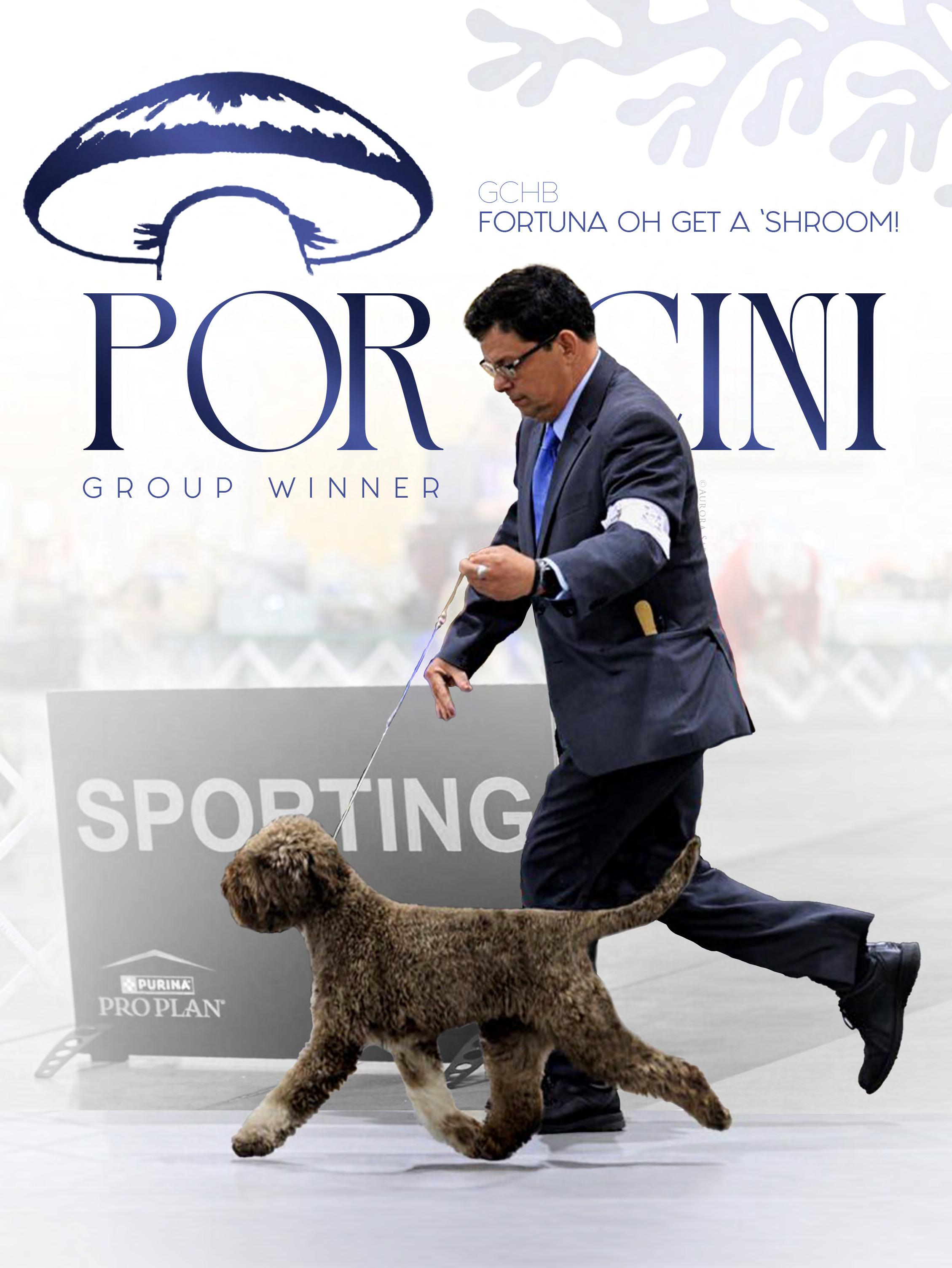
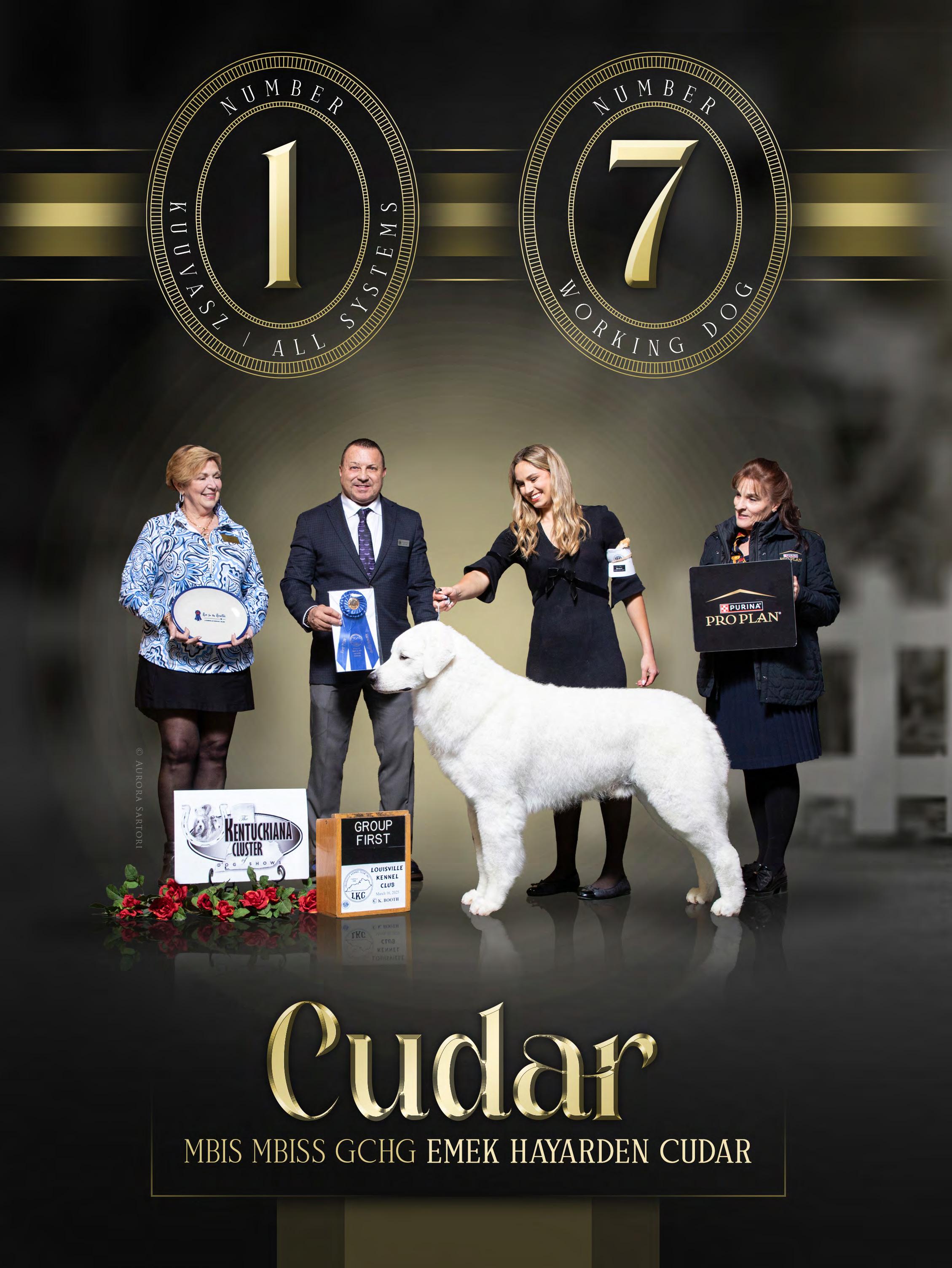
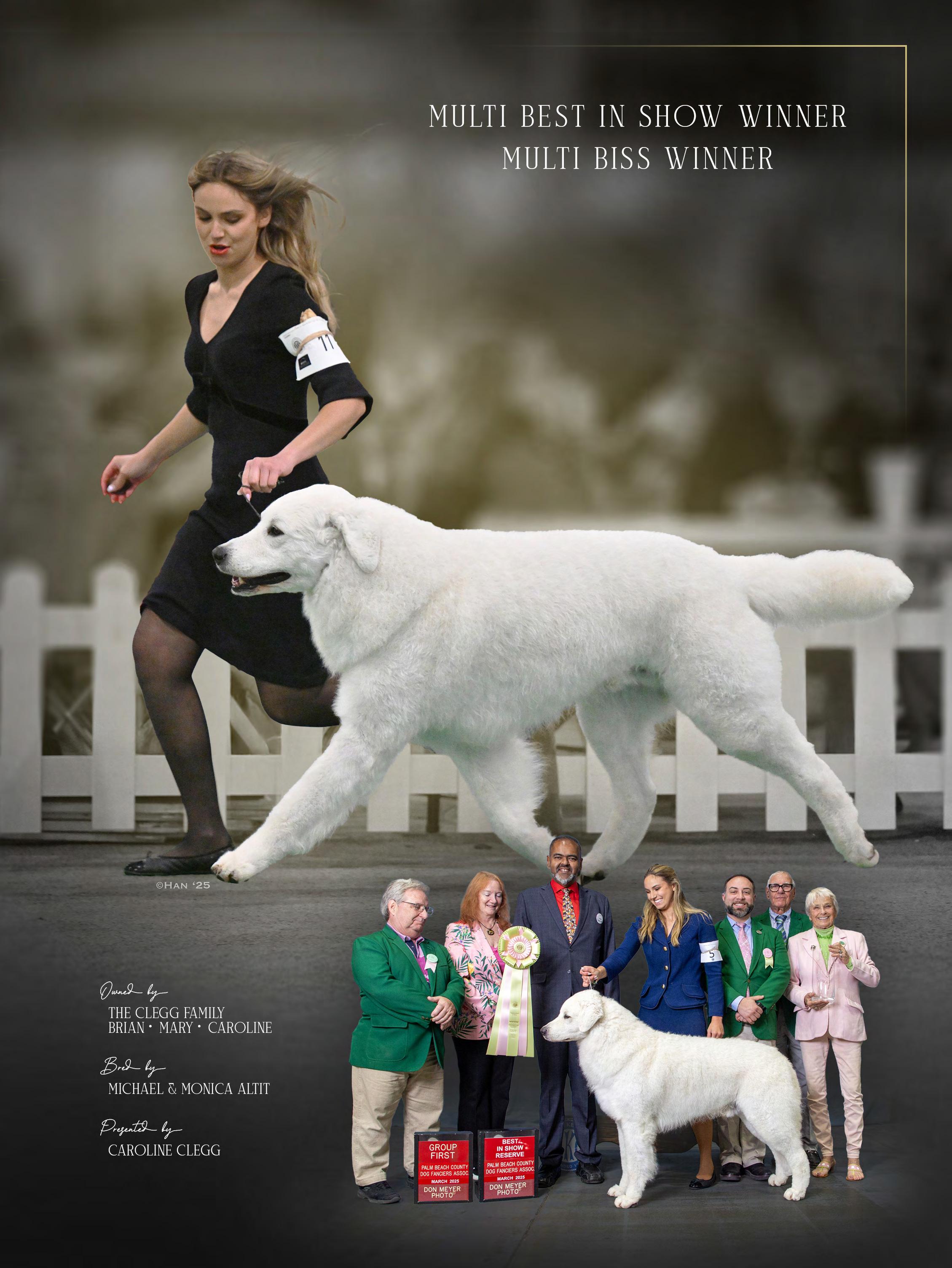

















Hello, May!
We are thrilled to welcome the beautiful spring weather and the excitement of May’s dog shows! This month’s issue of Best in Show is packed with outstanding content you won’t want to miss.
We kick things off with an in-depth interview with renowned professional handler Kellie Williams, followed by a special focus on the beloved Bichon breeds: Havanese, Bolognese, Bichon Frise, and Maltese — featuring exclusive interviews with some of the world’s most respected breeders.
Our Owner-Handler Spotlight this month shines on Laura Dowjewski, proud owner of Maltese, whose passion and dedication inspire.
We’re also excited to welcome Arvind de Braganca to the Best in Show team! Arvind brings his unique voice and expertise to his brand-new column, Arvindology, where he has full creative freedom to share his insights and stories.
Of course, we couldn’t miss covering two of the most prestigious specialties of the season: Potomac and PCA. In this issue, you’ll find special Potomac coverage by Eddie Baute, with a dedicated PCA feature coming up in our June edition.
Wishing you all a wonderful May — enjoy the issue and stay tuned for the exciting June release!
JOVANA DANILOVIC Editor in Chief
LEE GROGAN
Meet the Breed BEST IN SHOW CREATIVE Design
DJORDJE DANILOVIC & BELTRAN ALONSO
Social Media
SALES DEPARTMENT
JOVANA DANILOVIC RANGEL WHATSAPP 805-291-6704
BONNIE GUGGENHEIM 352-362-3863 WWW.BISMAGAZINEUSA.COM • INFO@BISMAGAZINEUSA.COM
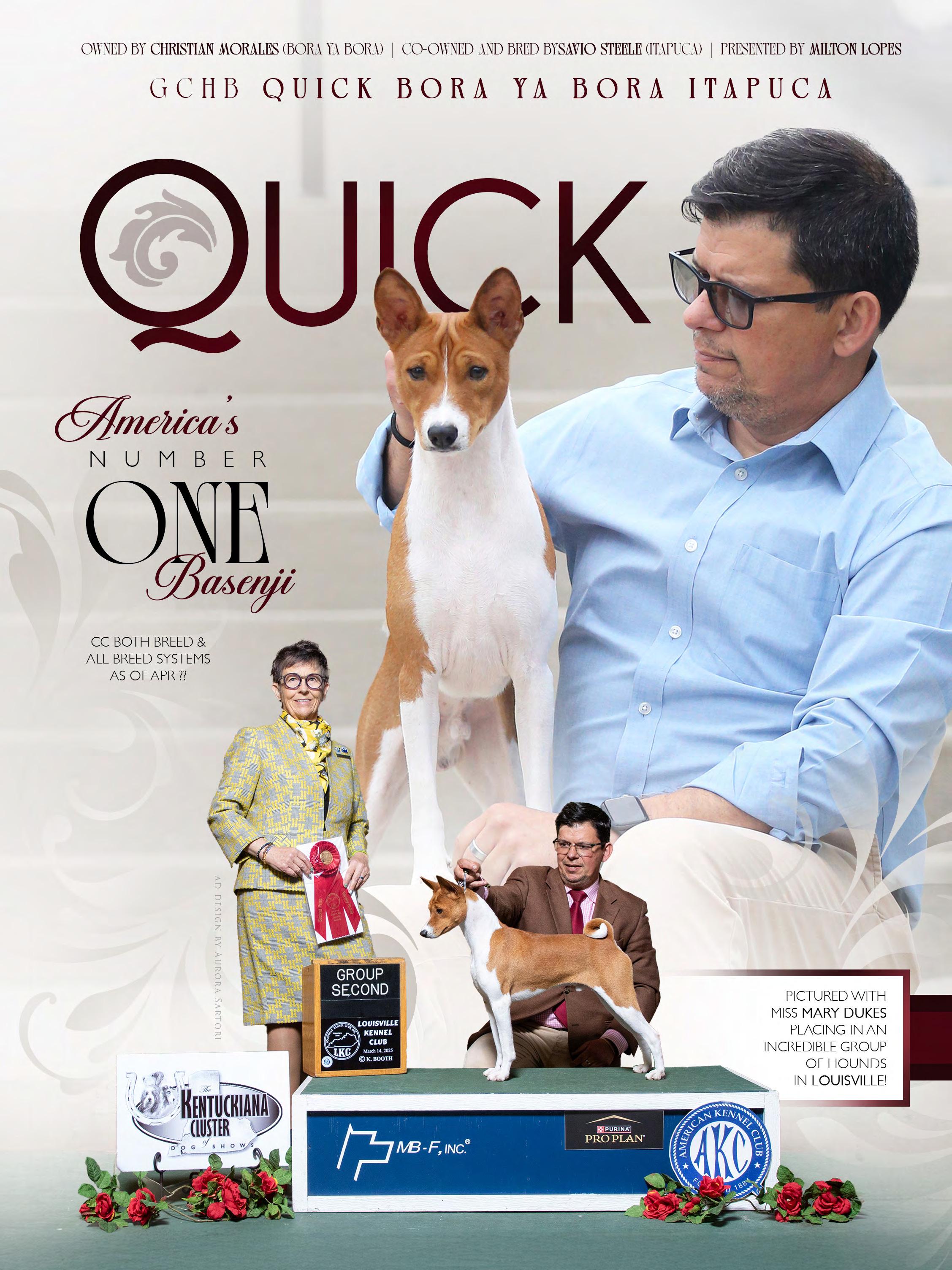





INTERVIEW WITH HANDLER
INTERVIEW WITH BOH
ARVINDOLOGY
36
RINGSIDE CLICK & RESULTS
42 POTOMAC GLORY
MEET THE BREED
58

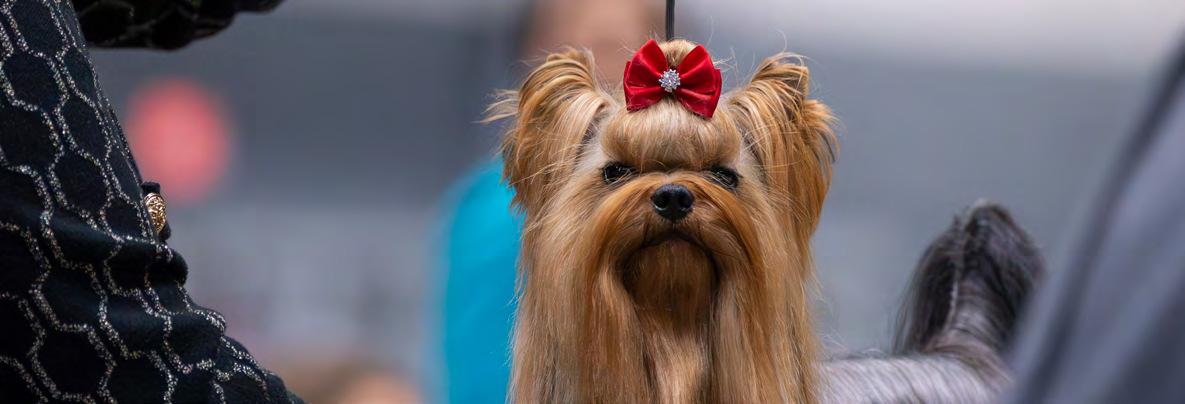




BECOMING
RESULTS


PROFESSIONAL HANDLER
Can you share with us how you first became involved with the world of pedigree dogs?
I started with my family’s Jack Russell Terrier in 4-H at the age of 9. I wanted to show horses like my mother did, but we didn’t have the land, and the dogs seemed easier at the time. After a couple of 4-H events, I was introduced to AKC junior showmanship and was hooked! The rest was history.
Who were the handlers that inspired you early in your career, and under whom did you begin your apprenticeship?
As a young girl, I apprenticed under Jane and Greg Myers, Rindi Gaudet, Larry Cornelius, and Marcelo Veras. I remember, as juniors, we would all fight to see who would be able to work for which handlers for the weekend—it was really an honor to work for a handler at that time. In my early 20s, I went out to Southern California to apprenticeunderBruceandTaraSchultz,whereI not only learned more about sporting dogs, fine-

tuned my animal husbandry skills, and improved my handling abilities, but I also learned about the business side of things. I wouldn’t be where I am today without the lessons I learned from all of them!
As a handler, do you find more excitement in winning at an all-breed show or a breed-specific specialty show? Why?
All wins are exciting, but I think an all-breed show is a touch more exciting due to the fact that you have to get through three different levels and receive different opinions to achieve a Best in Show. If you win a National Specialty, you receive one judge’s opinion, whereas winning a Best in Show, you receive 2–3 different judges’ opinions on your dog. Don’t get me wrong—I would never discredit any win, as they are all special!
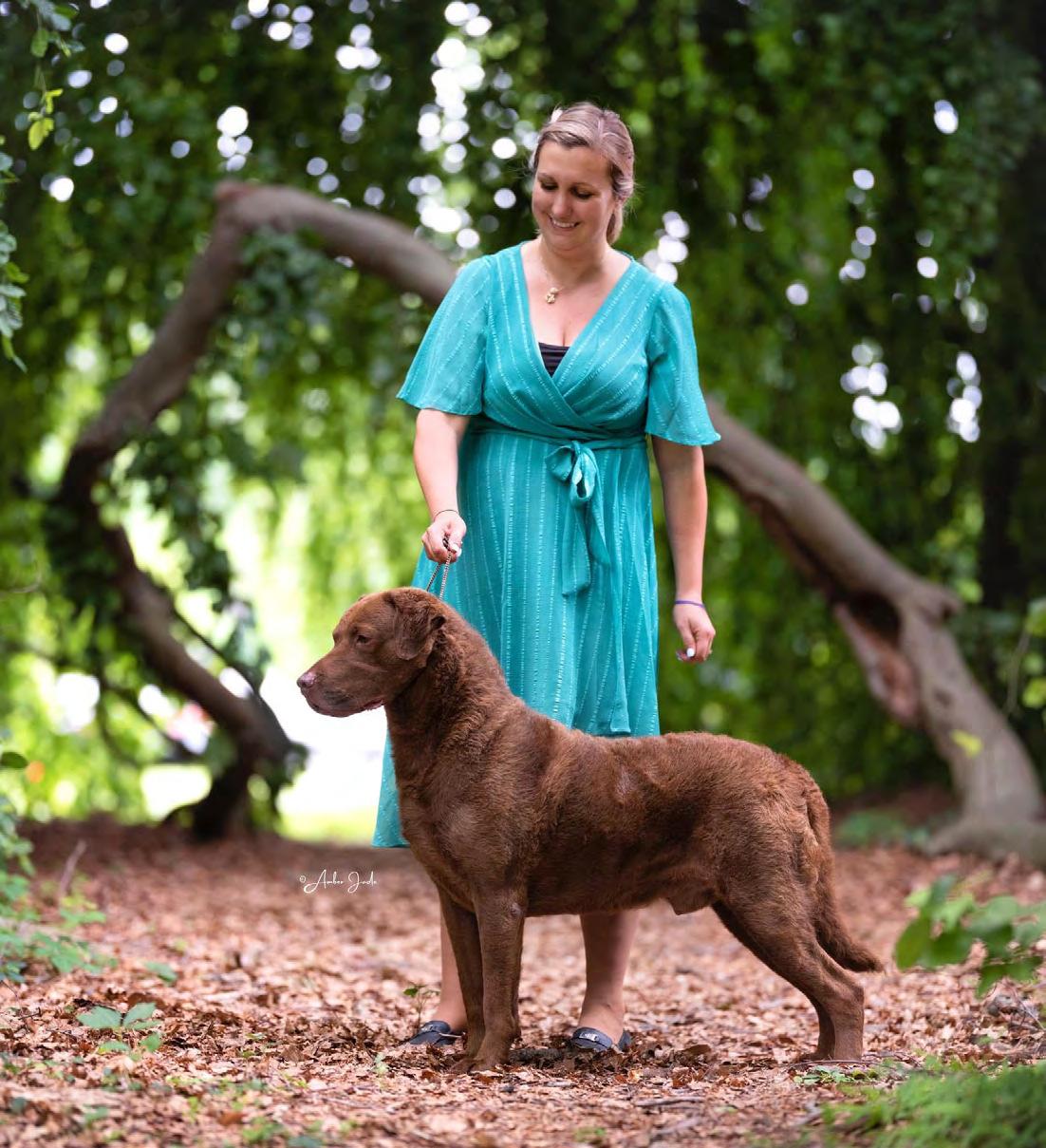
Does it mean more to you to have the number one dog in all breeds or the most breed points? And why?
I am going to go with all-breed. A couple of the main breeds I show (Australian Terriers and Chesapeake Bay Retrievers) have very low entries in the Southeast, so I tend to focus more on all-breed points.
Dog showing is often about comparing breeders’ future breeding stock. Do you feel that this goal is top of mind for your clients when they place a dog with you for competition? Do you think this mindset is common among dog owners who show their dogs?
I do think my clients have this mindset when sending dogs out with me. Sometimes people let their egos get in the way, but I do feel as if most people are in it for the right reasons.
Are there any particular breeds or groups of dogs that you particularly enjoy handling? What draws you to them?
I was raised a Terrier girl, but I have fallen in love with the Sporting group, and that is mainly what I handle. I branch off into some other breeds in other groups, as it’s good to have some diversity! My husband and I breed Chesapeake Bay Retrievers and Australian Terriers, and of course, I love to finish championships on the puppies I breed and raise.
Do you work with assistants or a team? If so, what key lessons or skills do you hope to pass on during their time working with you?
I have an amazing team that supports me both at home and on the road! I literally could not function without them. Key lessons I always hope to pass on are to make sure the dogs’ needs come first, as we are their advocates and sole caretakers. The dogs do this for us—no dog was born to be a show dog— but they always show up for us, so the least we can do is care for them in the best way possible.
If you could have handled any dog in history, which one would you choose, and why?
Emma, Ch. Gryphon’s Stellar Eminence, an Ibizan Hound shown by Rindi Gaudet. I remember seeing her at one of the first AKC shows I attended. I was not working for Rindi at the time, but I was lucky enough to get to walk her back to the setup, and I thought I was the coolest kid at the dog show walking Emma! She was such an exceptional show dog and a beautiful example of the breed.
Do you have the time or opportunity to breed dogs of your own? If so, what breeds do you focus on? If not, is this something you’d like to pursue more in the future?
Yes! As mentioned before, my husband and I breed Australian Terriers and Chesapeake Bay Retrievers. I have been involved in Aussies since 2010 when I showed my first multi-BIS winning dog, Ch. Kambara’s Zebulon. My husband grew up with a Chessie, and when we got married, we got our first Chessie. He focuses on the hunting side, while I focus on obtaining their championships. It’s a great balance, and we have fabulous mentors in both breeds!
What are your thoughts on the number of dog shows happening each week across the country, and the level of participation in those events?
There are too many dog shows every weekend across the country. Some weekends, there are three to choose from just in the Southeast part of the country. This makes it harder to find good major wins, spreading entries too thin.
How do you decide which shows to attend? Do you prioritize certain judges or consider factors like location and travel distance?
In the past, I typically prioritized shows based on past entry and location. Recently, I have been traveling to new locations and stepping out of my comfort zone.
Which dog shows do you most enjoy competing in, both in the U.S. and internationally?
I have never attended an international show, but in the U.S., Palm Springs, California is my favorite show. I haven’t been since 2017, but I would love to go back.
Can you share some of your most memorable wins or achievements in your career as a handler?
The first dog I was ever trusted to campaign was an Australian Terrier named Zeb. I had never specialed a dog on my own, and it was a huge leap of faith. Zeb went on to break the Best in Show record, winning six Best in Shows and the National Specialty. I was also attending college full-time, learning how to balance schooling and shows at the same time.
Do you have aspirations to become a judge in the future? If so, which breeds or groups would you focus on?
Possibly in the future, I would like to become a breed judge. However, right now, I am truly enjoying judging Junior Showmanship when given the opportunity. Judging the preliminaries this past year at the 2025 Westminster Kennel Club was such an honor. The talent was amazing, and I thoroughly enjoyed it.
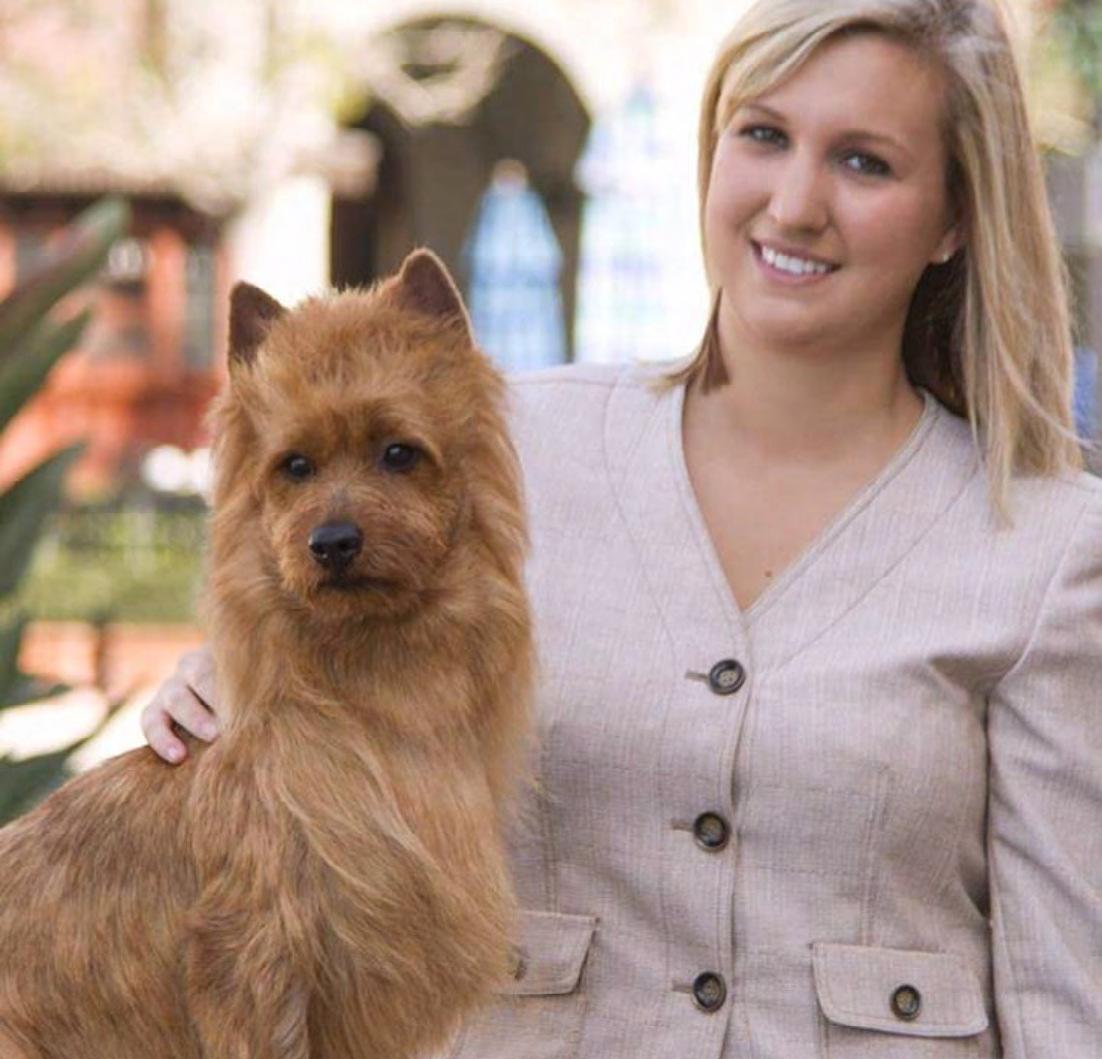
In recent years, have you noticed any breeds becoming more popular or competitive? What do you think has contributed to this trend?
I have noticed a handful of breeds in the Miscellaneous class becoming more popular and being recognized more quickly by the AKC as regular breeds. Also, social media has helped promote breeds and advertising. People now have the desire to be the first big winner, or judges have the desire to be the first to put up a new breed for a big win.
How much time off do you typically take throughout the year, and do you think the AKC should consider adjusting show schedules to allow for more consistent vacation periods, particularly in summer and winter?
Most of my time off is during the summer when there are fewer shows in my area. Just like any self-employed
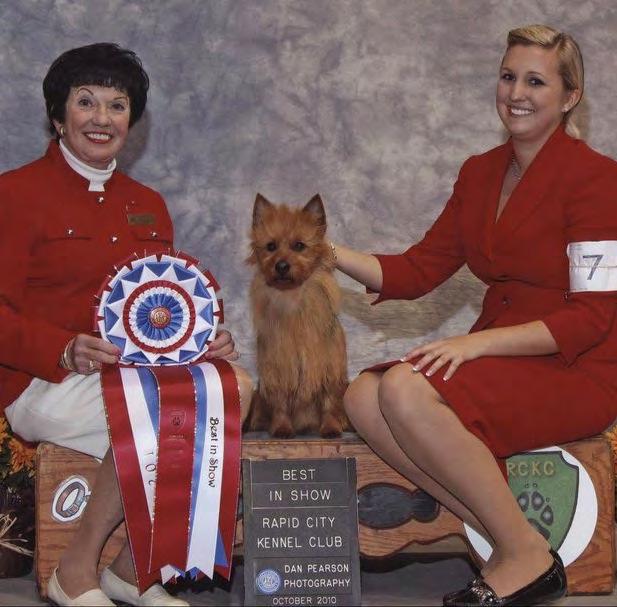
business owner, it is up to me to regulate time off and working time. The AKC should not mandate time off, as each of us makes our own schedules, and each is a little different based on the region we live in.
If you could make any changes to the world of dog showing to improve it, what would you alter?
Show circuits have become long—like five days or more. Even though I think the AKC should not mandate time off, show circuits should be a maximum of four days. This allows for easier travel time and more time off between shows so handlers can focus on better care and conditioning of dogs. I also think limiting or approving fewer shows per weekend would be a good change, as there are sometimes too many shows close together on the same weekend, weakening entry numbers.
What is your favorite way to unwind on days when you’re not working with dogs? Do you have hobbies or interests outside of the dog world?
When I am home, I love to spend as much time with my husband, helping him with projects or finishing my own. If I had more time, I would love to get back to deep sea fishing. But my absolute favorite thing to do is raise my puppies. Most times, you can find me just sitting in the whelping box or playpen watching puppies play.
Do you have a favorite holiday destination or a place you like to visit to relax and recharge?
Key West, Florida! It’s where my husband and I got married and holds a very special place in my heart.






Please tell our readers how you got involved in the world of pedigree dogs and which people were the most important for your beginnings.
I grew up in a dog show family. My dad bred Brittanys, and I started showing dogs at an early age. We also had a large boarding kennel where we housed Irish Setters for a top breeder back in the 1970s, and I helped show those dogs as well. I participated in the breed ring as well as Junior Handling.
What breed of dogs have you shown over the years, and what breeds are your favorite to work with?
I started with the Brittanys, then the Irish Setters, and also had an American Cocker I showed as a young adult. Then I took a 35-year break to raise a family and manage a business career. Since my
return to the show ring six years ago, I have shown toy dogs. Maltese are my love and passion.
Where did you get your foundation dogs in your main breeds, and what breeders from the sport do you work with today?
Initially, I got my love of dogs from my dad! After a 35-year break from dog shows, I met Lee Albritton (Luvlee Maltese), who has mentored me since the restart of this amazing run. She has spent the last six years mentoring me and allowing me to co-own, raise, and show some of the best Maltese out there.

Please mention some of your most successful dogs, owned or bred by you. (Show ring, litter box, and/or stud.) Doesn’t have to be shown by you.
Looking back to the Brittanys, as a young teen, I never realized how great my dad’s dogs were and all the accomplishments he achieved as a breeder. Now that I have re-entered the dog show world, I can appreciate all he did.
My first Maltese that got me back into the show ring was “GCHB LuvLee’s Miranda, Keeper of the Dream.”
After meeting Lee Albritton at multiple dog shows, she agreed to sell me Miranda, as long as I agreed to finish her championship and make her a princess. She needed only a few points and a major. I remember Lee telling me, as I picked her up to bring her home, that “no one keeps their first Maltese coat, and that it would be difficult.” The challenge was on! I would travel two hours to her home every month or so for her to check on my progress. She was super surprised that I was
managing so well! I love a challenge! As we were ready to start showing, COVID hit! After almost a year, we returned to the show ring, finished her championship, and I specialed her for a bit, retiring her with a Bronze Grand Championship and lots of success in the Owner Handler Group ring.
And then came “GCHS LuvLee Ellie Mae, Paying It Forward.” Ellie is one of those once-in-a-lifetime show dogs! She loves the show ring and everything that has to do with it! She finished her championship in six shows and has been specialed for the last two and a half years by me as an owner-handler. She has won multiple Toy Groups and has finished the last two years in the Top 5 rankings for the Maltese breed. We finished 2024 as the #1 Maltese Owner-Handler and hope to do it again this year. She has multiple Owner-Handler Best in Shows and a Specialty Best of Breed. She is very close to obtaining her Grand Champion Gold designation and has her Platinum Owner-Handler designation.
Please share with our readers some of your highlights in the show ring so far.
I would have to say winning Ellie’s first Owner-Handler Best in Show ranks pretty high, along with winning two back-to-backregularToyGroupsattheMobile,Alabama Cluster last year—those are the highlights!
What makes you more excited – winning an All-Breed Best in Show or a Specialty Best in Show?
Well, that last goal of an All-Breed Best in Show is something we have not achieved yet, but still hope for! Winning the Specialty Best of Breed was a big thrill, as well as going Best of Opposite at the American Maltese Specialty in Orlando in December, over so many
beautiful Maltese.
On the whole, do you believe there are too many allrounder judges judging your breed and not enough breed or group specialists?
I would love to see more group specialists that really use and understand the standard when judging our breed.
What do you think—where in the world does your breed have the best quality?
We see many beautiful Maltese coming from Korea and the Eastern European countries. But I think the American classic versions are just as beautiful and are my personal favorite.
Do you judge, and if not, would you like to judge someday?
I would love to continue to advance my knowledge of the breed and judge someday.
Is there any advice you would like to give both to professional handlers, owner-handlers, and also judges?
Consider the whole of the dog—not just the pretty face and coat. As an owner-handler, hang in there. If you have the best dog in the ring, you will be rewarded!
What is your favorite way to unwind on days off? Do you have hobbies outside of the dog world?
I play both tennis and golf. I work part-time for the United States Tennis Association running both junior and professional events. I love working with young players coming up in the ranks!
You have the power to change dog showing for the better in your eyes—what would you change?
As an owner-handler, of course, I wish it was the dog
that was being judged 100% of the time and that there was not such heavy influence on who the handler is. I am a businessperson at heart and, of course, understand this is also a business at the end of the day, but it can be frustrating at times.
Is there something that recently moved you?
I read a post on social media this week that a judge who was judging a Peke specialty called all the juniors back into the ring after placing the class. He wanted to take the time to explain to them all the proper way to show the breed. I found this to be such a great idea and was so impressed that he took this time to make it a teaching moment. If everyone took this time with the juniors, I think not only would we encourage them to stay in the sport longer, but we would also develop lots of good handlers.
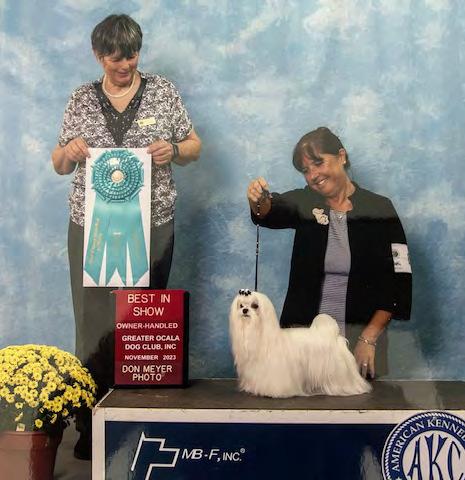


by Arvin de Braganca
“Does it really matter?”

Have you been asking yourself this question? My friendsandIdo.Itseemslikeacontinuousandceaseless mantra. Every person involved has to sacrifice their time just to participate. And then comes a moment when you truly give your soul to the process—when you decide that leveling up requires a new kind of commitment.
You study the history, the purpose, the functionality, the form, and the standard. You spend hours digesting and memorizing pedigrees, bloodlines, and influential families. It becomes a full-time devotion—of time, of money, of self. There comes a point where there is nothing more you can do but give yourself to the art and the process.
You become the legacy and the steward—not just of your breed—but of its history, and ultimately, its survival. So again I ask: Does it really matter?
Where am I going with this?
We are currently in a cycle of disillusionment, burnout, and quiet despair. Longtime, successful breeders are starting to question everything they’ve believed, everything they’ve worked for, and why they are even still participating.
They ask themselves every weekend: Does it really matter?
They are disheartened by declining numbers and declining quality. They’re disillusioned by the lack of educated newcomers with a true hunger to learn. They’redisappointedbypooradjudicationfrompeople who don’t comprehend what correct quality even is.
They see their life’s work being disregarded and slowly destroyed. They watch beloved breeds decline in the hands of those who lack ability, integrity, and any real understanding of what stewardship means.
And yes—it’s personal.
The disrespect and disregard toward what it actually takes—what it costs—to do this work well… it cuts
deep. That thorn in the side becomes an infected wound. It festers. It becomes diseased. It rots from the inside out.
The soul is chipped away in small deaths—watching poor-quality animals being sold to unknowing consumers by people who have no preservation intent, no knowledge, and no respect for the breed.
Yes, there are bright spots—but they’ve become so rare they barely register. They don’t break the darkness. They don’t heal the damage.
Why does this feel so morbid? Because it is.
Imagine dedicating your spare funds, your energy, your time, your life—only to feel like your work is worthless. Imagine exhausting your passion and wondering if all your understanding, all your effort, was for nothing.
Then it becomes clear why people sink into despair. Why you hear the lament from those who are the foundation of this sport. The breeders—true preservationists who understand purpose, form, and function, and hold themselves to a higher standard.
May I be so bold as to suggest we require more from judges’ education?
That we implement biannual testing for judges— along with biannual reviews of the AKC and judges’ educational venues. Are they providing unbiased, comprehensive education that adheres to a true standard of excellence? Are judges held accountable for refreshing and reinforcing their lessons?
Let’s not coddle exhibitors or beg them to stay in their ignorance. Let’s give less gratuitous reward
and more meaningful information. Let’s require comprehensive reasoning for placements.
Let’s implement a standardized husbandry course—a mandatory requirement for anyone seeking Breeder of Merit status. One that is consistent and robust enough that any violations would be willful, not ignorant.
Let’s put the focus back on the breed level. Let honor be restored in meaningful adjudication—not just the “race” to rack up results.
Let’s introduce peer reviews, or at the very least, provide a viable avenue for exhibitors to report truly egregious judging. We need an actual check-andbalance system. We, the people deserve a say.
None of this is radical. None of this is novel.
What I’m proposing here is a way to stop the bleeding, ease the burnout, lift the gloom, and bring light—and hope—back into the sport we love.
It’s a sustainable path forward. One that builds trust. One that builds better participants—more knowledgeable exhibitors, more thoughtful breeders.
And most importantly, it rewards and uplifts the core of our world: the preservationist breeder. The ones who keep the torch burning.
So—does it really matter?
Yes. Yes, it does.





by Eddie Baute

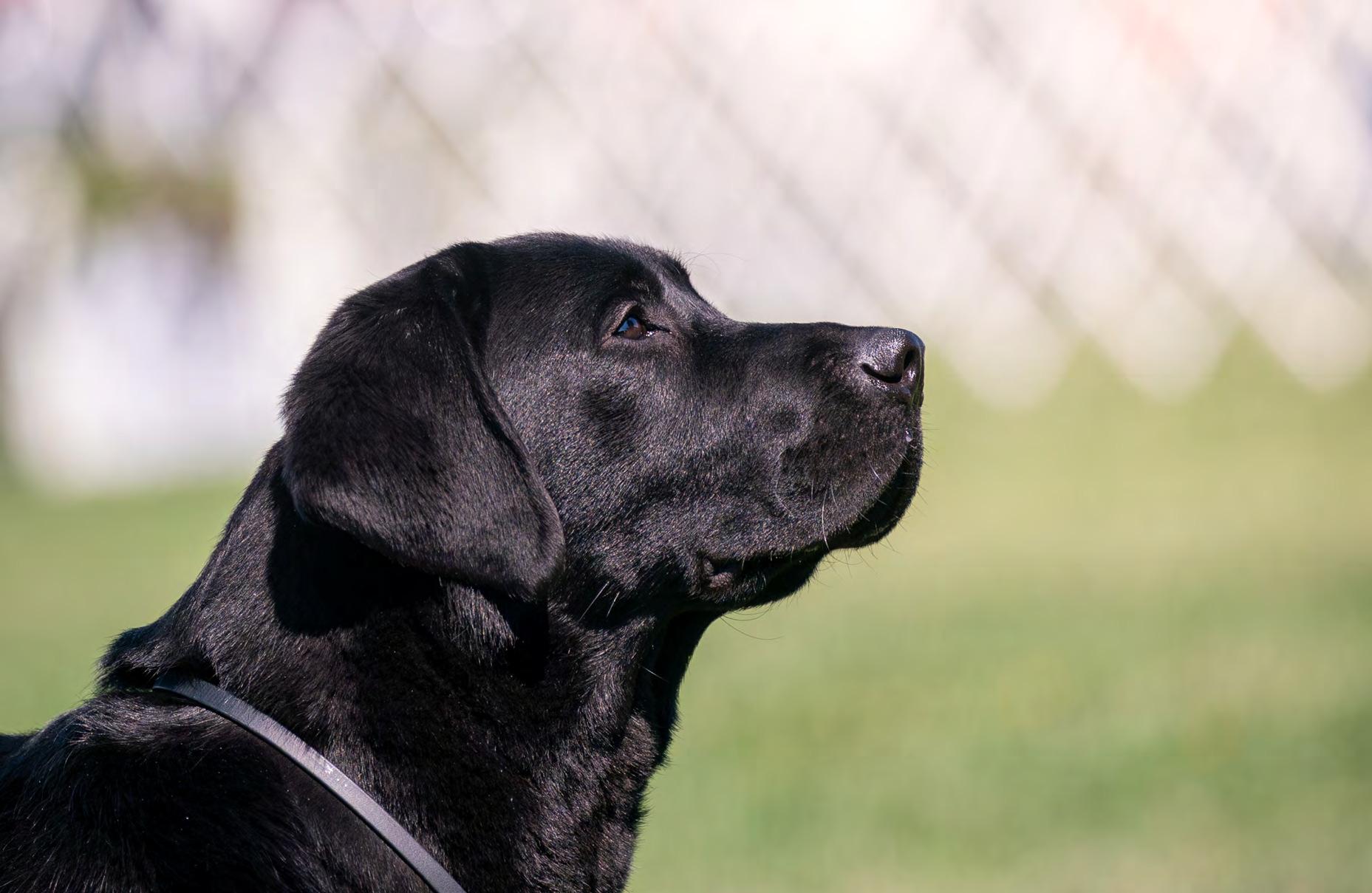
Judy Chambers, Ghoststone Labradors — Best Of Breed
Luis Peixoto, Real Corte Retrievers — Dogs
Andy Metcalfe, Baileydale Labradors — Bitches
Kathryn Mines, Rockycreek Labradors — Sweeps Bitches, Veterans Sweeps Dogs, Best in Opposite Sweepstakes and Best in Veterans Sweeps
Heather Johnson, Nycoma Way Labradors — Sweeps Dogs, Veterans Sweeps Bitches, Best in Sweeps and Best in Opposite Sweeps
Elaine Lessig — Non-Regular classes
Cullen “Cully” Leck, Vagabond — Junior Showmanship
Mr David Brobst and Mrs Nancy K. Withers — Obedience and Rally
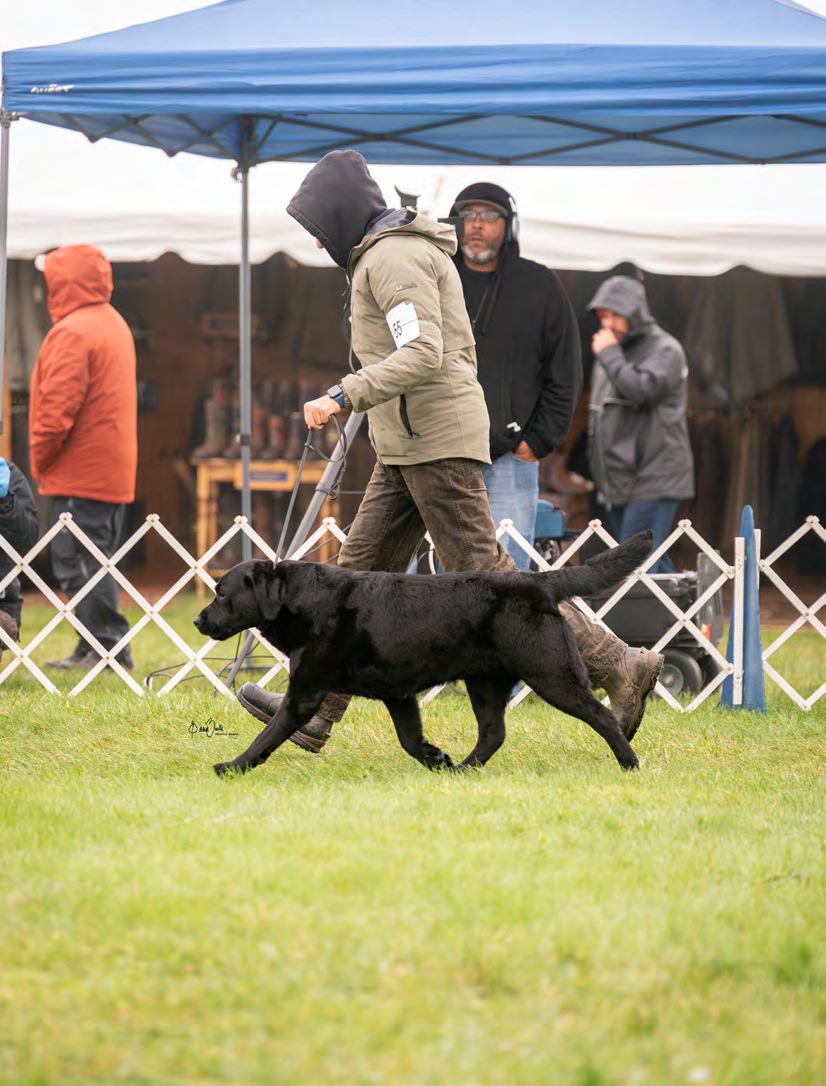
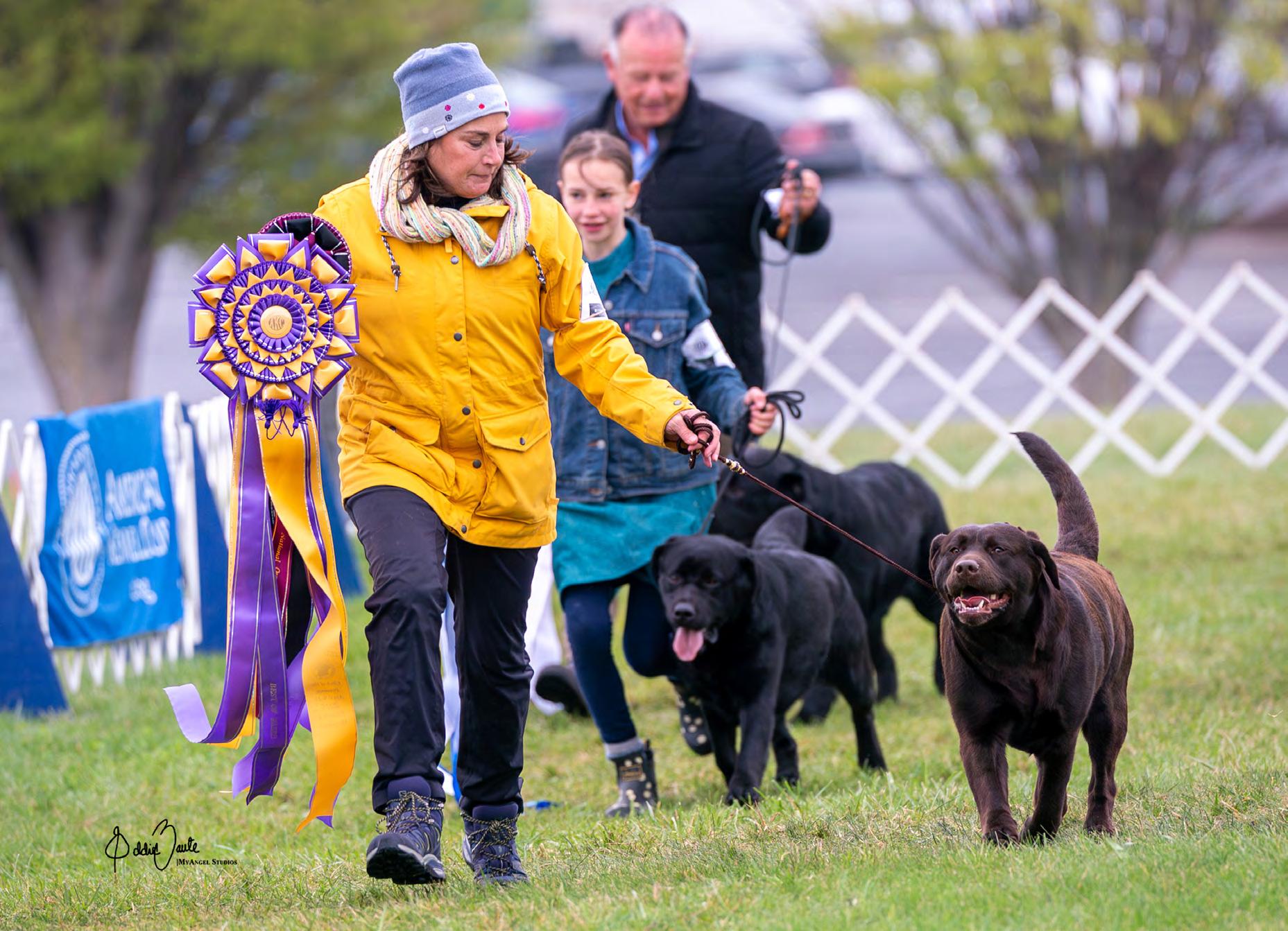
BEST OF BREED
CH ANTIQUITY’S MAYHEM CGC TKN
Owner: Susan St Peter, Hampden.
Breeder: Susan St Peter.
OPOSSITE SEX
CH HYSPIRE MEMORY LANE
Owner: Manuel Queijeiro, Lerma FO.
Breeder: Vonnie Russell & Jim Russell & Shannon Brown.

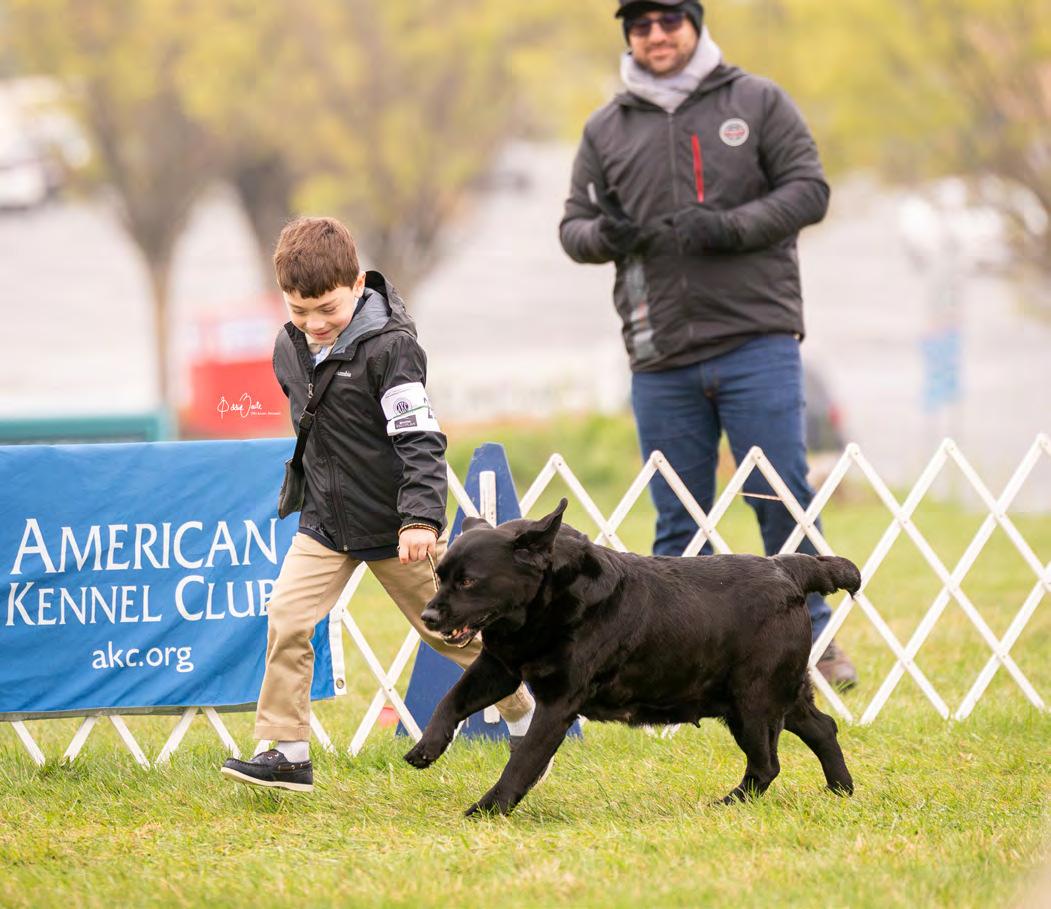

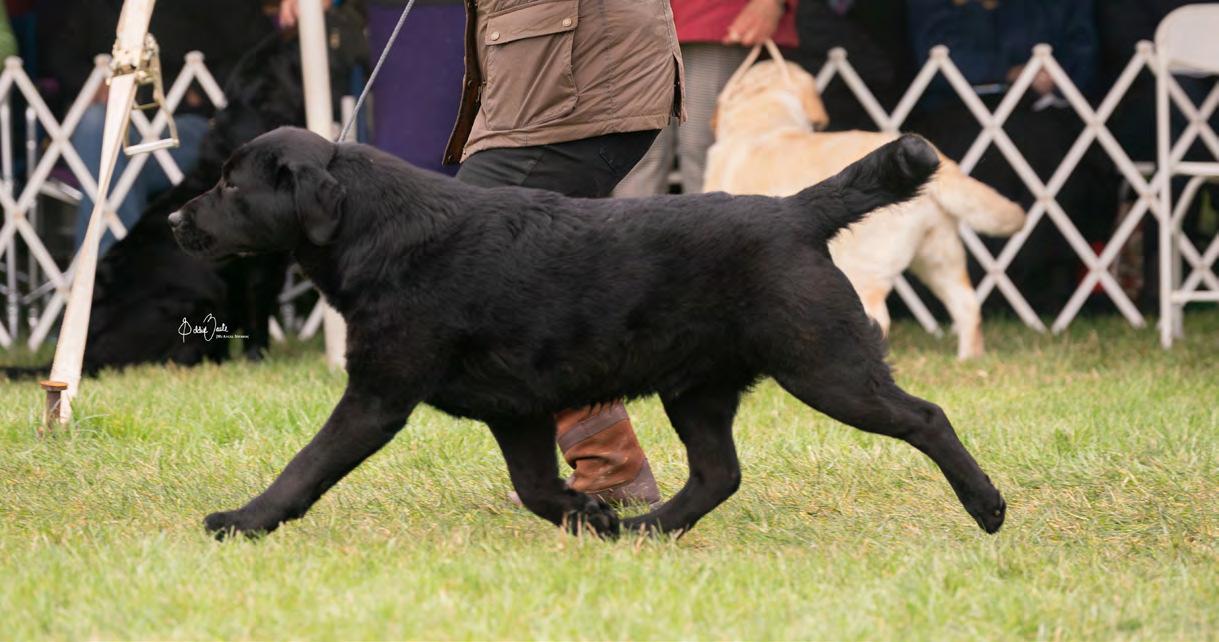


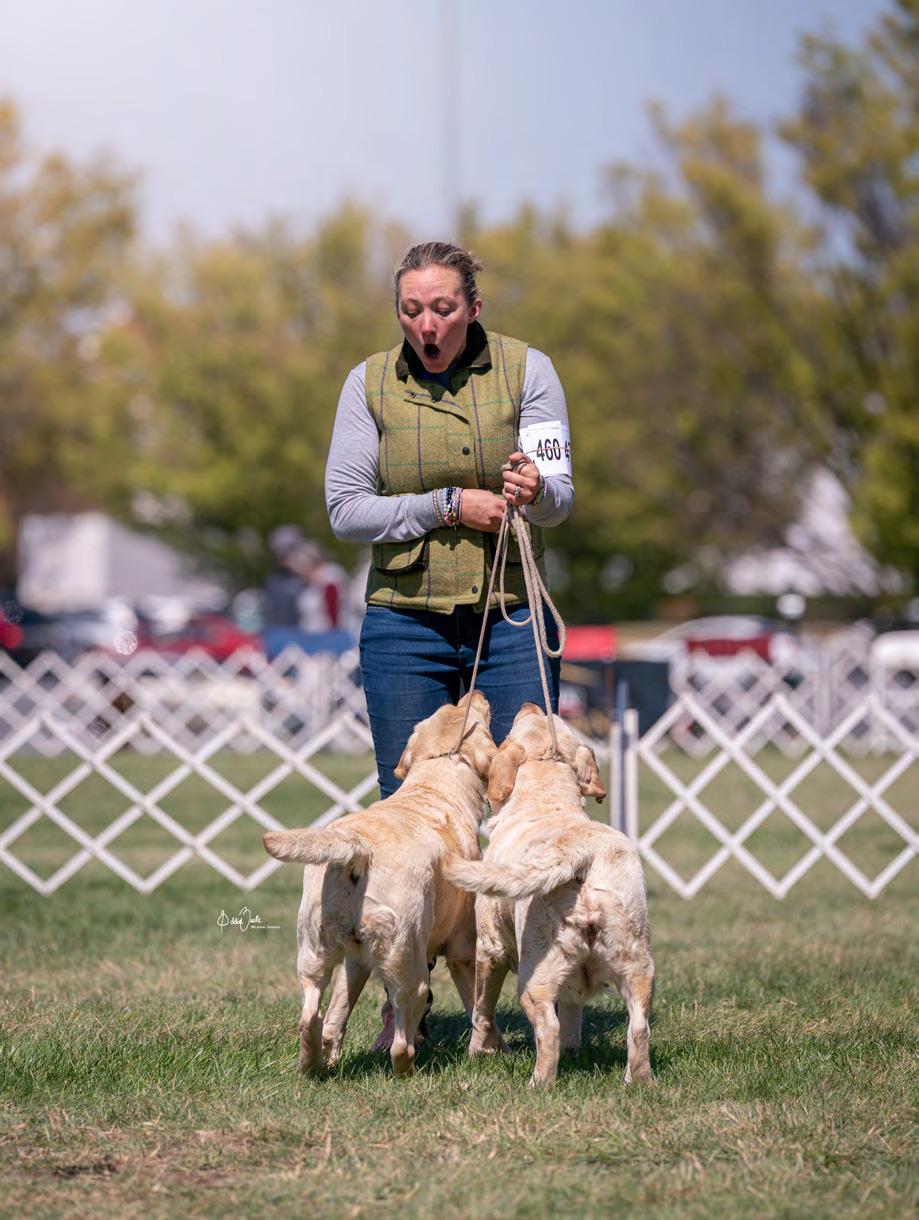



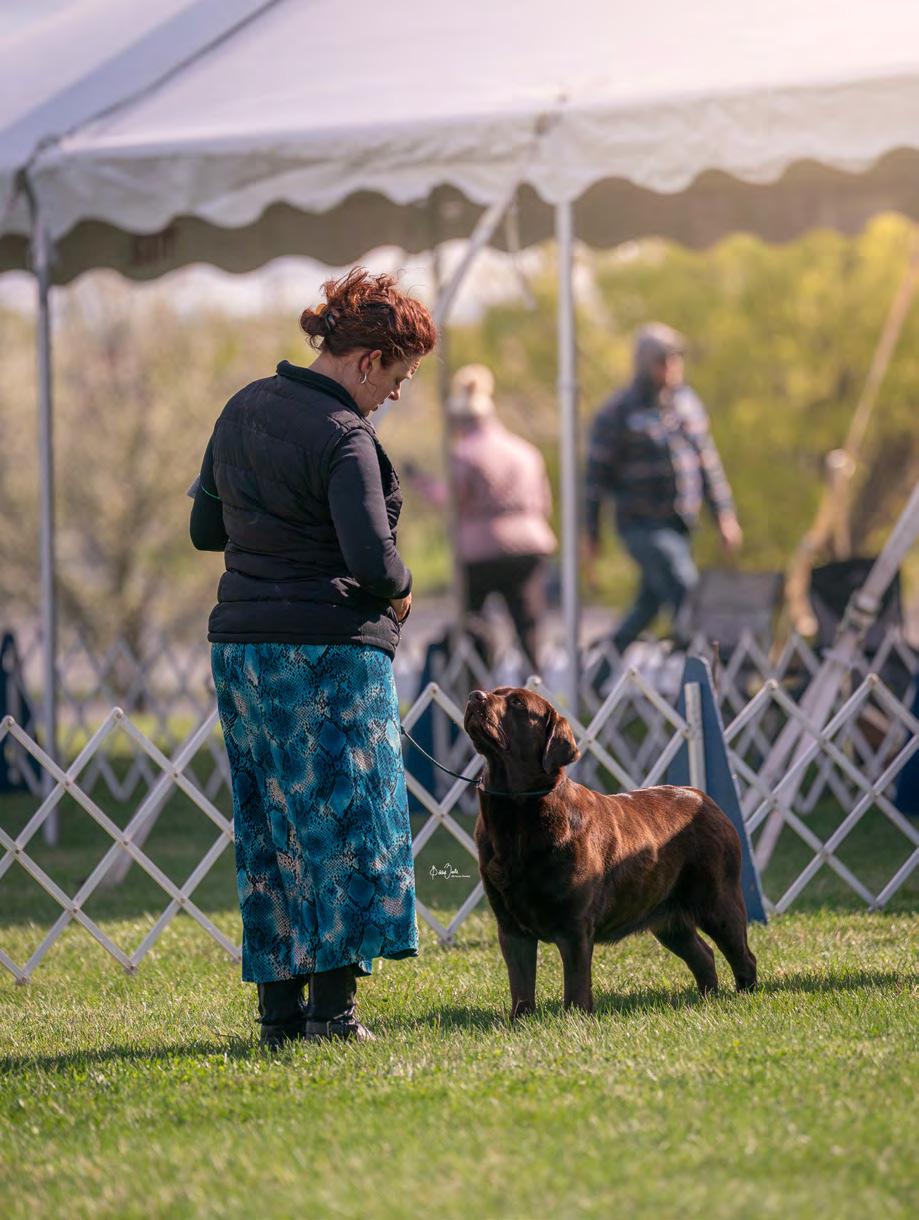

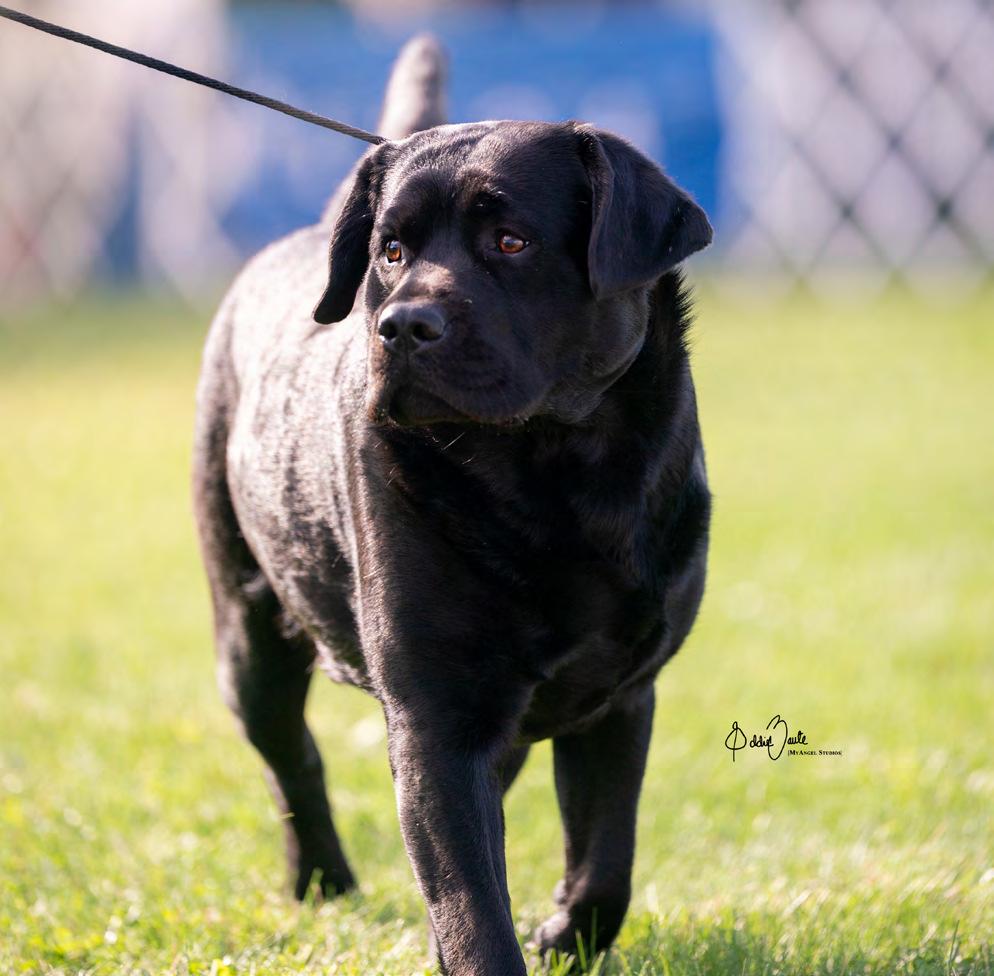
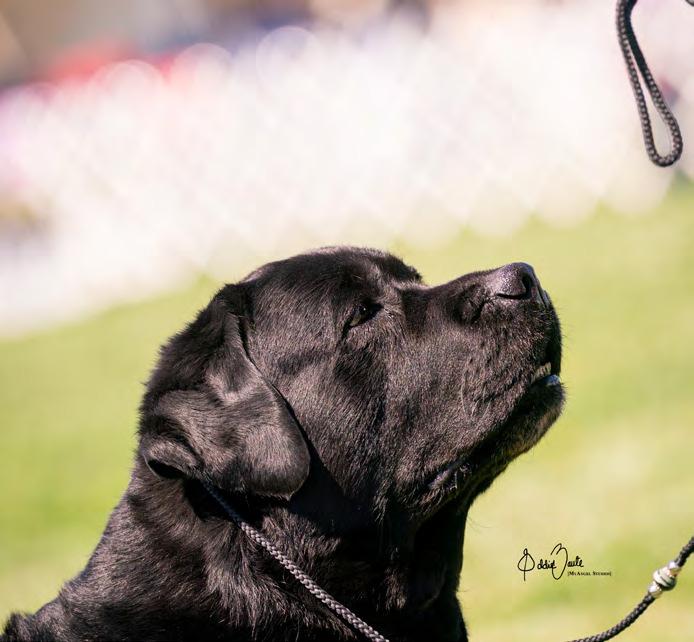
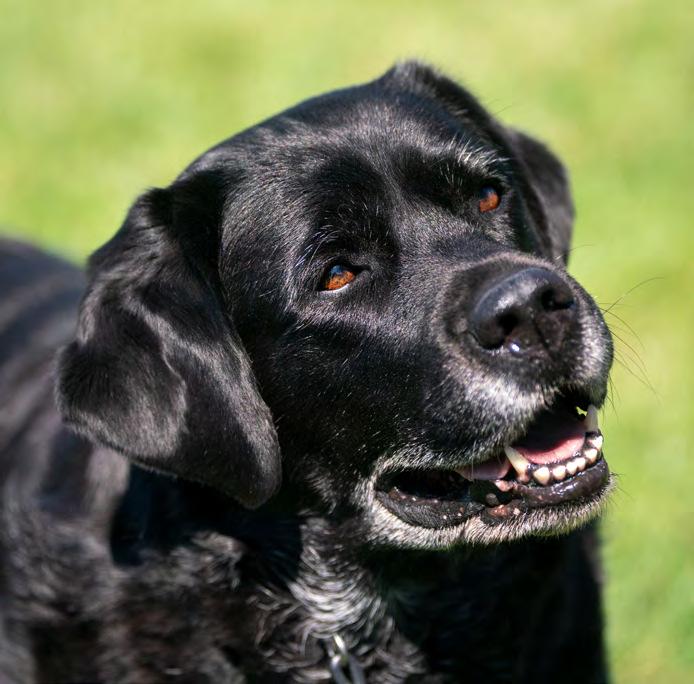






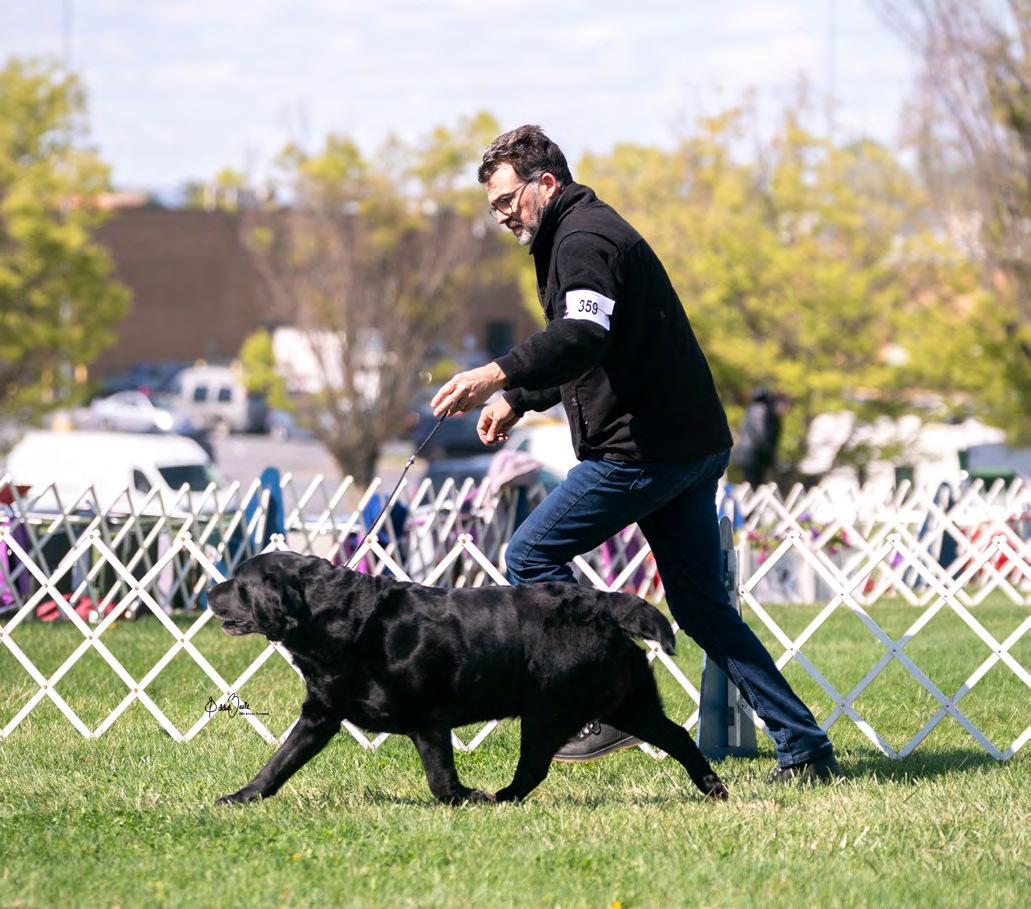






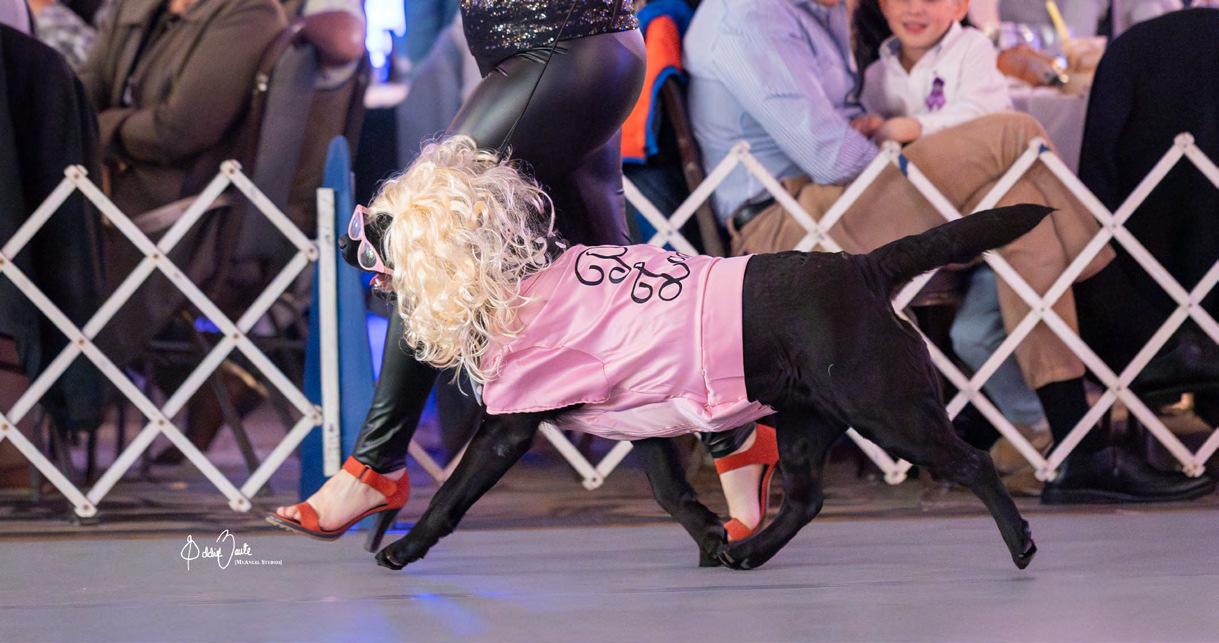

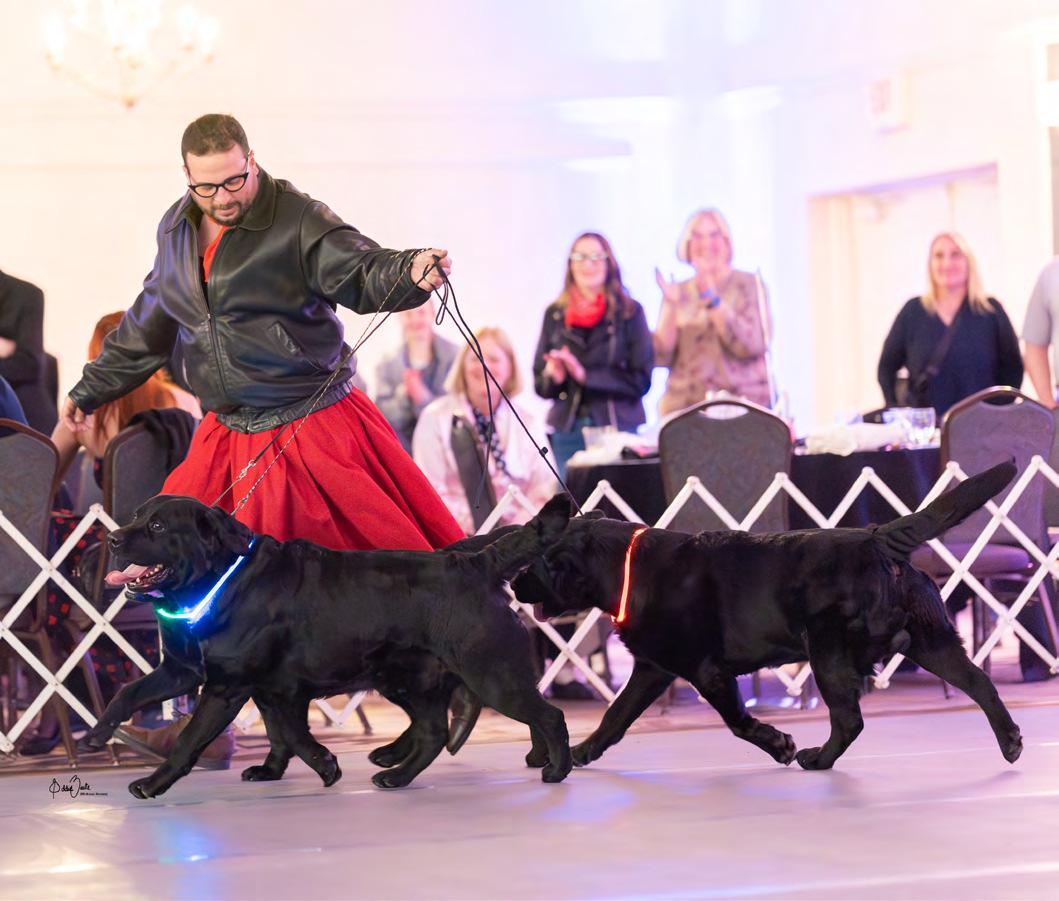
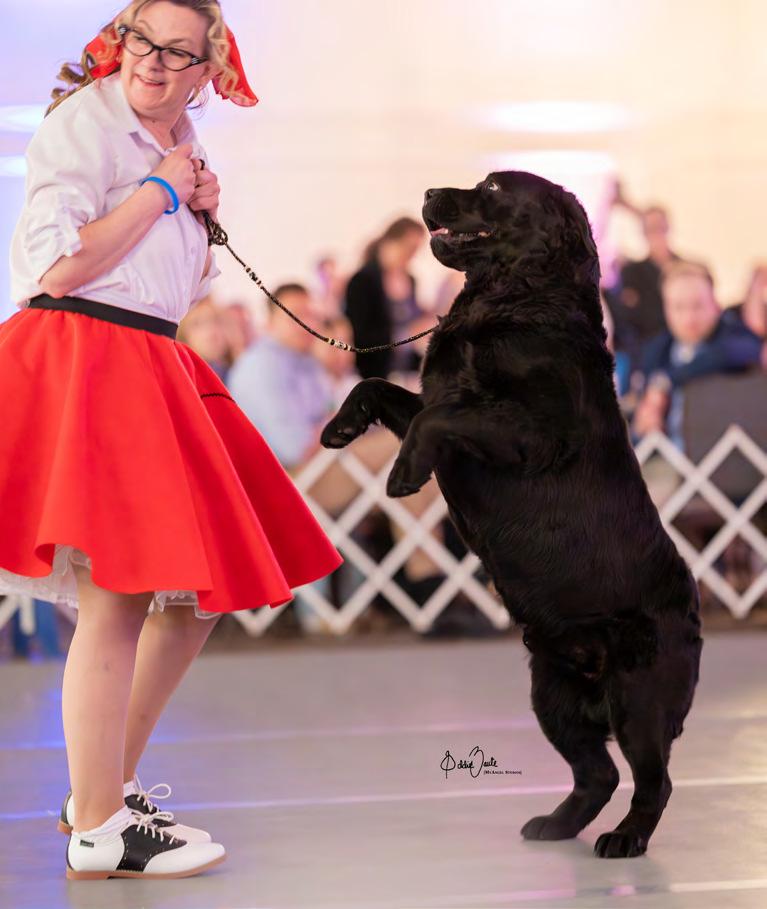


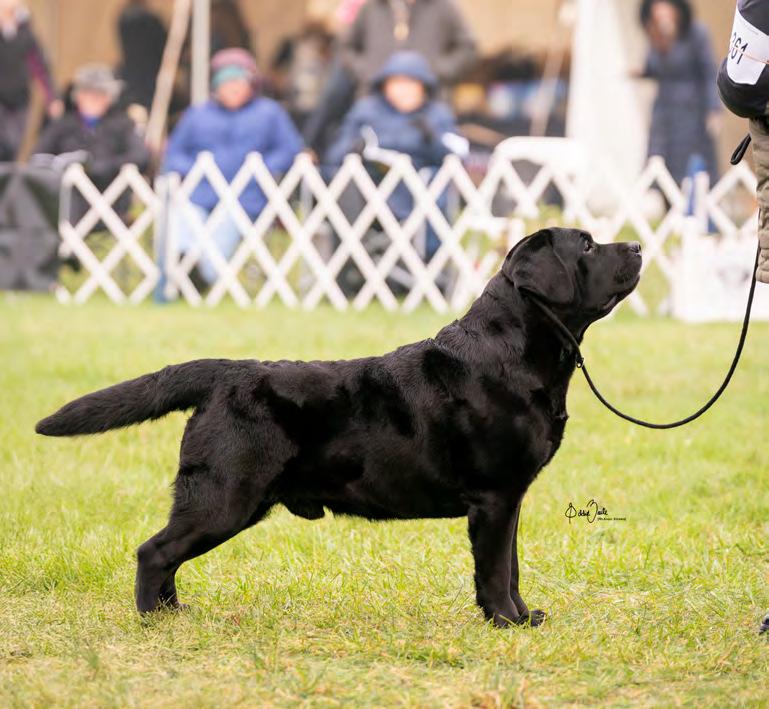






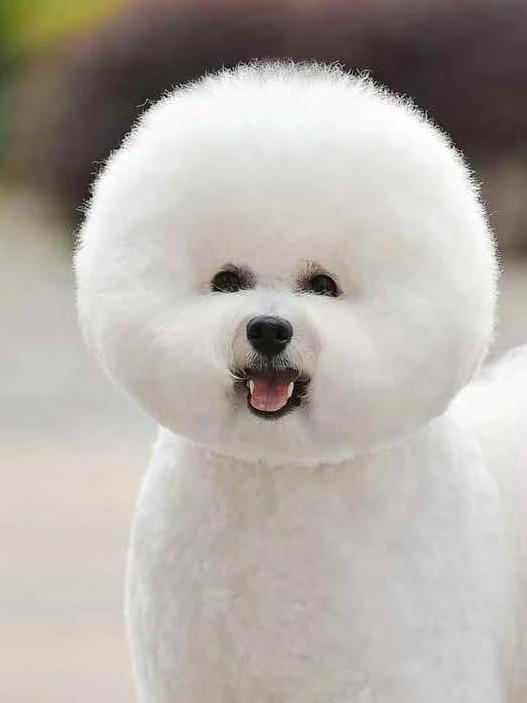

Havanese
Maltese

Tell us about your kennel name—what’s the story behind it?
The name of my kennel is Extraordinary, which reflects my unique understanding of the breed. When I first came up with the name, I wanted it to express something different—something that stood out. I hope that more people will come to know and appreciate my Bichons in the future.
Did you have any mentors in the past, and do you work with any other kennels today?
I’ve never had a true mentor since I first fell in love withtheBichonFrise.I’vebeenlearningandexploring on my own, trying to find the right direction. Of course, I have friends who offer support and share their knowledge, helping me grow in the world of show dogs. At the moment, I am not collaborating with any other kennels.
What are the most important qualities that define an ideal Bichon Frise in both conformation and temperament?
As a companion dog, temperament is very important for the Bichon. However, in the show ring, both temperament and structure are equally critical. Only by combining both can a Bichon truly shine and be recognized as a top show dog.


What particular qualities of the breed do you wish all judges knew before they step into the ring to judge them?
I hope judges take time to understand both the temperament and the silhouette of the breed. A Bichon’s body should not be too short or too long. The coat should be fluffy and white—like a marshmallow.
Coat texture and preparation are essential in this breed. What qualities make a coat correct for your breed?
The coat should be pure white and well-groomed—it should never look unkempt. Overly soft or limp coats should be penalized, as correct texture is vital to the breed’s overall presentation.
Can you name 3 dogs from the past, not bred by you, that you wish you owned?
There’s only one that truly stands out to me: CH Saks Hamelot Little Drummer Boy.
Have you noticed any concerning trends in the breed, and how do you think breeders should address them?
Yes, I’ve noticed a decline in the quality of movement among Bichons. Many no longer have the mobility described in the breed standard. A key issue is the shortening of the upper arm, which affects their gait. I believe this is a serious concern that more breeders should pay attention to and actively work to improve.
What has been the proudest moment of your career in Bichon Frise, so far?
My proudest moment was when two dogs from my kennel, Scott and Neal, each won Best in Specialty Show (BISS) at the Bichon Frise National Specialty in the U.S. They also earned First Place in the NonSporting Group at the 2025 Westminster Dog Show.
What are your aspirations for your breeding program in the coming years?
Finding the right Bichon is the first step. Then, proper grooming can make a dog look like a million dollars. With the right training, you and your dog can become a perfect team in the ring.
What are your hobbies and interests outside of the world of dogs?
I enjoy cooking and growing flowers. Whenever I have time, I love taking road trips with my dog—just the two of us, exploring together.

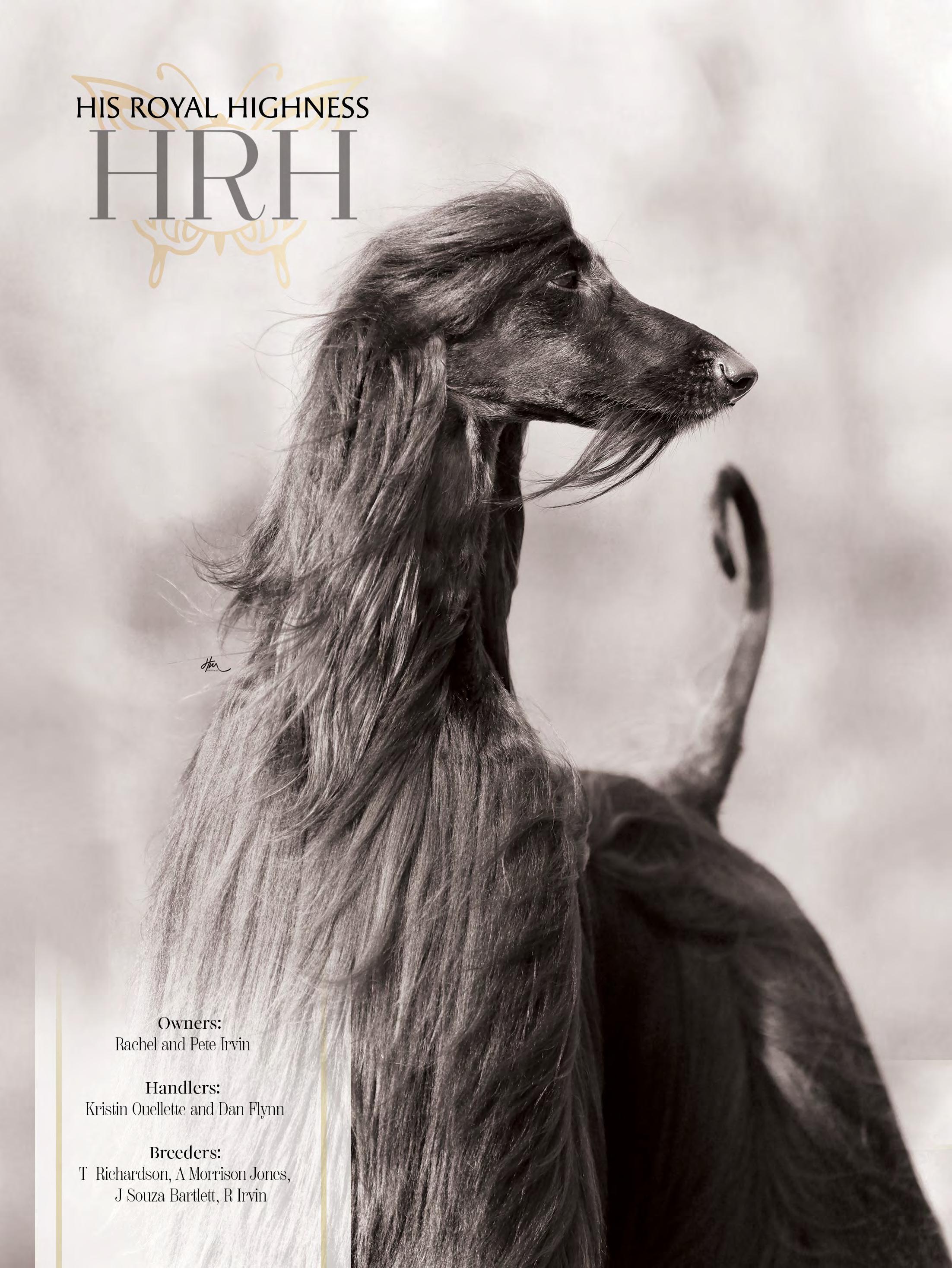




How did you first become involved with the Bichon Frise, and what attracted you to the breed?
I was given a CKCS for my 10th birthday. One of my mom’s hairdressing clients showed Tibetan Spaniels and suggested that I might enjoy “having a go” at showing. We attended a ring training club, and it was there that I had my first encounter with a Bichon Frise.
There, sat on a lady’s lap, was a white fluffy dog with coal-black eyes and a big black button nose. When the lady put the dog on the floor, it jumped up onto its back legs and begged like it was dancing. I was captivated. I continuously begged my parents for a Bichon, as my Cavalier wasn’t really a good specimen.
Ann Lee (Warmingham), who was also a client of my mom’s, managed to purchase a litter brother and sister. The bitch turned out to be the foundation Bichon for the Warmingham Kennels, and yet again, for me, the brother wasn’t as good. It took two more purchases before I finally got my show dog. Simway Simply Simon was my heart dog. Not a huge winner, but nonetheless he was my teacher, my best friend, and the dog who taught me to win with gratitude and lose with good grace.
Tell us about your kennel name—what’s the story behind it?
My kennel name came from the combination of my name, my first husband’s name, and my mom’s name: LIsa MARTin christINE—LIMARTINE. I met my first husband at the ring training club when we were teenagers, as his parents showed GSDs. He did show my Silky Terriers, but never the Bichons.
Did you have any mentors in the past, and do you work with any other kennels today?
It was quite hard in the late ’80s and early ’90s as a young adult, trying to show a breed that was developing at a rapid pace, with some very powerful breeders dominating the big awards.
Wendy Stretfield & Sally Wheeler of the Leander kennels, Vera Goold and Derek Chiverton (Leijazulip),
Myra Atkins (Kynismar), Jackie Ransom (Tresilva), Geoff Corish, and Michael Coad (Pamplona) were all to be admired for their breeding type, although each differed and focused on different attributes within the breed.
I had a short break from breeding Bichons in the late ’90s, as my other breed—the Silky Terrier—was taking up a lot of my time with huge success. However, after the passing of Ann Lee, her husband Lawrence approached me to see if I would help him continue breeding the now-successful Warmingham Bichons.

I was privileged to breed, own, and show the last Warmingham champion (CH. Warmingham Say What You See), who gained her crown at Crufts 2011. Sadly, six months earlier, Lawrence had passed away himself, so he never got to witness what he had set out to do—make up one more champion.
Today, with that Warmingham foundation behind me and with careful use of studs with international heritage, I am fortunate to work alongside Michael Coad, with whom I am able to discuss and plan my next generations.
What are the most important qualities that define an ideal Bichon Frise in both conformation and temperament?
The Bichon Frise has core elements that separate it from other similar breeds. The most important is its balance. The Bichon is not a square dog—it is moderately longer than tall. It requires a good forechest and well-muscled buttocks. Body depth should equal leg length (from withers to elbow = elbow to ground).
The head needs to be understood. With the correct proportions, the expression of the Bichon should be soft and kind—you should be able to look into a Bichon’s eyes and fall into its soul.
As for temperament, they are born clowns—always entertaining, always happy and loving, never grumpy or aggressive. They can be stubborn but are usually easily persuaded with food!
What particular qualities of the breed do you wish all judges knew before they step into the ring to judge them?
When judging the Bichon Frise, judges must understand the balance, the correct carriage, and not be afraid to get their hands into the coat to examine the structure of the dog. A correct-textured coat will bounce back into place once the dog is placed on the ground and shakes—or the handler fluffs it back into position.
There are many clever groomers and handlers who can sculpt a beautiful shape. A judge must be confident enough to trust their hands and actually feel the dog underneath.
Pigment must go beyond just black eye rims and nose—halos, lips, and pads are just as important and should be checked as well.
Do you judge? If not, would you like to one day?
I have been fortunate to award Challenge Certificates six times, including two sets at regional club shows. I approach my appointments with the breed standard as my vision of the perfect dog. When writing critiques, I have my breeder/stockman’s hat on. The placed dogs are commended for their good attributes, but I also mention things that could be detrimental and need to be observed.
Coat texture and preparation are essential in this breed. What qualities make a coat correct for your breed?
An important feature of the Bichon Frise is its coat. Although there can be various shades of white, the Bichon must be clean and free from staining.
The texture is soft and silky, with corkscrew curls. There is fine, softer hair with coarse guard hairs among it—but not like the texture of a Poodle. The

curl is required to help make the hair stand off the body, though it’s usually blow-dried straight.
The sheer density and amount of hair allows the Bichon to be scissored into a plush, sculpted shape. The tail hair is much longer, wavy, and slightly coarser, which gives it that plume effect.
Can you name three dogs from the past, not bred by you, that you wish you owned?
• Eng. & Aust. CH. Leijazulip Jazz of Zudiki – A male ahead of his time in the UK. Sadly, he was exported to Australia before he could make any real impact.
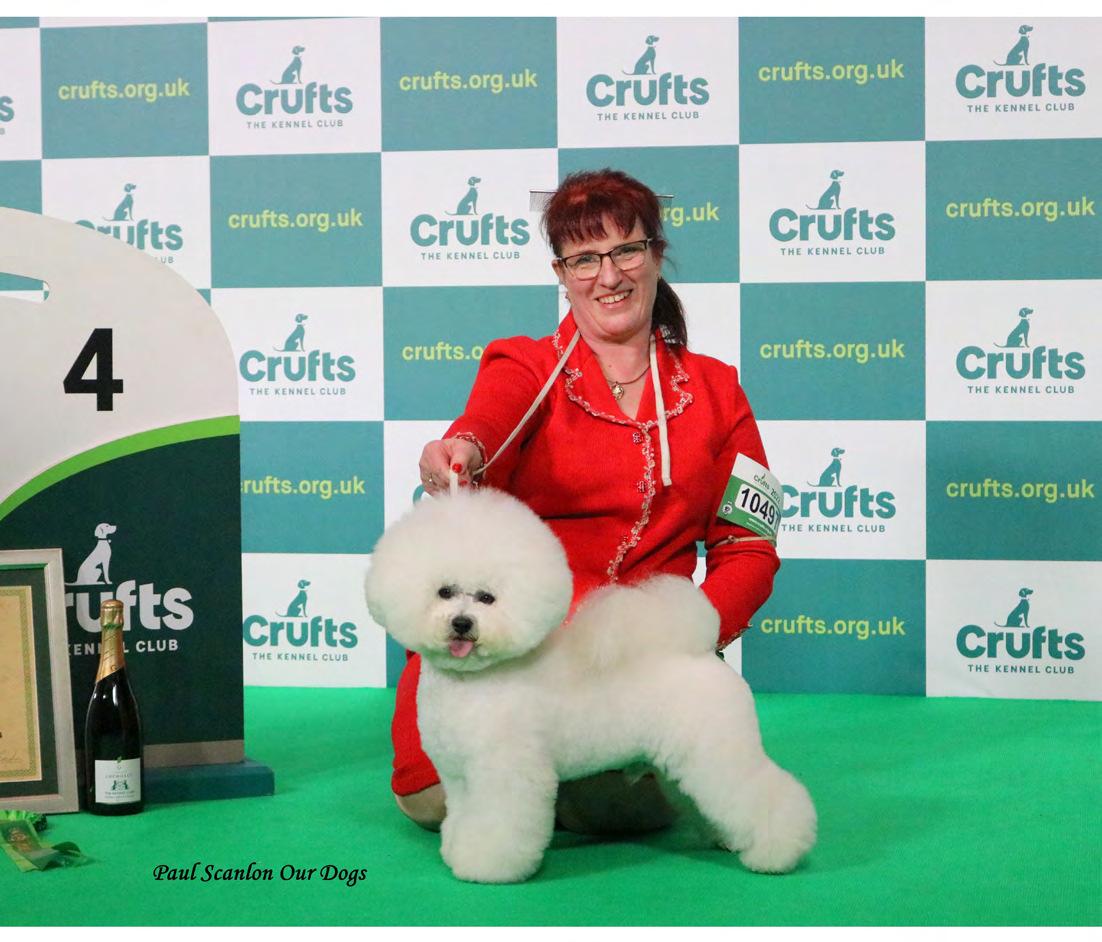

• CH. Paray’s Whiter Shade of Pale – A stunning bitch that caught my eye from two rings away at a show in California. She is the dam of the influential CH. Bodacious Behind Enemy Lines.
• CH. & Eng. CH. Paray’s I Told You So – This dog changed the Bichon in the UK for the better. Though his use at stud was limited, his offspring produced exceptionally well when paired with a variety of UK bloodlines.
Have you noticed any concerning trends in the breed, and how do you think breeders should address them?
Yes, I do have concerns, especially in the UK and Europe. We’re seeing short upper arms, short necks, and straight stifles—likely due to shortening of the second thigh and tall rear pasterns.
Bodies are also losing the spring of rib and depth of chest, giving a tube-bodied appearance with overly long legs. These faults can be seen as early as 8 weeks, so breeders must be critical when selecting their next generation. Once these traits are established, they’re hard to eliminate—and once lost, even harder to get back.
Another issue is the excessive speed at which Bichons are shown. The breed’s gait should be free and easy, with effortless reach and drive. Many are moved so fast that they pitter-patter or move manically and uncoordinated.
What has been the proudest moment of your career in Bichons so far?
I’ve been lucky to develop a strong bitch line in a short time, with most becoming champions.
However, my most successful has been my champion male, Limartine Mr. Blue.
Blue has won 33 Challenge Certificates, was Top Bichon Frise 2022, and Top Stud Dog 2024—with very limited use. The highlight of my Bichon career was when Blue won BOB at Crufts 2022 and was placed Group 4 in a very strong Toy Group.
Blue’s legacy continued when his son, CH. Pamplona Rumour Has It (owned by Michael Coad and Rich Smith), won Top Dog 2024 and BOB at Crufts 2025.
What advice would you give to newcomers interested in breeding or showing Bichons?
For newcomers who wish to show and eventually breed, I strongly recommend attending as many championship shows, breed events, and seminars as possible. Talk to breeders, ask questions, arrange kennel visits, and see as many Bichons in person as you can.
Don’t be fooled by social media. Learn as much as you can. Once you think you know what you want, and your mentor agrees you’ve done the research properly, be patient. If that breeder believes in your commitment, they may entrust you with a dog.
Remember, breeders pour their lives into their programs. They need to be confident in your intentions and trust that you’ll continue their work with integrity.
What are your hobbies and interests outside of the world of dogs?
Unfortunately, due to breeding and showing two toy breeds, my life is pretty much full. However, I am a foodie, and I love to cook or eat out whenever I can. I also enjoy event organizing—especially when it comes to venue dressing, as I love crafting. I guess that’s why I love the breed nationals: good food, good friends, good fun, and most importantly, good dogs.

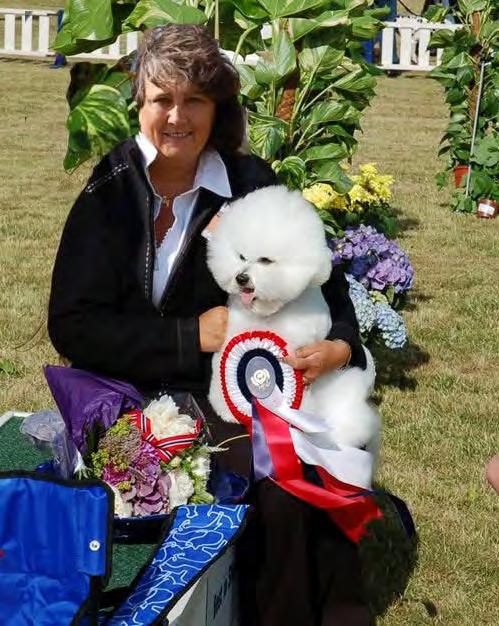
How did you first become involved with the Bichon Frise, and what attracted you to the breed?
I first got involved in the breed because I had Standard Poodles and wanted a small dog, perhaps a Toy Poodle. My husband—whom I listened to at the time—said, “No, no, no.”
The Bichon was a very new breed in Norway at that time, and I happened to see an advertisement and a
picture in the newspaper. (My God, who buys dogs from newspapers? Well… I did!) I had two small children, one Standard Poodle, and an Old English Sheepdog at the time.
After a lot of convincing, my husband finally agreed to come with me to look at the puppies—and from that moment, we were sold on the breed. We bought a little monster of a girl who became a champion quite quickly, as there wasn’t much competition at the time. After her, we bought her half-brother, Multi Ch. Violar Excellent Rhapsody, who became the first Bichon Frise to win Best in Show at an international dog show held by the Norwegian Kennel Club.
And with him, the story of Petit Ami began.
Tell us about your kennel name—what’s the story behind it?
Well, it’s a short story. I originally wanted my kennel to be named Violar, but the Norwegian Kennel Club— which is very strict with kennel names—said no. So I went with my second choice, Petit Ami.
Did you have any mentors in the past, and do you work with any other kennels today?
Yes, I had a mentor at the time—Randi Narvesen. She was primarily known for her Rough Collies, but she also had a few Bichons. She taught me a lot about breeding. She always said, “You can’t get a better harvest than the field you sow in,”and she taught me the importance of having a strong bitch line, which has been absolutely vital to my success.
Yes, I work with breeders around the world, which I think is essential for constantly improving my dogs.


What are the most important qualities that define an ideal Bichon Frise in both conformation and temperament?
Well, my secret is that I always have a picture in my head of my ideal Bichon. That image follows me when I breed, groom, and judge Bichons.
For me, health is very important, followed by overall proportions in both head and body. Of course, movement matters—it doesn’t help to be super pretty if the rest isn’t right. A well-angulated dog can move proudly and effectively, especially when the temperament is great. It all comes together.
The black eyes and pigmentation are the icing on the cake. It’s very, very important that breeders work to preserve that.
What particular qualities of the breed do you wish all judges knew before they step into the ring to judge them?
I wish—and hope—that judges truly know the breed points. General construction alone is not enough. It’s the breed-specific points that distinguish the Bichon from other breeds.
Do you judge? If not, would you like to one day?
I don’t, and I’ve never wanted to.
Coat texture and preparation are essential in this breed. What qualities make a coat correct for your breed?
The Bichon should have a soft, dense coat. The density of the coat is very important to achieving the powderpuff look.
Can you name 3 dogs from the past, not bred by you, that you wish you owned?
From the very beginning of my time with this breed, I adored Tiopepi Mad Luie. I was lucky enough to become the owner of his daughter.
Another favorite was CH Paray I Told You So. He was my biggest favorite at the time he won, and I’m happy to say I still have him in my pedigrees today.
I’ve loved many dogs, but I think these two were my standouts. Time has changed, and so have types, but I still feel warm thinking about those two dogs.
Have you noticed any concerning trends in the breed, and how do you think breeders should address them?
Yes,Ihave.First,pigmentation—toomanypeoplearepainting dogs.That’saseriousconcern.
Then there’s proportion—too many long and low dogs. Breedersneedtopaycloseattentiontothelengthofthefront legs.Wemustpreservethecorrectoutlineofthebreed.
What has been the proudest moment of your career in Bichons so far?
That would be when I was Top Dog All Breeds in the Norwegian Kennel Club (NKK) with my Multi Ch. Petit Ami’s Devil’s Rose. She’s the only Bichon ever to have managed this.
What advice would you give to newcomers interested in breeding or showing Bichons?
They need to learn from the old, successful breeders— not necessarily just Bichon breeders, but breeders in general. And they need to learn about pedigrees. That knowledge is key.
What are your aspirations for your breeding programme in the coming years?
I think I need to keep something as a secret.
What are your hobbies & interests outside of the world of dogs?
My family, friends, painting, knitting, sewing—and dog shows, of course!



How did you first become involved with the Bolognese, and what attracted you to the breed?
WegotourfirstBolognesewhenLottenwas4yearsoldand wanted her own dog. Growing up in a doggy household, she was surrounded by the family’s dogs, who at the time were Labradors, Lagotto Romagnolos, a Curly Coated Retriever, a Border Terrier, and Grandma’s Miniature Schnauzer. Lotten was adamant that she should have her own dog—one she could take on walks by herself (without a grown-up also holding the lead)—a princess’ dog.
Fredrika first took note of the small, white, tousledlooking dog when the first specimens were imported to Sweden during the 1980s and started following the breed’s development both in Sweden and internationally. She was fascinated by the breed’s rich history as an elevated pet among the aristocracy.
Tell us about your kennel name—what’s the story behind it?
Fredrika has been a Bowie fan since 1970—and still is—so she chose the name he gave one of his best early albums for a Labrador litter in 1985. It was essential that the name should be suitable not only for Retrievers!
Did you have any mentors in the past, and do you work with any other kennels today?
Our first Bolognese, CH Chantli’s No. 1 Sparkling Joy, came from Åsa Jensen, now Gyllenglimma. She truly had an eye for a dog and started making waves as she imported several dogs from Italy and began to show more of the correct type in Sweden. She was instrumental in getting Fredrika into the breed and also in educating her in the fundamentals of taking care of the Bolognese coat.
Fredrika’s old friend and great cynologist, Renée Sporre Willes, engaged herself in helping with interpretation of the breed standard and contacts in Italy in the late 1990s—foremost Maria Luisa Friggi of kennel Radamantino. She has supplied us with several of our foundation bitches over the years, contributing to our strong foundation of six different bitch lines. Our exchange has truly been beneficial for both of us, as we have also supplied her with breeding material over the years.
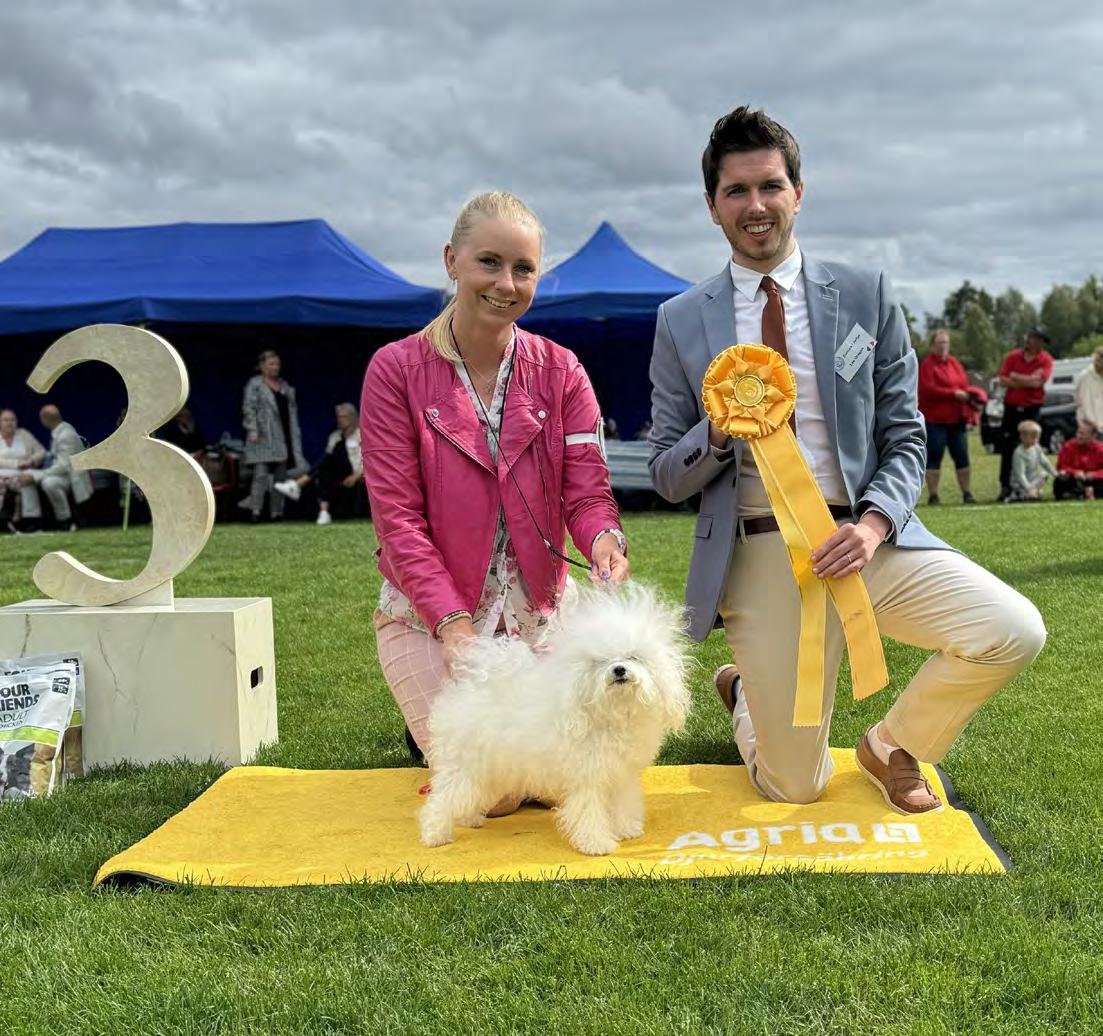

What are the most important qualities that define an ideal Bolognese in both conformation and temperament?
A square, compact body, a broad flat skull, and the ivorycolored coat with its natural lift. The temperament is best described in Italian, “poco invadente”, meaning that they are not intrusive in their way of socializing. They are social and love getting to know new people as well as meeting old friends, but they would never stoop so low as to beg for attention. However, they will make their presence known and are always open to snuggles.
What particular qualities of the breed do you wish all judges knew before they step into the ring to judge them?
The Bolognese should be a squarely built, quite cobby dog with a structured coat that stands out from the body, forming flocks—or what we call crinkles—and giving a natural appearance. This is the first general impression.
When going into details, it is important to note that the eyesshouldbeofadarkocher.Thereshouldbeadistinct difference between the black pupil and the brown iris. This gives the dog a depth in the gaze. If the dogs have black irises, their gaze becomes flat. The color of the coat should be solid white, preferably ivory. In dogs up to two years of age, the ears and sometimes parts of the body can have an orange-brown (biscuit-colored) tone.
Do you judge? If not, would you like to one day?
Lotten is authorized by the Swedish Kennel Club and FCI to judge Poodles (all sizes), Bichon Frisés, Bichon Havanese, Lhasa Apsos, and Shih Tzus. She hopes to include the Bolognese and other members of the Barbichon family.
Coat texture and preparation are essential in this breed. What qualities make a coat correct for your breed?
The most important part of the Bolognese coat is that it should be presented as naturally as possible.
The coat is made up of two different types of strands. The first strand is what we like to call primary hairs— they are quite coarse and thicker. The other type is softer and more woolly, and it makes up the majority of the coat.
The coat gets its typical crinkles when the soft, woolly strandsenfoldthethicker,strongerprimaryhairs.These crinkles can vary in thickness and in how well-defined they are, but they should be evident. An important trait is that these crinkles start right down at the skin. If not, the coat might have been prepared.
Can you name 3 dogs from the past, not bred by you, that you wish you owned?
Tommy, one of the most influential stud dogs in the breed’s history.
Radamantino Lisa, a very beautiful female who appears in the pedigrees of many of our dogs today.
• This is a weird one—we don’t know the name of the third dog! But both of us immediately chose a dog from the 1930s that we would have liked to lay our hands on. It was owned and possibly bred by Nadia Colomba, known for her Maltese under the kennel name Electa. The photo we’ve seen of this dog shows everything we look for in a Bolognese.
Have you noticed any concerning trends in the breed, and how do you think breeders should address them?
Lack of angulation in the hindquarters as well as overly narrow thighs. The Bolognese should be, as stated above, a squarely built dog, which means it can’t have as much angulation as a rectangular dog. This does not mean, however, that they should be completely straight in the rear.
The lack of angulation behind also leads to narrow thighs, which is quite concerning, as the Bolognese is a sturdy and cobby dog—they need to have the foundational structure to carry their bodies.
What has been the proudest moment of your career in Bolognese so far?
Oh wow, there have been so many over the years— World Winners, European Winners, Group winners, and Best in Show winners. But if we had to narrow it down, it would probably be Crufts 2014, where CH Hunky-Dory Bulldozer won Best of Breed, his half-sister CH HunkyDory Inevitable was Best of Opposite Sex, and their aunt CH Hunky-Dory Per Fortuna won a huge Open Class judged by Mrs. Zena Thorn-Andrews.

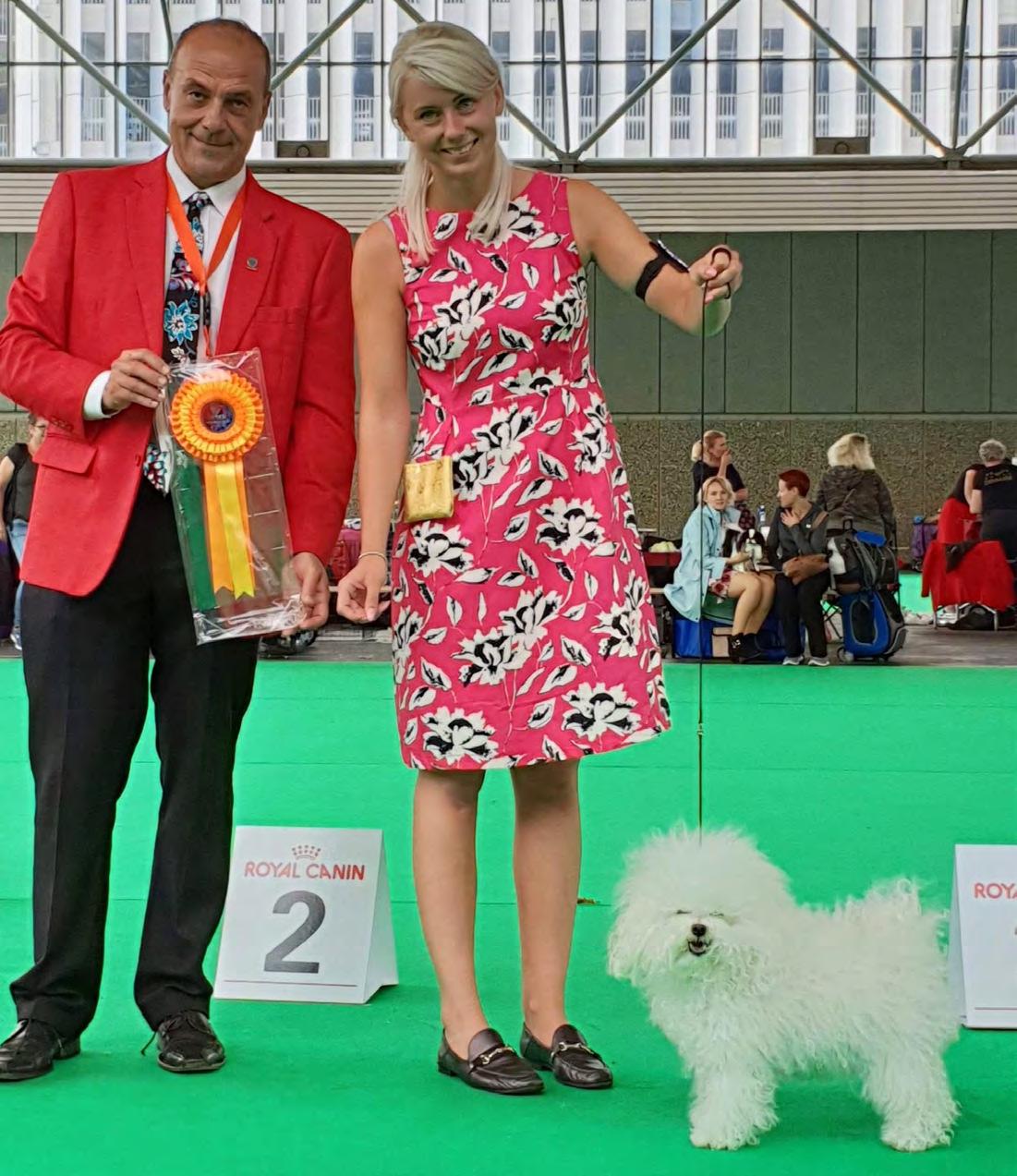

What advice would you give to newcomers interested in breeding or showing Bolognese?
Welcome to the breed! You have chosen wisely. The Bolognese is a wonderful breed with lots of history under its wings. Educate yourself on the breed, get in contact with several experienced breeders, and try to form your own opinion.
Be prepared to be inclusive when choosing breeding material by safeguarding the genetic diversity we have, but also to be selective when choosing the right puppies to keep and move forward with.
What are your aspirations for your breeding programme in the coming years?
Genetic variation is, in itself, of major importance to us. We have several bitches that we plan to mate to maintain the genetic variation we have strived for, all while trying to preserve breed type and correct conformation. If we make the right decisions when choosing keepers, we will hopefully also continue to bring top specimens to shows!
What are your hobbies & interests outside of the world of dogs?
Fredrika is a keen gardener, and of course, she gets a lot of help from the doggies in this endeavor! Lotten is an avid fan of figure skating, keeping up to date with most competitions around the world—no matter what time zone they’re in.



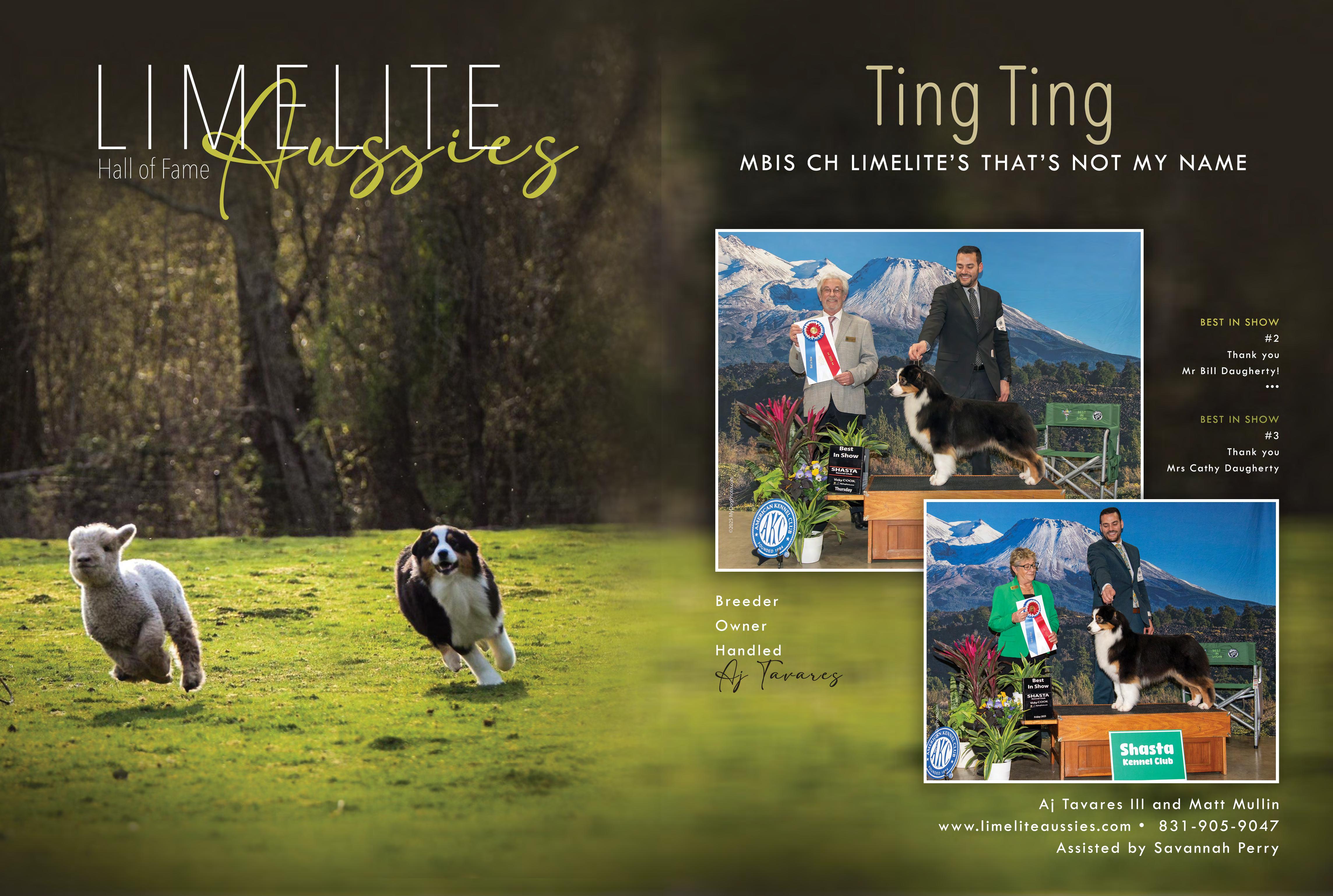

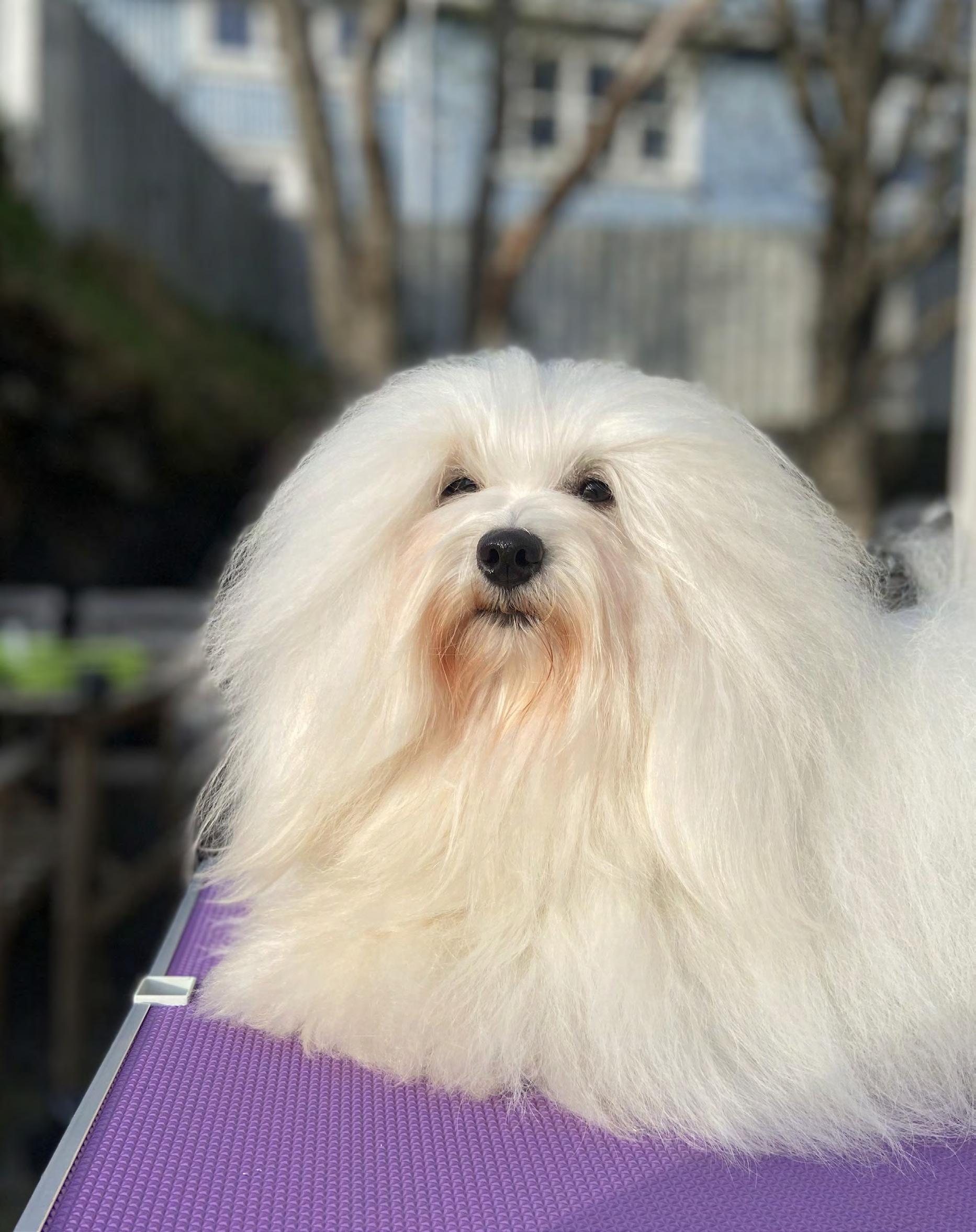
Tell us about your kennel name—what’s the story behind it?
My kennel name comes from the Malagasy language. Tia means “to love,” and Oroka means “to kiss,” and those, I think, are the very qualities that the Coton de Tulear has—lots of love and kisses.
Did you have any mentors in the past, and do you work with any other kennels today?
No, I did not, and that was a true struggle for me in the beginning. That is why I have always tried my best to
be very accessible to anyone interested in the breed or breeding in general, and all that comes with our lovely dogs. I sought guidance and knowledge wherever I could, especially from people with diverse experiences in other breeds. That started my constant enthusiasm for learning new things and gaining insight from other people’s experiences—if they are willing to share—and I always try to do the same in return.
I work with some amazing people who are taking their first steps in the breed and aiming to have their own breeding programs one day. I also have a very good relationship with a dear friend, Bettina Martens in Denmark, from Kennel Coton CPH. That friendship is priceless and has given me so much.
Whatarethemostimportantqualitiesthatdefineanideal Coton de Tulear in both conformation and temperament?
Happy and outgoing characters are my number one and two in terms of temperament—also curiosity and a bit of their clownishness. In conformation, a lovely, sweet expression on a beautiful head is to die for, but also a sound silhouette, starting from the nose to a wellcarried tail, with a lovely soft coat—that’s the whole package for me.
What particular qualities of the breed do you wish all judges knew before they step into the ring to judge them?
Most of the judges I’ve met in the ring have a very good understanding of the breed. If I were to name a few things, then it would be tail carriage, straight front legs (upright), and to keep an eye on the “no uneven movement” as stated in the standard. If that is in place, then there is something to look at in terms of construction.


Do you judge? If not, would you like to one day?
No, I do not, but I would be happy and honored to do that one day.
Coat texture and preparation are essential in this breed. What qualities make a coat correct for your breed?
This is also so important to the breed. I live in Iceland, and we have harsh weather almost seven months of the year—rain, snow, and always wind. That impacts even the softest coats and often makes the outer parts very harsh. But with good conditioning and quality products, we are often able to keep the coat in the right condition.
A soft and supple coat is common in puppies and youngsters, but when the Icelandic weather hits, it’s very important to have all the right tools in your belt to maintain the correct coat.
Can you name three dogs from the past, not bred by you, that you wish you owned?
What comes first to mind are Rifelin Julius Cesar, James, and Italique. I would love to just touch them and see them.
Have you noticed any concerning trends in the breed, and how do you think breeders should address them?
Yes, I have seen some Cotons becoming too tiny, with light bone and light bodies, and muzzles that are too short. For a breeder to fix that takes a few generations with the right dogs in the breeding stock.
Also, the HUGE, huge coats can feel a bit more “glam,” but they’re not more important than a regular, correct Coton coat.
What has been the proudest moment of your career in Coton de Tulear so far?
My proudest moments are with my homebred multiwinner female, Tia Oroka Kráka. She will be 7 years old this summer, and what we’ve done together in the show ring is something I will forever cherish. At the toy dog specialty shows, she has been BIS 1 twice, and BIS 2 and BIS 3.
In August 2021, at a double show held by the Icelandic Kennel Club, she was Group 1 both days and BIS 3. That is my best achievement and the most memorable series of moments—I can’t pick just one.
Kráka has had three litters, and her latest is here on the floor with me right now at 6 weeks old. Her daughters from two previous litters—Náð, Köllun, and Kvika— have made me immensely proud in the show ring. Two of them have even beaten their mum at one show, something that had only happened once before in her entire show career since 2018. That must say something about the direction we’re going in with our breeding.
What advice would you give to newcomers interested in breeding or showing Coton de Tulear?
Meet the breed with the breeders, and have a huge passion for coat care. Make it a steady point in your week.Havetherighttoolsandgatheralltheinformation you can from breeders who are actively showing their dogs. Practice makes perfect, and don’t hesitate to ask questions—the worst thing that can happen is someone says no, and then you just keep going.
Be respectful—to the breeders who trusted you with their offspring, and to the lines your dogs come from. There have been many years of blood, sweat, tears,

and endless thought behind the dogs in your pedigree. Choose well and wisely, but don’t be too critical or judgmental—keep an open mind.
What are your aspirations for your breeding program in the coming years?
We’ve had the honor and pleasure of adding an amazing male, Coton CPH’s Wild at Heart—aka “Carlo”—to our breeding program two years ago, from my dear friend Bettina in Denmark. We have some very nice girls and boys from a few litters by our females, and we are very excited about the future with them. We can’t wait to see how they develop.
We also hope to have more additions from overseas in the next two years—so the future looks happy and exciting.
What are your hobbies and interests outside of the world of dogs?
Hiking and travelling, mostly inland, and both activities are usually done with our dogs. I love knitting, and my family means everything to me, so time with them is precious.

Tell us about your kennel name—what’s the story behind it?
The name Cotonroyal combines two key elements: the breed’s distinctive cottony coat and its noble origin. Historically, the breed was known as the Royal Dog of Madagascar, as they were exclusively companion dogs to the local aristocracy.
Did you have any mentors in the past, and do you work with any other kennels today?
I didn’t have a formal mentor when I started, but I was fortunate to meet many wonderful people from whom I gained valuable knowledge about related breeds, breeding, and exhibitions. Show experiences, particularly meeting breeders and exhibitors across the EU, UK, and USA, helped shape my approach. Today, I work with several kennels and breeders who share my philosophy and vision for the breed—from France, Denmark, Finland, the UK, the USA, and Canada.
Whatarethemostimportantqualitiesthatdefineanideal Coton de Tulear in both conformation and temperament?
While the standard is quite detailed, I believe the most important qualities that make a first impression on us are a very soft, long white coat, harmonious body proportions, sound movement, and a cheerful, friendly, and adaptable temperament.
What particular qualities of the breed do you wish all judges knew before they step into the ring to judge them?
Beyond the general points like size, proportions, angulation, and movement, judges should be familiar with the distinctive features of the breed: a typical head with a lively, gentle expression, a slightly arched topline, a correctly carried tail, a soft white coat with a cottony texture, and a temperament that shines through in the ring.
Do you judge?
If not, would you like to one day? Yes, I am an FCI international judge for Group IX, and I’m continuing my education to judge other breeds and groups.


Coat texture and preparation are essential in this breed. What qualities make a coat correct for your breed?
The coat is one of the breed’s defining features—it should be soft, dense, and cotton-like in texture, never heavy or rough. It must be clean, knot-free, and without stains, and may reach the ground. Grooming is essential for presentation, but excessive shaping—especially of the head or topline—can distort the dog’s natural image. The goal is always to present the dog as naturally as possible, showing correct proportions and coat characteristics.
Can you name 3 dogs from the past, not bred by you, that you wish you owned?
Three dogs I greatly admired are: Cartoonland’s Vroum (Crufts Winner 2012), Ilana of The Swift Cotton (World Winner 2012), and Diwal du Castel de la Roche aux Fées (Crufts Winner 2013).
Have you noticed any concerning trends in the breed, and how do you think breeders should address them?
Inrecentyears,I’venoticedaconcerningdeclineincorrect breed type. There’s a growing trend toward excessive coats, which hide poor structure or proportions but are often rewarded in the ring. Sadly, many breeders seem to prioritize commercial appeal over the breed standard. Seriousbreedersmustaskthemselves:Arewefocusingtoo muchonasingletraitwhileneglectingessentialones?And what are the consequences for the future of our breed?
What has been the proudest moment of your career in Coton de Tulear so far?
There have been many meaningful moments, but one of the proudest was winning Veteran Best in Show at the World Dog Show 2017 with my male, Monsieur Raj Karpat
– Mango, under Mr. Weng Woh Chan. The veteran class is specialtome—itbringstogetherdogswithlong,successful careers who continue to present in top condition, even in their mature years.
What advice would you give to newcomers interested in breeding or showing Coton de Tulear?
First and foremost, study the breed standard thoroughly and learn how to properly maintain the coat. If you’re considering breeding, finding a mentor for long-term collaboration is almost essential. For those interested in showing, it’s important to gain as much experience as possible—both in the ring and in grooming. And above all, always be honest and critical of your own work; there is always room for improvement.
What are your aspirations for your breeding programme in the coming years?
I’m thrilled to be collaborating with two talented young ladies from Denmark (Vendia Cotons). Over the years, we’ve achievedbothqualityandconsistency,whichwe’rededicated tomaintaining.Lookingahead,weplantoenrichourbreeding programbycollaboratingwithNorthAmericanbreedersand incorporatingnewlinesintoourprogram.
What are your hobbies & interests outside of the world of dogs?
For many years, I was involved in flying—from gliding and sport flying to earning a professional pilot’s license. I’ve also been passionate about cultural heritage and have worked on replicating painted beehives for museum presentations, drawing on my background in the arts. However, over time, most of my hobbies have taken a backseat to my furry family and my growing commitment to the world of dogs and cynology.
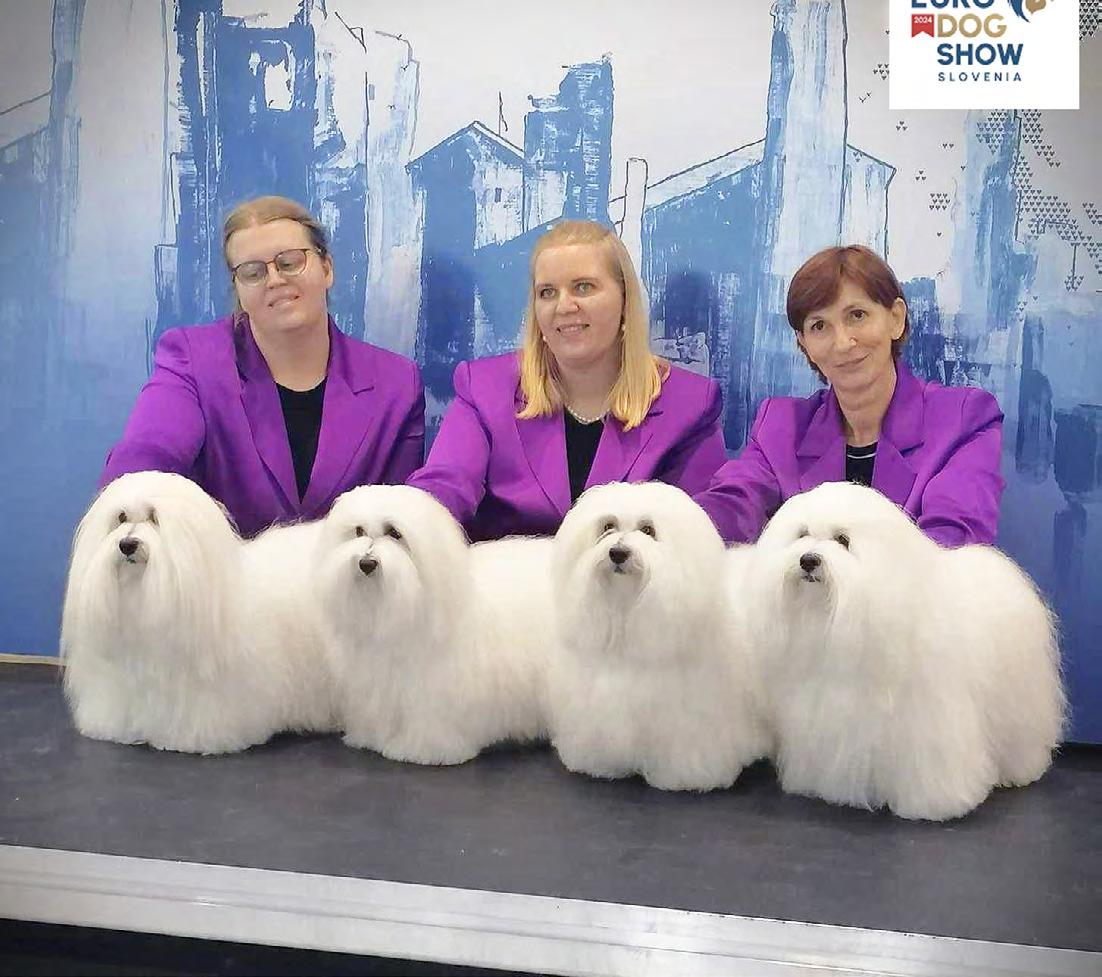


When did you get involved with dogs, and how did you first come across Havanese?
My husband, Rafe Schindler, and I each had dogs when we were children. Friends of ours adopted a Havanese in 2005, and that was our introduction to the breed.
Which dog do you consider the foundation of your breeding program?
Our foundation bitch was Wincroft’s Pride and Joy de la Isla. Her sire, Ch. Starkette Pride of Wincroft (“Buster”), and her maternal grandsire, Ch. Los Perritos Wee
Pantaloons (“Pan”), are legendary sires who stamped their offspring with their indelible type. Julie Vogel’s Ch. Oeste’s Outlaw of San Juan (“Billy”), who was a Buster grandson, was crossed with Buster and Pan daughters, and their descendants are the foundation of our success.
How many kennels do you co-breed with, and who are they? How important has cooperation between breeders been over time?
We co-own and co-breed our dogs with Julie Vogel, owner of Oeste Havanese, and Taffe McFadden, a professional handler. We value their perspectives and our collaboration with them. Our dogs are a team effort. Cooperation between breeders is extremely important. We have tended to work with other breeders who have outstanding dogs and long-term experience in the breed. We find that working with people whose values align with ours leads to the best outcomes.
Who has been your biggest inspiration and support? Did you have mentors, and how important has mentoring been throughout your time as a breeder?
Actually, our Havanese have been our biggest inspiration and support! Their joie de vivre, love, and beauty inspire us daily. As for humans, I’d name Julie Vogel and Taffe McFadden. Moreover, it’s important to listen to and consider the perspectives of others, even if you don’t agree with them.
What are the main characteristics of the dogs you breed? What are your goals for your breeding program?
Our goal is to breed Havanese that have correct conformation and movement, breed type, and the happy yet intelligent personalities for which Havanese


are known. We hope these characteristics are the ones for which our Havanese are recognized.
Have you changed the type of dogs you breed over the years? If so, why? How many lines have you used so far? How many generations of your kennel’s name appear in the pedigree? How many dogs have you bred to date?
Our goal is to continue to breed the type, conformation, and movement for which the Buster and Pan lines are known—not to change the type. I have no idea of the number of generations or dogs we have bred; we breed for quality, not quantity.
How have Havanese changed over time since you first got involved with the breed?
Yes, they have changed. Havanese tend to have less bone and substance, don’t move straight coming and going, and have lost some breed type. Judges can only judge the dogs shown to them, but the best dog in the ring may not be the consistent winner shown by a professional handler.
Is there anything you would like to change or improve in the breed in general?
I wish there were a way for newer people breeding and showing to learn about the great dogs and bloodlines of the immediate past, as well as correct conformation and movement in general. There needs to be more focus on the subtleties of breed type and not just a rising topline (which tends to be exaggerated).
What do you consider your greatest achievement as a breeder?
We’re very blessed to have acquired a great foundation bitch and to have partnered with Julie Vogel and
Taffe McFadden. Most people would say our greatest achievement is breeding the top-winning Havanese of all time, GCHP2 Oeste’s In the Name of Love, otherwise known as BONO. He was the No. 1 Dog All Breeds in 2019, the winner of 100 All-Breed Bests in Show, and a multiple specialty BISS. Aside from BONO, the cross of Billy (see above) to Buster daughters produced our best individuals, including GCHG Oeste’s Flirt’n with an Outlaw (“Feliz”), the top-winning Havanese of 2013, and GCH Oeste’s Stealing the Starlight (“Lucia,” the dam of BONO), who won an all-breed Best in Show in only two months as a special.
Are there any specific stud dogs or brood bitches in your breed, either in your country or globally, that you think have had a significant impact on the breed?
Hard to say.
Please mention 2 or 3 Havanese that are not owned, bred, or shown by you, which you particularly admire. What do you most admire about each of them?
I don’t want to offend anyone by inadvertently excluding a dog worthy of mention, nor would I speak to dogs that are currently or have recently been shown.
Every breed has its common problems. What is the most common issue in your breed, from a breeder’s point of view?
Havanese are generally great little dogs—healthy and happy. I think the greatest risk is from a lack of knowledge in so many areas.
What is the most important aspect that you would like a judge of your breed to be aware of?
Havanese are not a head breed. Please put up the dogs

with substance, correct movement, and breed type. Don’t feel compelled to put up a handler with a topwinning dog.
If you were in charge of everything regarding dog shows, what change would you make first?
Generally, I would like judges and breeders alike to have a more expansive knowledge about breed type, correct movement, and conformation.
What is the most important piece of advice you would give to serious young breeders?
The question was cut off. For anyone starting out in the breed, we would say go out of your way to learn from the early breeders, as well as respected professional handlers and judges. Visit as many breeders as you can, even if this practice is frowned upon. Do not seek to acquire a show puppy from a breeder simply because the breeder recently bred a top-winning Havanese, has bred a large number of champions, is your friend, or is in your area. Start out with the best you can get and breed to the best available.

Tell us about your kennel name—what’s the story behind it?
Our kennel name, Flordecuba, was conceived by our foundingpartner,Dr.AndreaAkkad.Oneofourearlylitter name themes was “Flowers of Cuba” or “Flor de Cuba.” Andrea loved the name so much that she decided to adopt it as our kennel name. Initially, the kennel name was coowned by my mother, Olive, and Andrea, and I joined at a later date.
Did you have any mentors in the past, and do you work with any other kennels today?
Ihavemany!Firstandforemost,Andreahasbeenawealth of knowledge and support. She is an encyclopedia of pedigrees, and as a doctor (and the UK Breed Health Coordinator), she has a strong background in health matters.
Also, despite some of the negative connotations surrounding social media, I have to say Facebook has been a wonderful resource to connect with breeders and longtime exhibitors around the world. I have been very luckyto“meet”somewonderfulpeopleonFacebook,allof whomwereverygenerouswiththeirtimeandknowledge. In particular, Karin Doringer (Callunavias Havanese) in Sweden, Brigitte Jesperson (Jesperson’s Havanese) in Denmark, and Amri Aguilera (Don Habanero Havanese) in the USA. Both Karin and Brigitte taught me so much aboutEuropeanHavaneseandthehistoryandbackground of their pedigrees. Amri shared invaluable information on the history of the breed in its native Cuba, as well as photographs of early Cuban Havanese. He also taught me the nuances of what makes a Havanese a typical Cuban Havanese.
We were very fortunate to acquire a lovely girl from Sandy andKevinMcCabe,Heartland’sHavaneseintheUSA,whose pedigree goes back to Brigitte Jesperson’s old lines. Candy has been an excellent addition to our breeding program, and she has produced two champions from her first litter.
We also work closely with Peter and Dorothee Dombrowski (Pedoro Havanese) in Germany and Senija Hodzic (Bailemos Havanese) in the Netherlands. Senija is a wonderful support, and very knowledgeable about pedigrees and health-related matters, as well as a great historian of the breed.
Being able to learn from and discuss the breed with so many people across so many countries has given me a broad knowledge of the breed. To learn where the breed comes from—how and why it was developed—truly gives one an appreciation for the breed today.
What are the most important qualities that define an ideal Havanese in both conformation and temperament?
It’s important to point out that there are a number of differencesinbreedstandardsaroundtheworld.AsIdivide my showing between the UK and FCI countries, I will be referring specifically to those standards. There are several significant differences between these standards and the American Kennel Club standard for Havanese, which must be borne in mind when both judging and breeding.
The outline of the Havanese is incredibly important. One should be able to recognize a Havanese from a distance, basedonthatoutline.Aproudheadcarriage,coupledwith a high tail carriage, together with a slightly longer-thantall proportion, presents a silhouette that is undeniably that of a Havanese.
The head is also critical. The FCI and UK standards specify that the muzzle should be equal in length to the skull, the eyes should be almond-shaped, and the ears should be set just above the level of the eye. The ears should have discreet folds that lift when the dog is alert. Ears should not be large—the tip should reach no farther than the outercorneroftheeye.Thisisimportant,asitcontributes totheuniqueexpressionoftheHavanese.Theskullshould be flat or very slightly rounded, never domed.
TheUKstandarddescribesthetoplineaslevelwithaslight rise over the loin, while the FCI standard describes it as straight with a slight arch over the loin. Both descriptions
are consistent with a level topline and a well-muscled loin—the arch or rise coming from musculature, not structural exaggeration. The back should not be roached. In the UK and FCI countries, the topline should not rise from the withers to the rear. A rising topline, resulting in a slightly higher rump, is prescribed in the American Kennel Club standard. This is just one of many differences between the standards, and judges and breeders need to be aware of them.
Finally, the Havanese should have a friendly and outgoing temperament. Their happy disposition should be evident when moving, with a light-footed and elastic action. Movement should be true and easy—they should not flash their pads in the show ring in the UK or FCI.
What particular qualities of the breed do you wish all judges knew before they step into the ring to judge them?
I wish more judges would pay attention to the size of the ears and the shape of the head, and in particular, feel for the folds in the ears. While this may seem trivial to some, these details are essential to the overall shape of the head and the Havanese expression.
Similarly, a tail that is carried in a high, arched plume over the back—not tightly curled or flat against the back— helps create an outline that is unmistakably Havanese. There should be enough space for a judge to fit their hand between the tail and the back.
Also, both the FCI and UK standards describe a dog that is slightly longer than tall. While people may interpret “slightly” differently, the FCI defines this as 4:3, and both standards measure the length from point of shoulder to point of buttock. The length is not measured from the withers to the buttocks, as in some other breeds. The leg
length should ideally be equal to the distance from the elbowstothewithers—theHavaneseshouldnotbeashortlegged dog. Dogs that are too long in back and too low on their legs are not desirable and should not be rewarded by judges.
Do you judge? If not, would you like to one day?
Yes, I judge all breeds in Group 7 (Setting/Pointing Gundogs)andsomebreedsinGroup9(ToyandCompanion Breeds) at Championship level under the FCI system. I’m very fortunate to have been involved in showing dogs since I was a child and have had great opportunities to be involved in breeds in Groups 7 and 8 (Retrievers and Spaniels), which I believe has given me a solid understandingofstructureandtheimportanceoffeatures unique to a particular breed.
I have judged in Ireland, the UK, and Hungary. I was also very privileged to judge Special Classes at the Norwegian Havanese Club’s Specialty Show in 2019 and the Special Awards Classes at the Havanese Club of Great Britain’s Specialty Show in 2018. These classes are similar to the Sweepstakes Classes in the USA.
Breed type, structure, and temperament are very important to me, as well as specific features linked to health. When I judge, I always keep the health and welfare ofthedogattheforefront.Ilovenothingmorethantoseea moderate dog—free from any exaggeration or feature that may impact its quality of life—with a stable temperament, regardless of the breed.
When judging, I take my role very seriously, as I know exactly how much time, money, and effort goes into preparingandpresentingadogforshow.Iamalwaystruly
grateful to the exhibitors who afford me the privilege of judging their beloved dogs.
Coat texture and preparation are essential in this breed. What qualities make a coat correct for your breed?
Coat texture is of great importance. It should have the texture of raw silk. This should not be mistaken for the sleek, silky coat of a Yorkshire Terrier or Maltese, which resembles refined silk. Instead, it should have a slight texture,beporous,andfeellight—neverheavy.Remember, this breed is native to Cuba, so a heavy, woolly coat would befarfromidealintropicalconditions!Thecoatshouldbe light enough to catch the breeze and should ideally have a slight wave.

The Havanese should be shown in a natural coat. The coat should not be sculpted or shaped in any way, nor should it be straightened. No products such as hairspray or gel should be used to hold the coat in place. Remember—the coat should move in the wind; if it doesn’t, the texture is either incorrect or the coat is laden with products. Both are equally undesirable.
However, while dogs should be shown naturally, this is no excuse for poor grooming or coat care—there’s a very big difference between a dog that is well groomed and one that is overgroomed!
Can you name 3 dogs from the past, not bred by you, that you wish you owned?
Thefirstdogthatspringstomindisthetrailblazerthatwas Paloma de Chaponay, owned by the late Heather Ridley. It was Paloma that piqued my mother’s and my interest in the breed. Each week, we would get copies of Our Dogs and Dog World and marvel at the glamorous Paloma. This girl really put the breed on the map with multiple group placings in the UK, and she was the first Havanese to win Best of Breed at Crufts in 2001.
Another fantastic little dog from the same era was Jill Richard’s Chazard Little Andy. In my opinion, this boy is a poster dog for the breed in terms of head, expression, size, and shape. He was BOS to Paloma at Crufts in 2001, and they both enjoyed swapping placings throughout their careers.
Finally, Sandy and Kevin McCabe’s famous Ch Jespersen’s HeartlandHidalgoROMX.HidalgowasbredinDenmarkby BrigitteJespersonandmovedtolivewithSandyandKevin McCabe in the USA. He was the #2 Havanese in the USA in 2006, and #1 Male. He also proved to be a very important
stud dog and produced many great quality champions. We areveryfortunatetohavehisdescendantsinourbreeding program and cannot thank Sandy and Kevin enough for their generosity and trust.
Have you noticed any concerning trends in the breed, and how do you think breeders should address them?
I am very concerned about the current trend towards long backs and short legs. As I’ve mentioned already, the breed should only be slightly longer than tall. Not only is this outline very undesirable and untypical, it’s also not healthy. We know that IVDD is present in the breed, and I fear that by selecting for longer-backed, lower-legged dogs, this problem will be amplified. Breeders should be more discriminating in their selection process.
I’ve also noticed, through my social media feeds, a large increase in Havanese with large, low-set, pendulous ears— almost like a PBGV. In turn, this increases the coarse appearanceofthehead,andskullsareoftenmorerounded or domed, with an expression that differs substantially from that of a typical Havanese. I would urge breeders to pay attention to this, as we are at risk of losing breed type unless we nip this trend in the bud.
Another trend I’ve noticed is ‘generic movement.’ The Havanese should have a happy, elastic, light-footed gait, which gives them a lovely spring to their step. In the UK and FCI countries, the upper arm should be equal in length to the shoulder blade, and angulation should be moderate throughout. The Havanese should not have the excessive reach and drive seen in many show rings across various breeds of late. Breeders should pay attention to exaggerated angulation and strive for balance between the front and rear.
Finally, and perhaps most importantly, I try to frequent many Havanese groups and pages on social media, which helpsmestayuptodatewithtrendsorissuesoftendiscussed by pet owners. I feel breeders should pay close attention to surveys and health reports—particularly regarding conditionssuchasMitralValveDiseaseandIVDD.
What has been the proudest moment of your career in Havanese so far?
I’ve been very fortunate to have had many great days out with my Havanese, but none can compare to winning my first Challenge Certificate (CC) in the breed at Crufts 2016.
In the UK, three CCs are required to earn the UK Championship title. Unlike in many other countries, each dog competes for the CC regardless of whether they are already a champion in the UK. The CC must be won outright—the winner must beat all other dogs, including any UK champions competing. CCs were first available to Havanese in 2015 and were only awarded at seven shows that year (this has since increased to 12 shows in 2020 and 17in2024).
2016 was the second year that CCs were awarded in the breed,andweshowedouryoungboy,Maro,atthetenderage of 19 months in the Open Class. We hoped the show would providehimwiththeexperienceofabig,busydogshowand simplywishedforhimtoenjoyhisday.Wecertainlydidnot expect to take top honours! When he won the Open Class, I was absolutely elated—but it was nothing compared to the feeling when judge Stephen Bardwell handed me the large greenCCcard!MarowentontogainhisUKtitle,andwe’ve since gone on to win many more CCs in the breed, making upnumerousUKchampions,butnothingcomparestothat feeling on that day. It’s a memory I will treasure forever.
What advice would you give to newcomers interested in breeding or showing Havanese?
Read! There are some wonderful books available with invaluable information on the breed. My favourite books are The Joyous Havanese by Katheryn Braund and The Havanese by Zoila Portuondo Guerra.
Iwouldalsoadviseanyoneinterestedinthebreedtospeak with as many people from as many different countries as possible to gain a broad and well-rounded understanding. Mostpeopleareveryfriendlyandgenerouswhenitcomes to sharing information on pedigrees and lines.
Finally, be prepared for grooming to become a big part of your life! The Havanese coat requires daily line brushing and combing, and regular baths to keep them in top condition. This is particularly true during coat change, and many people struggle if they don’t stay on top of their grooming regime!
What are your aspirations for your breeding programme in the coming years?
Our goal is to produce healthy dogs with good temperaments who are typical of the breed. Health and temperament (which one could argue is part of the dog’s overall health) are of paramount importance. We spend weeks and months agonising over pedigrees and lines, gathering information, and running breeding simulations on programmes such as BetterBred to produce puppies that are as genetically diverse and healthy as possible.
We place great importance on health testing, including echocardiograms, annual eye testing, patella testing, DNA testingwithUCDavisandWisdomPanel,aswellashipand elbow scoring.
What are your hobbies and interests outside of the world of dogs?
Outside of the dog world, I am an avid gamer! I’ve been gaming since childhood—sneaking turns on my father’s Amstrad, Sega Mega Drive, and Nintendo. In particular, I enjoy open-world RPGs and action-adventure games. Marioand Sonic are the games I remember most fondly from my childhood. As I got older, I grew to love games from the God of War, The Witcher, Uncharted, and Assassin’s Creed series. More recently, I’ve enjoyed The Last of Us and the Horizonseries.
However, my all-time favourite game is, without a doubt, Red Dead Redemption 2. When I’ve had a bad day or when life gets tough, I escape into the fictionalised world of Arthur Morgan’s 1899 USA and switch off—at least until it’s the dogs’ dinner time!
I also enjoy reading—nothing too heavy. My favourite books are by Irish authors Marian Keyes and Graham Norton. They provide just enough light relief to lift my spirits and help me unwind.

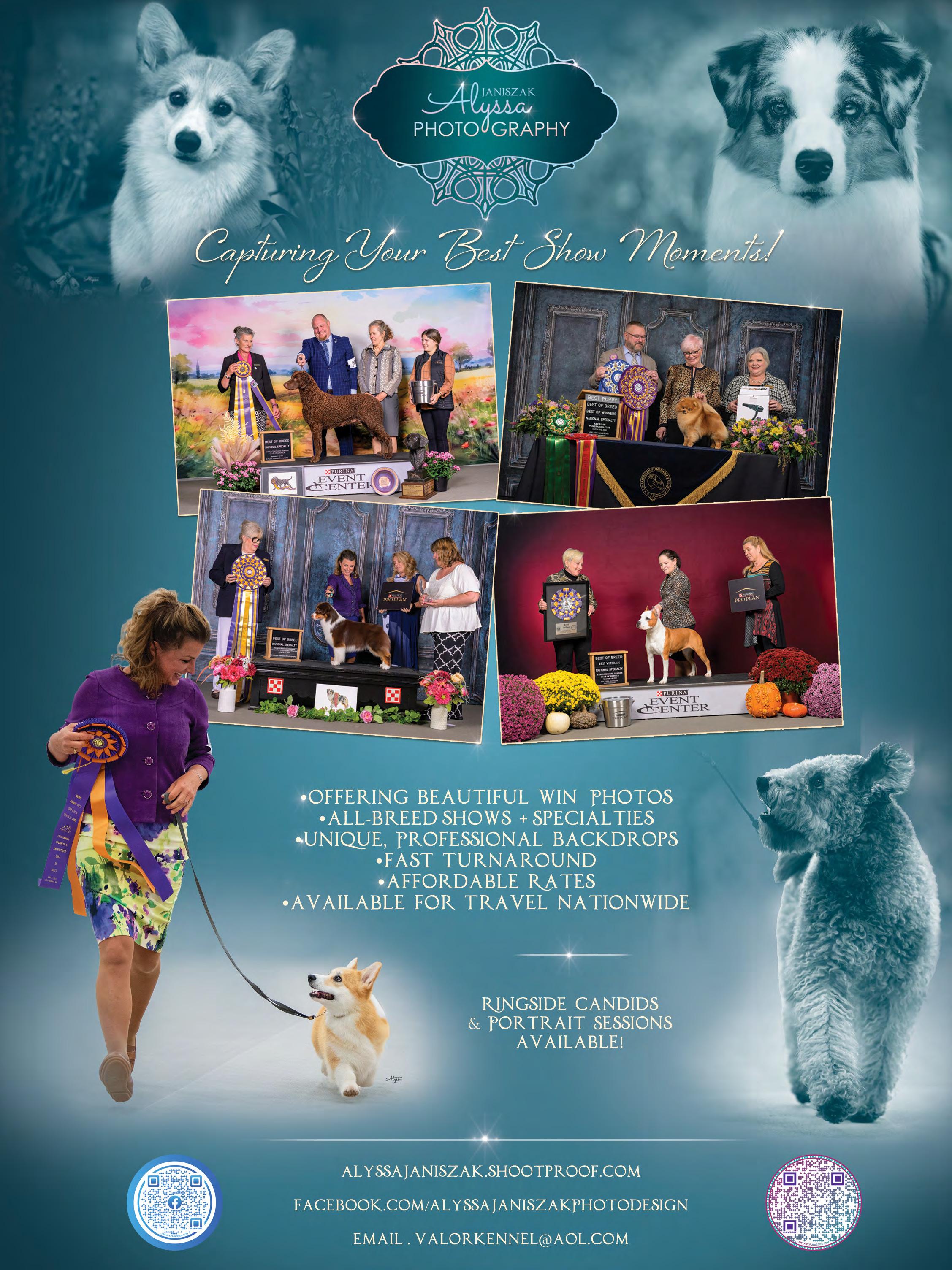
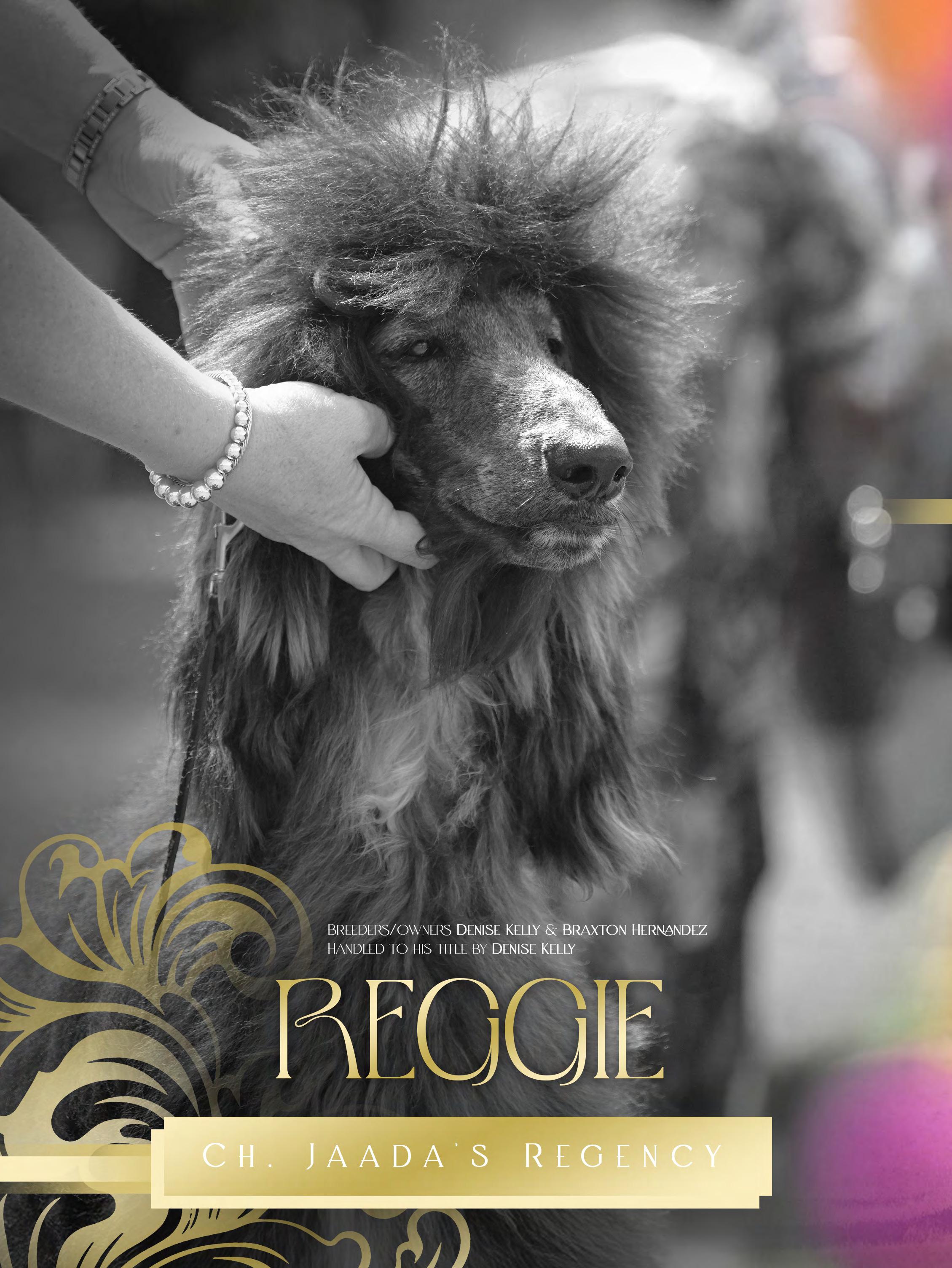



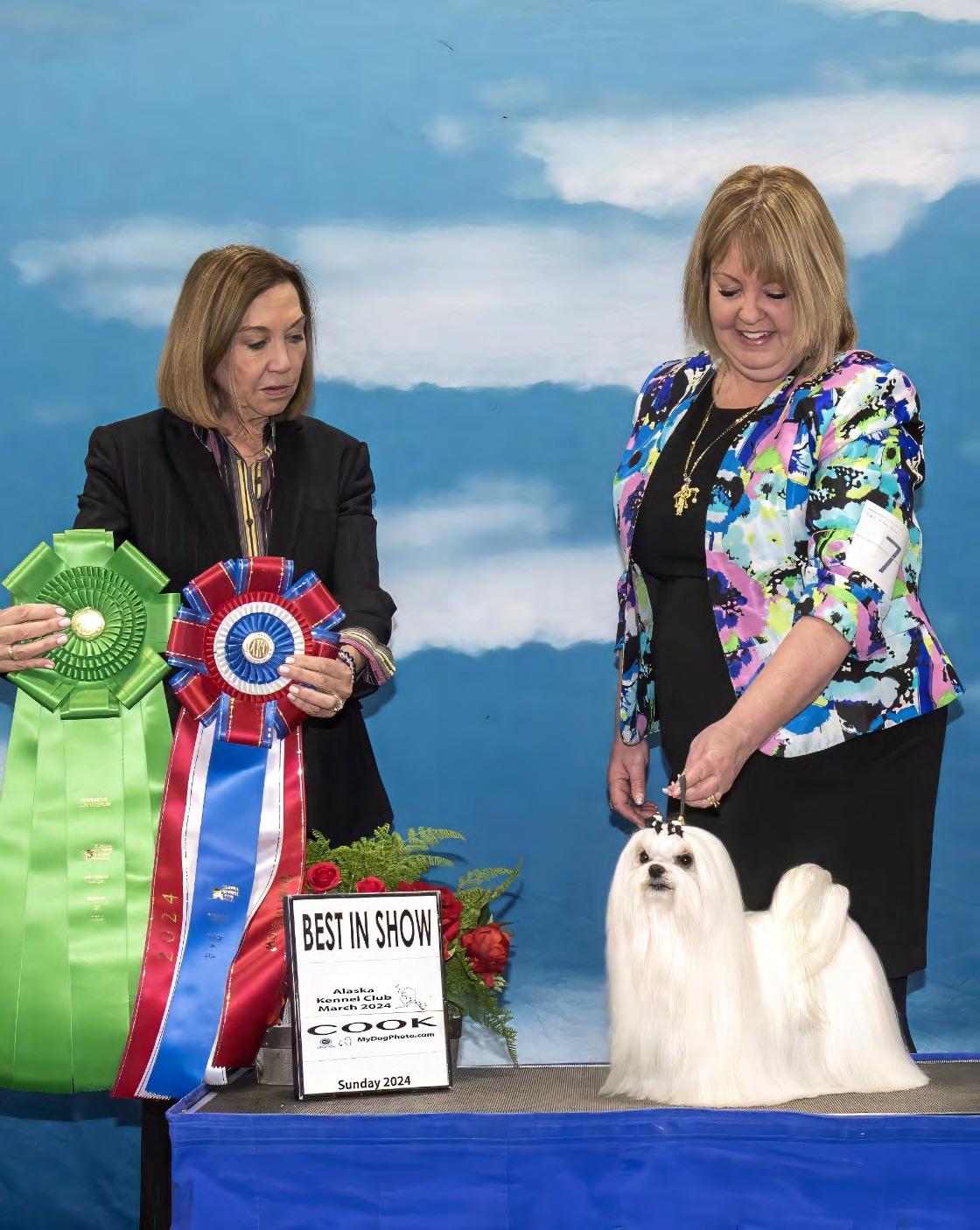
Tell us about your kennel name—what’s the story behind it?
My kennel name happens to be my middle name.
Did you have any mentors in the past, and do you work with any other kennels today?
Eva Gillett mentored me in my breed (Unforgettable Maltese). Tony Christopher and Ralph Price have guided me in learning how to challenge myself and grow beyond exhibiting.
What are the most important qualities that define an ideal Maltese in both conformation and temperament?
Small size, a long, beautiful white coat, and a soft expression—paired with a bold, outgoing temperament.
What particular qualities of the breed do you wish all judges knew before they step into the ring to judge them?
That they are a toy breed, so size matters—and soundness should never be overlooked.
Do you judge? If not, would you like to one day?
Yes, I judge Maltese and Junior Showmanship.
Coat texture and preparation are essential in this breed. What qualities make a coat correct for your breed?
Long, silky, cool to the touch, and straight—with no signs of kinkiness or cotton texture.
Can you name 3 dogs from the past, not bred by you, that you wish you owned?
Marcris Risqué Business, Aennchen’s Poona Dancer, and C&M’s Tootsie Lollipop.
Have you noticed any concerning trends in the breed, and how do you think breeders should address them?
I feel they are getting too large, and straight fronts are becoming increasingly hard to find. Breeders need to stay vigilant about maintaining size and sound structure.
What has been the proudest moment of your career in Maltese, so far?
Winning my first Best in Show with my homebred and home-handled Toro.

What advice would you give to newcomers interested in breeding or showing Maltese?
Be patient, be kind, and know that losing is just as important as winning.
What are your aspirations for your breeding program in the coming years?
To continue breeding consistent, sound dogs with good temperament and health that meet the breed standard.
What are your hobbies and interests outside of the world of dogs?
I have a busy home life and collect tropical plants.


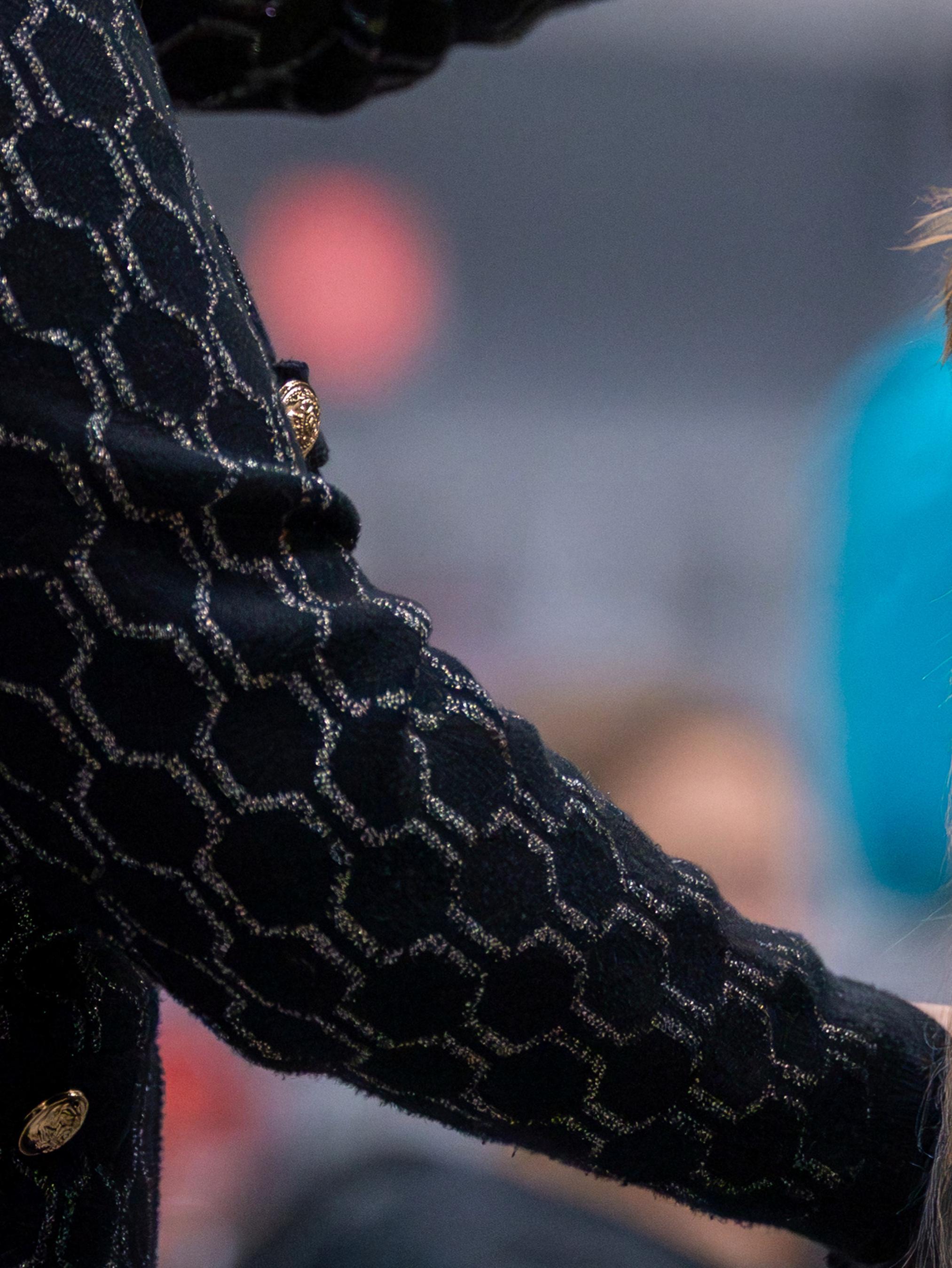
March 30 2025



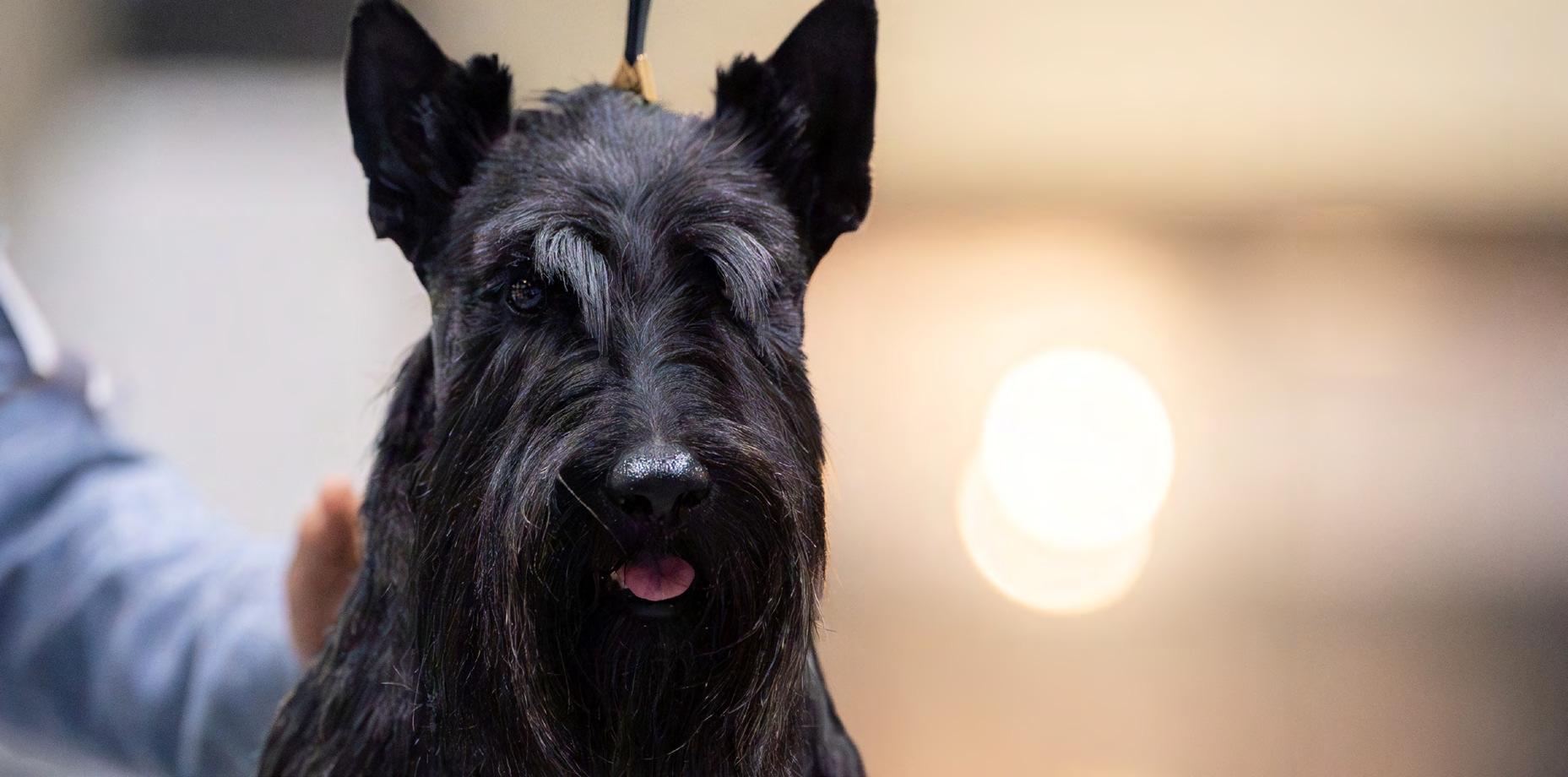
#1 - CH Katyra’s Moon On Fire
Breed: Retriever (Nova Scotia Duck Tolling)
Owner: K & K Hayes & A Pitstick
#2 - GCHS Westlane’s Lightning Crashes
Breed: Retriever (Labrador)
Owner: R Bunce & J Smith
Breeder: J Smith & D Paris
#1- GCH Fetch & Smell Isabela Madrigal
Breed: Beagle 15 inch
Owner: M Pantaleon
Breeder: M Pantaleon
#2 - GCHG DC Abbaio Bushbaby MC ATT
Breed: Ibizan Hound
Owner: S Murphy, S Fuller, L Hotchkiss & V Tippens
Breeder: S Murphy
#1 - GCHP EB The Relentless Pursuit Of Perfection
Breed: Great Dane
Owner: Dr. P & E Bustillo, R Pineiro & E Betancourt
Breeder: E Betancourt, R Pineiro & E Bustillo
#2-GCHG Spicerack’s Not Gonna Let’em Catch The Midnite Rider
Breed: Giant Schnauzer
Owner: J Carr & R Henderson
Breeder: M Adler & R Henderson
#1- GCH Oz’s Run Run Runaway
Breed: Yorkshire Terrier
Owner: L Serafini
Breeder: L Serafini
#2- GCH Marlex Rock Steady
Breed: Miniature Pinscher
Owner: L Uhacz & A Angelbello
Breeder: A Angelbello
#3- GCHB Fortuna Oh Get A Shroom!
Breed: Lagotto
Owner: S Wagner, J Lopes & J & M Rich
Breeder: J & M Lopes
#4- CH Chiem Stip Von Der Leibrucke CGCA [Dog]
Breed: Barbet
Handler: Linda Bellin
Owner: E Figueroa & M Fink
#3 - GCHB Lex Ayur-Es-Sahel
Breed: Azawakhs
Owner: J Winton & L Berezkina
Breeder: L & N Berezkina
#4 - GCHS Karasars Swansong
Breed: Whippet
Owner: K Kuper, N Barthelette, K Mlynar & C Cope
Breeder: K Kuper, N Barthelette, K Mlynar & C Cope
#3- CH Baltazar Sunland Br
Breed: Boxer
Owner: R Gerardo & P Bezerra
Breeder: R, G & P Bezerra
#4 - GCH Ivoss N Kostlich Absolute Flash
Breed: Rottweiler
Owner: D Voss DVM
Breeder: R Chriscoe, E Barnhart-Nasto & D Voss
#3- GCHS Integra Sun Of A Beach
Breed: Italian Greyhound
Owner: T Barnes & M Lucas
Breeder: M Lucas & T Catterson
#4- GCHB Candela Myangel Am I The Drama
Breed: Chinese Crested
Owner: K & G Hernandez, S Fox & U Mencia




#1- GCH Oz’s Run Run Runaway
Breed: Yorkshire Terrier
Owner: L Serafini
Breeder: L Serafini
#2- GCH Marlex Rock Steady
Breed: Miniature Pinscher
Owner: L Uhacz & A Angelbello
Breeder: A Angelbello
#1- GCH Dreamcast Painted Pony
Breed: Tibetan Spaniel
Owner: J Habiger & M Kennedy
Breeder: J Habiger & M Kennedy
#2- Kiyara I’ve Got A Girl Crush
Breed: Poodle (Miniature)
Owner: M Lamb & W Jividen Jr.
#1- GCH Ederra’s I Whistle A Happy Tune
Breed: Pumik
Owner: J Piros
Breeder: M Arechaederra & C Cassidy
#2- CH Sunshine’s Raise Your Glass
Breed: Polish Lowland Sheepdog
Owner: L Hastings Menaker & J Devlin
#3- GCHS Integra Sun Of A Beach
Breed: Italian Greyhound
Owner: T Barnes & M Lucas
Breeder: M Lucas & T Catterson
#4- GCHB Candela Myangel Am I The Drama
Breed: Chinese Crested
Owner: K & G Hernandez, S Fox & U Mencia
#3- GCHG Stellar TBGO Star Light Star Bright
Breed: Dalmatian
Owner: P Kroovand & L Rutz
Breeder: L Rutz-Komorowski, E Komorowski, P Kroovand & A Smith
#4- CH Delamer The Bahamas Is Where Isle Be
Breed: Schipperke
Owner: M Jeon & K Nuovo-Roe
#3- GCH Iron Skye’s Unleash The Wild Side
Breed: Border Collie
Owner: D Berson, B Laffer & M Brill
#4- CH Darmil Split Decision
Breed: Shetland Sheepdog
Owner: J Main & H Jacobson
Breed: Great Dane Owner: Dr. P & E Bustillo, R Pineiro & E Betancourt Breeder: E Betancourt, R Pineiro & E Bustillo




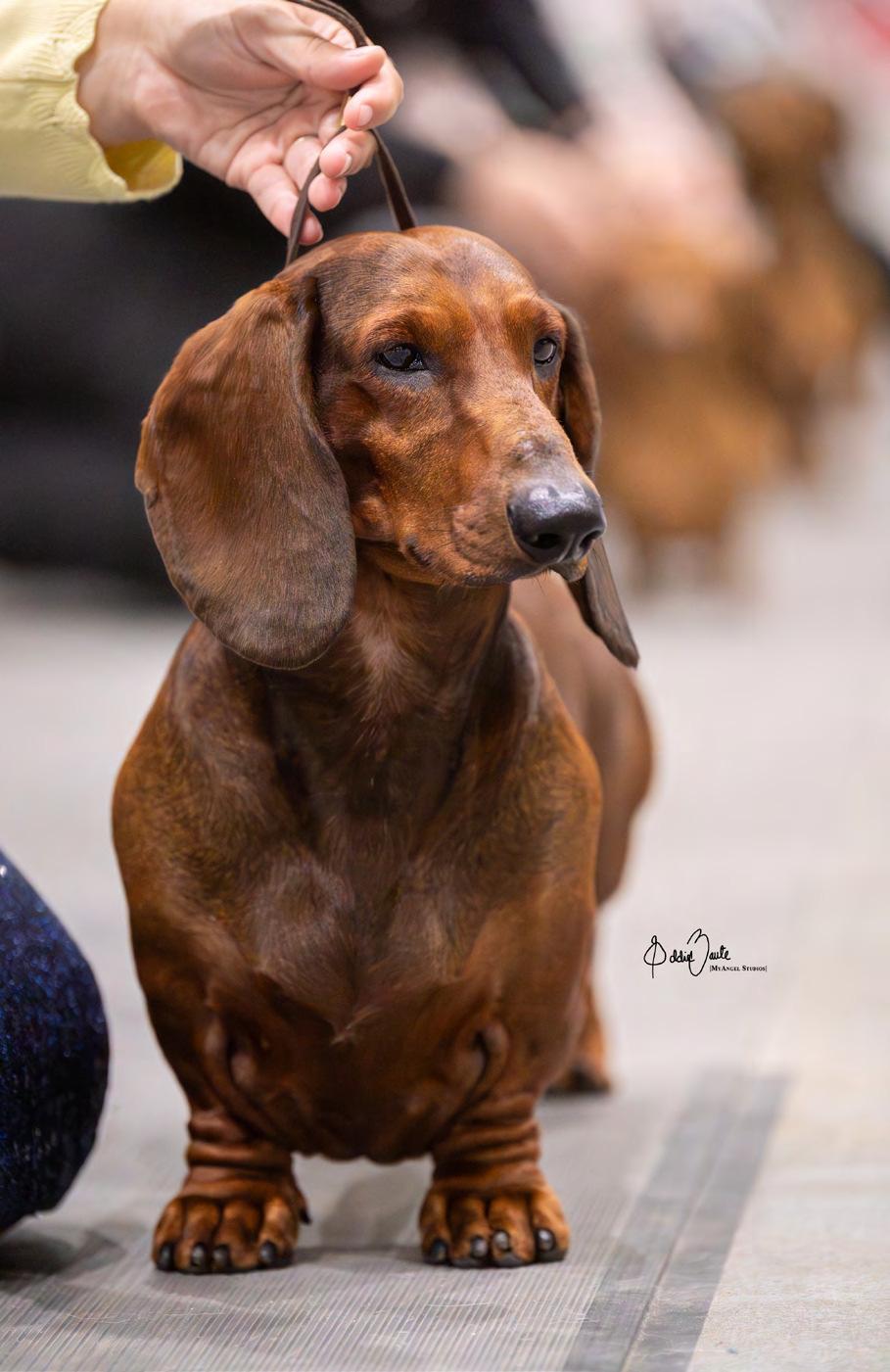



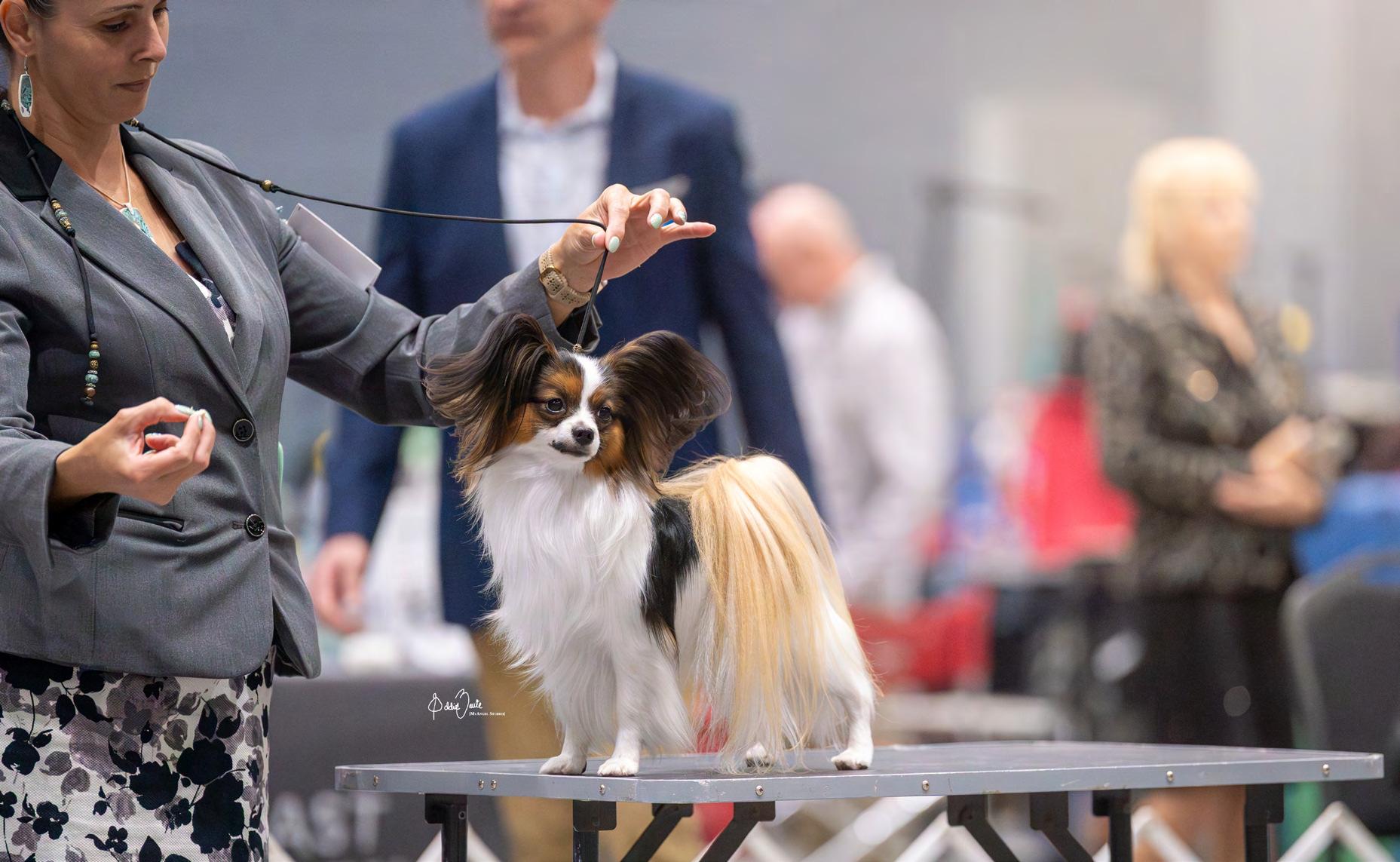
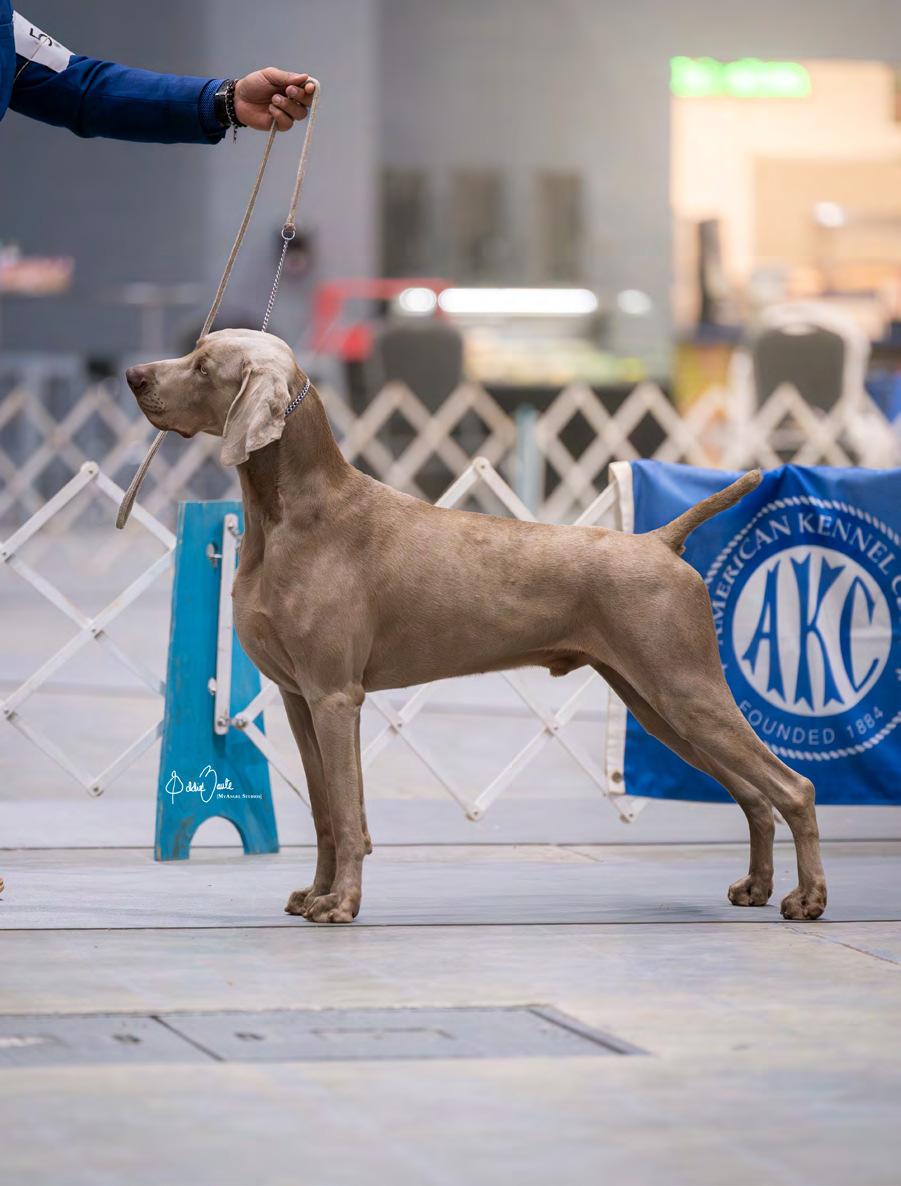




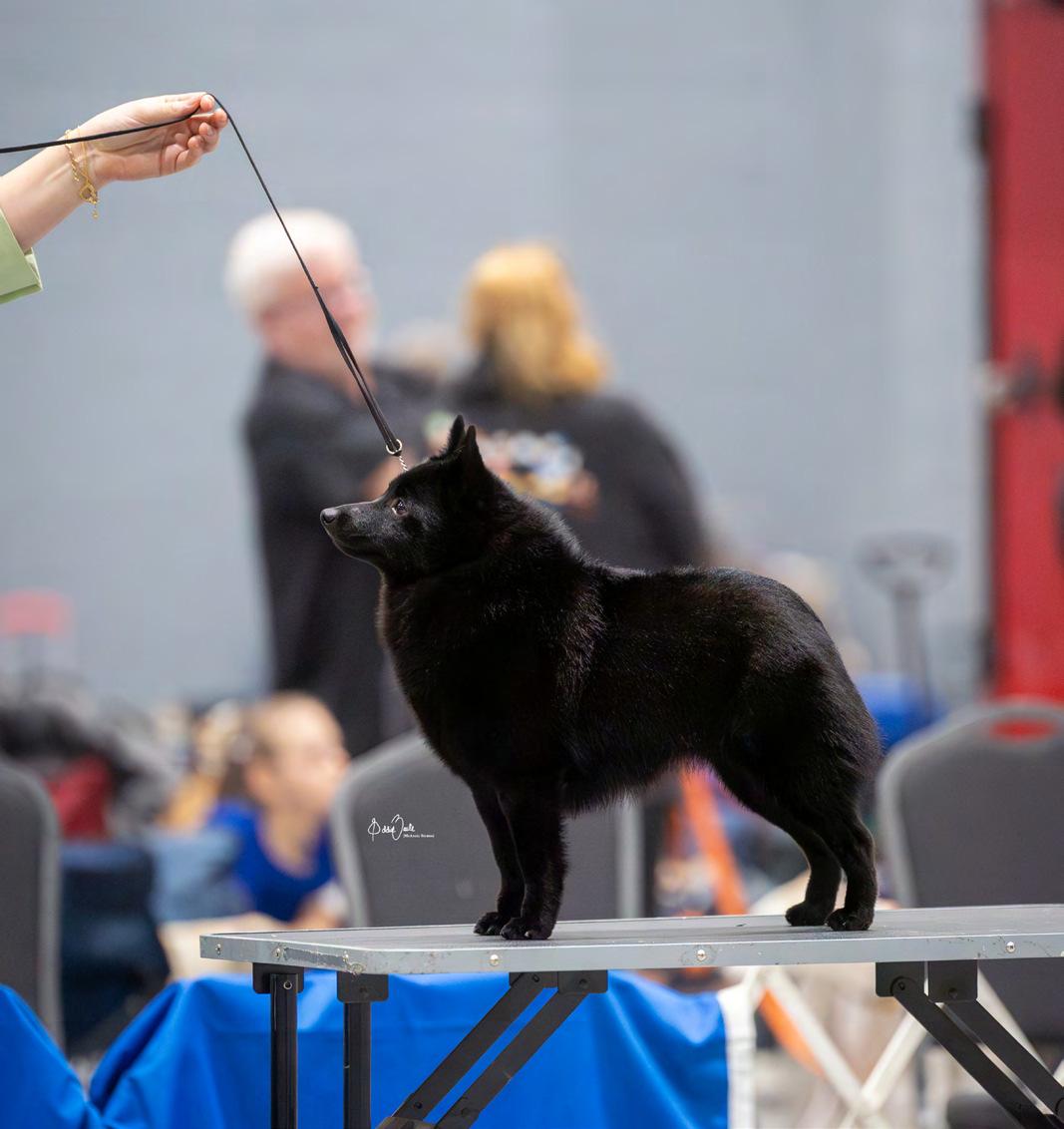

#1- GCHB Von Luchbach Son Of A Preacher Man
Breed: Weimaraner
Owner: L & F Bommarito
Breeder: C Long
#2- GCHG Tropical’s Shanghai Sunset Flash CGC
Breed: Spaniel (English Springer)
Owner: D Clancy & S Schrank
Breeder: D Hayes & S Schrank
#1- GCH Fetch & Smell Isabela Madrigal
Breed: Beagle 15 inch
Owner: M Pantaleon
Breeder: M Pantaleon
#2- GCHB Lex Ayur-Es-Sahel
Breed: Azawakhs
Owner: J Winton & L Berezkina
Breeder: L & N Berezkina
#1- GCHP EB The Relentless Pursuit Of Perfection
Breed: Great Dane
Owner: Dr. P & E Bustillo, R Pineiro & E Betancourt
Breeder: E Betancourt, R Pineiro & E Bustillo
#2-GCHG Spicerack’s Not Gonna Letem Catch The Midnite Rider
Breed: Giant Schnauzer
Owner: J Carr & R Henderson
Breeder: M Adler & R Henderson
#1- Cheltenham The Greatest Showman
Breed: Smooth Fox Terrier
Owner: R Pineiro & O & E Betancourt
#2- GCH McVan’s Star Lord
Breed: Scottish Terrier
Owner: Dr. V Huber & C James
Breeder: C James & Dr. V Huber
#3- GCH Fortuna Oh Get A Shroom!
Breed: Lagotti
Owner: S Wagner, J Lopes & J & M Rich
Breeder: J & M Lopes
#4- Gold-Coast Time For A Cool Change
Breed: Spaniel (Cocker) Black
Owner: M & N Grajales
#3- GCHG DC Abbaio Bushbaby MC ATT
Breed: Ibizan Hound
Owner: S Murphy, S Fuller, L Hotchkiss & V Tippens
Breeder: S Murphy
#4- CH Karasar’s Royal Rejoyce
Breed: Whippet
Owner: K Kuper, L Krokover, C Cope, K Mlynar & N
Barthelette
#3- CH Baltazar Sunland Br
Breed: Boxer
Owner: R Gerardo & P Bezerra
Breeder: R, G & P Bezerra
#4- GCH Ivoss N Kostlich Absolute Flash
Breed: Rottweiler
Owner: D Voss DVM
Breeder: R Chriscoe, E Barnhart-Nasto & D Voss
#3- King N Tajinastes Lost In Translation
Breed: Miniature Schnauzer
Owner: J King & L & P Martin del Rio
#4- Nicairn Rauree Hjo Got The Spirit
Breed: Cairn Terrier
Owner: S Dunn, N Higgins & L & C Dunn



#1- GCHS Integra Sun Of A Beach
Breed: Italian Greyhound
Owner: T Barnes & M Lucas
Breeder: M Lucas & T Catterson
#2- GCH Marlex Rock Steady
Breed: Miniature Pinscher
Owner: L Uhacz & A Angelbello
Breeder: A Angelbello
#1- GCHG Bish She’s A Brick House
Breed: Bulldog
Owner: A Dolegiewicz & T Stewart
Breeder: A Dolegiewicz & K McCullough
#2- GCH Fortuna Paxx A Punch
Breed: Dalmatian
Owner: T Carson & J Lopes
Breeder: J & M Lopes
#1- CH Sunshine’s Raise Your Glass
Breed: Polish Lowland Sheepdog
Owner: L Hastings Menaker & J Devlin
#2- CH Teyrnon’s Take Her To The Moon For Me [Bitch]
Breed: Australian Shepherd
Owner: K Kingsland, T Matteson, M Kingsland & P Bandino
Breeder: K Kingsland, T Matteson, T Williamson, P Bandino & J Foster
#3- GCH Maldiz Make You Rock At Edrey
Breed: Shih Tzu
Owner: E Vallel, R Guzman & A Diaz
Breeder: A Diaz
#4- GCH Oz’s Run Run Runaway
Breed: Yorkshire Terrier
Owner: L Serafini
Breeder: L Serafini
#3- CH Delamer The Bahamas Is Where Isle Be
Breed: Schipperke
Owner: M Jeon & K Nuovo-Roe
#4- GCH Valhalla Canmoy Cannoli
Breed: Boston Terrier
Owner: A Stromberg, A Huber, T Taulos & B Cliff
Breeder: A Stromberg, T Taulos & B Franzoso
#3- Margaux’s Clu You In At B’Dreamin
Breed: Bouvier des Flandres
Owner: K Piers, S Hall & M Cheek
Breeder: S Lyon
#4- GCH Ederra’s I Whistle A Happy Tune
Breed: Pumik
Owner: J Piros
Breeder: M Arechaederra & C Cassidy
Owner: M Pantaleon
Breeder: M Pantaleon


by Guillermo Cavazos

When you face a new situation—in this case, a new country—your brain automatically searches your memory to find the most similar experiences. Having shown multiple times in Cuba and judged last October in the Dominican Republic, I found some things in common: all three were Caribbean islands with a strong African influence. Jamaica couldn’t be that different.
I packed my suitcase to judge for the first time in a non-FCI member country with a superlative degree ofcuriosity.ListeningtoBobMarleyinanattemptto acclimate, I made my connection in Miami, already knowing that 88 dogs awaited me, representing only seven breeds: 5 Dachshunds, 5 Pomeranians, 4 Welsh Corgis, 2 Labradors, 23 Rottweilers, 20 German Shepherds, and 29 Dobermans. It was obviously a small event, but my doubts began to clear up when I learned that the limited number of breeds wasn’t only due to the economic challenges of importing dogs, but also to the strict sanitary quarantine measures for bringing dogs to the island. I learned that the last Doberman import had been 15 years earlier.
The hotel where I stayed was simple but fantastic— even a shootout scene from a 1962 Agent 007 movie was filmed in its restaurant. My first day as a tourist showed me that Jamaica was a very inclusive cultural mix, one that gave the country a strong and defined personality. English influences mingled with those of a very bland Spanish colony, where African traits were only visible in certain aspects. I found the cuisine very original and extremely well-seasoned. Chicken, beef, pork, and fish came together in sensationaldishes.Thericeandbeanscomplemented everything, accompanied by local fried vegetables and fruits cooked in a savory way. Plantains were present, but I expected to see more of them.
During my drive around the island, I saw very residentialareaswithostentatiousmansionsperched on hills, bordered by less privileged neighborhoods where goats and chickens roamed the streets as part of the jungle-like landscape. On the menu was fried lobster seasoned with habanero chili, accompanied by local beer.
My day ended with a pleasant dinner with two club members, who were kind enough to explain the complicated judging system we would be using the following day. It was obvious that with only seven breeds, Best in Show would be a small group for me, but what blew my mind was learning that the Best of Breed award didn’t exist. The best male and best female of each breed would be presented to the Group/Best in Show competition. In addition



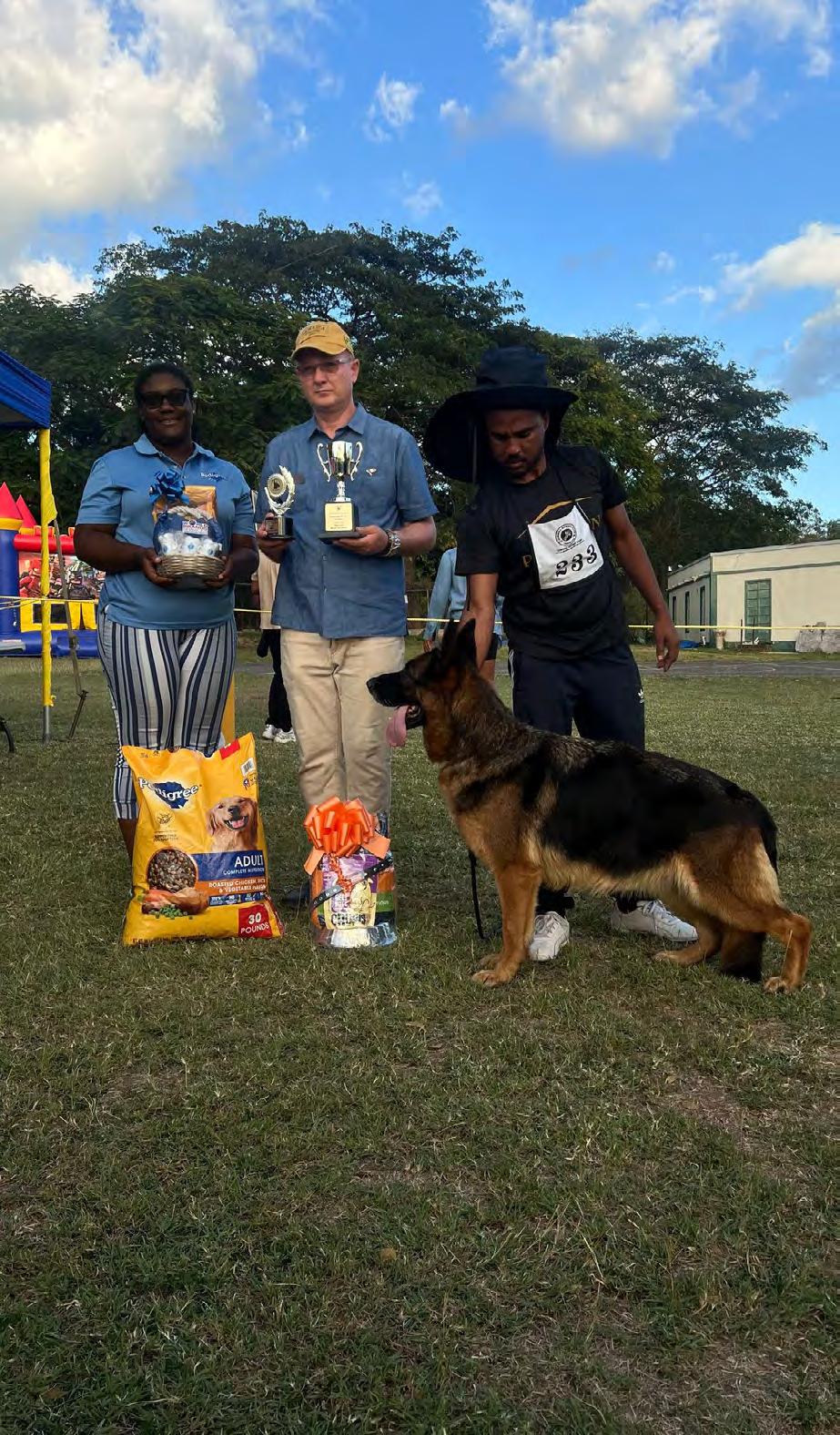


to choosing the best, I would also have to choose the best of the opposite sex. I also learned that the procedure for the Dobermans would be slightly different, since it was considered a specialty.
Everything was ready. I arrived at the event wearing a short-sleeved shirt and casual shoes. I’d already been told that the atmosphere would be very informal, with most of the competitors wearing shorts. At times, I felt that what really mattered were the dogs, not the protocol. My ring was so enormous that I was forced to place a chair in the center to direct the ups and downs. From my table, I could see very few crates—some on top of trucks that had the privilege of parking in the shade of surrounding trees. A few other dogs remained tied to the chain-link fence, without issue, despite the prevailing 85 degrees and the expected island humidity.
I began judging, and two things caught my attention: First, the classes were numbered progressively, meaning the first class I judged— male puppies—was number one, the next, junior males, was number two, and so on, up to the last one, number thirty-two. These were called over the loudspeakers. Second, my secretary was referred to by the amusing and endearing name “Marshall.”
The quality of the dogs—mostly from European lines— turned out to be what I expected. Breeding dogs with such a small gene pool and no access to outside lines must be a nightmare. There was a gene issue in the bites of a good percentage of the Rottweilers, which I regrettedmost.Theconditionofthedogswasquitegood, and the handlers worked hard in their own way, with a competitive attitude and very good sportsmanship. It’s really hard to describe the feeling I had when I saw the handlers’ lack of experience. The truth is, everyone was trying hard, but the idea of “I’m going to do my best to make my dog look a little better than he is” was absent. Without fear of being wrong, I can say that none of the participants had ever been off the island for a show. There’s simply no example to follow, and that makes things difficult. Living in that bubble isolates them from knowledge, but at the same time, preserves them in a

pure state—free from technical trends. It’s something I find hard to describe.
I boarded my plane back home very satisfied with my participation as a judge, enriched by the experience and reflecting on how sometimes we forget the diversity of the world. Sometimes we forget that diversity enriches us, and that dog shows are much more than beauty contests. They’re a cultural manifestation, a tribute to thebreedsandtoallofuswho,inonewayoranother,try to improve them and work every day for the well-being and health of dogs. In some places, like this one, the desire to win and compete is there, but understanding the dogs seems to be the most important thing. I also thought that in a small world, life is lived with more transparency, less malice, and fewer bad habits.
Goodbye, Jamaica. Long live the sport of purebred dogs!


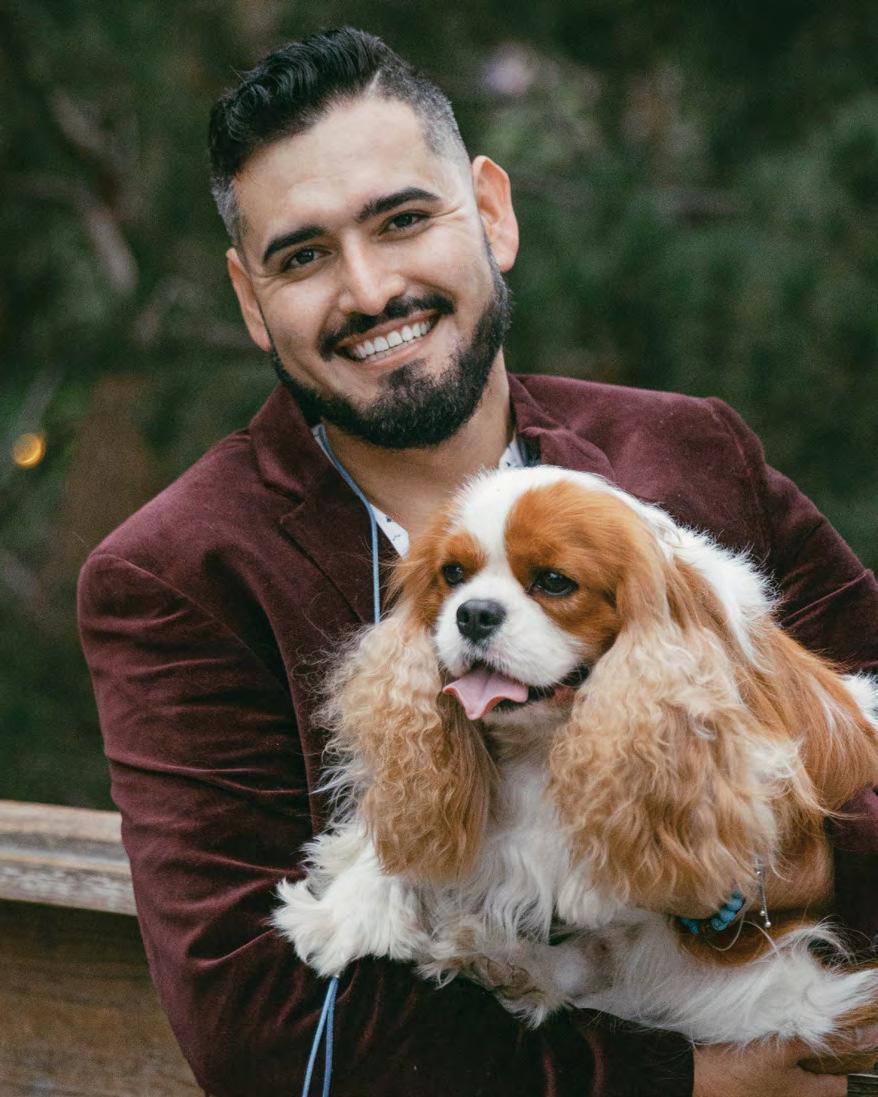
For larger or specialty dogs that can’t travel by commercial airline, choose a semi-private air transport. On these flights, your purebred can travel in its own seat or in a large carrier! Available for most domestic U.S. destinations and some international destinations.
For smaller dogs, choose commercial air transport. A professional travel guardian will pick up your dog from its departure location, care for it throughout the entire journey, and safely deliver it to you. Both domestic U.S. and international destinations are available!
Dogs of all sizes and species can enjoy ground transportation across the U.S. Great for dogs that need to travel by themselves and owners/handlers who don’t want their animal interacting with others. Can accommodate up to 6 dogs at once from the same breeder, owner, or handler.
Mention our special code ‘ROMEO’ for your exclusive discount of $50 off a domestic U.S. transport, or $100 off any other transport + FREE travel insurance valued at up to $200.


by Jovana Danilovic

Nestled in the western Sierra Nevada mountains of California, Yosemite National Park is one of the most iconic and awe-inspiring places in the United States. Spanning over 750,000 acres, it’s a haven for nature lovers, adventure seekers, photographers, and anyone looking to reconnect with the great outdoors.
From towering granite cliffs to cascading waterfalls, ancient giant sequoias, and alpine meadows, Yosemite has something for everyone. Here’s your guide to what to see, what to do, and how to make the most of your Yosemite adventure. Yosemite National Park is a paradise for nature lovers, teeming with life across its varied landscapes. With over 400 kinds of animals, including black bears, bighorn sheep, and a dazzling array of more than 260 bird species, the park offers endless opportunities for wildlife encounters. As you wander its trails, you’ll not only soak in stunning views but also witness the rich tapestry of creatures that call this place home. Just remember to observe from a distance — this is their world, and we’re lucky visitors.
1. Yosemite Valley
This is the heart of the park and where you’ll find many of the most famous landmarks. It’s accessible yearround and perfect for first-time visitors.
El Capitan – The legendary vertical rock face beloved by climbers.
Half Dome – A granite dome and one of Yosemite’s most recognized symbols.
Bridalveil Fall – A 620-foot waterfall that’s especially powerful in spring.
Tunnel View – One of the most iconic photo spots in the park, offering a breathtaking panorama of Yosemite Valley.
2. Glacier Point
For jaw-dropping views of Half Dome, Yosemite Falls, and the valley below, Glacier Point is a must. It’s accessible by car in warmer months or by snowshoe in winter.
3. Mariposa Grove of Giant Sequoias
Home to over 500 mature giant sequoias, including the famous Grizzly Giant and California Tunnel Tree, this grove gives a humbling perspective on time and nature.
4. Yosemite Falls
At 2,425 feet, this is North America’s tallest waterfall and a highlight of the spring and early summer season.
5. Tuolumne Meadows
An alpine meadow area at high elevation, Tuolumne is quieter than Yosemite Valley and perfect for hiking and solitude during the summer months.
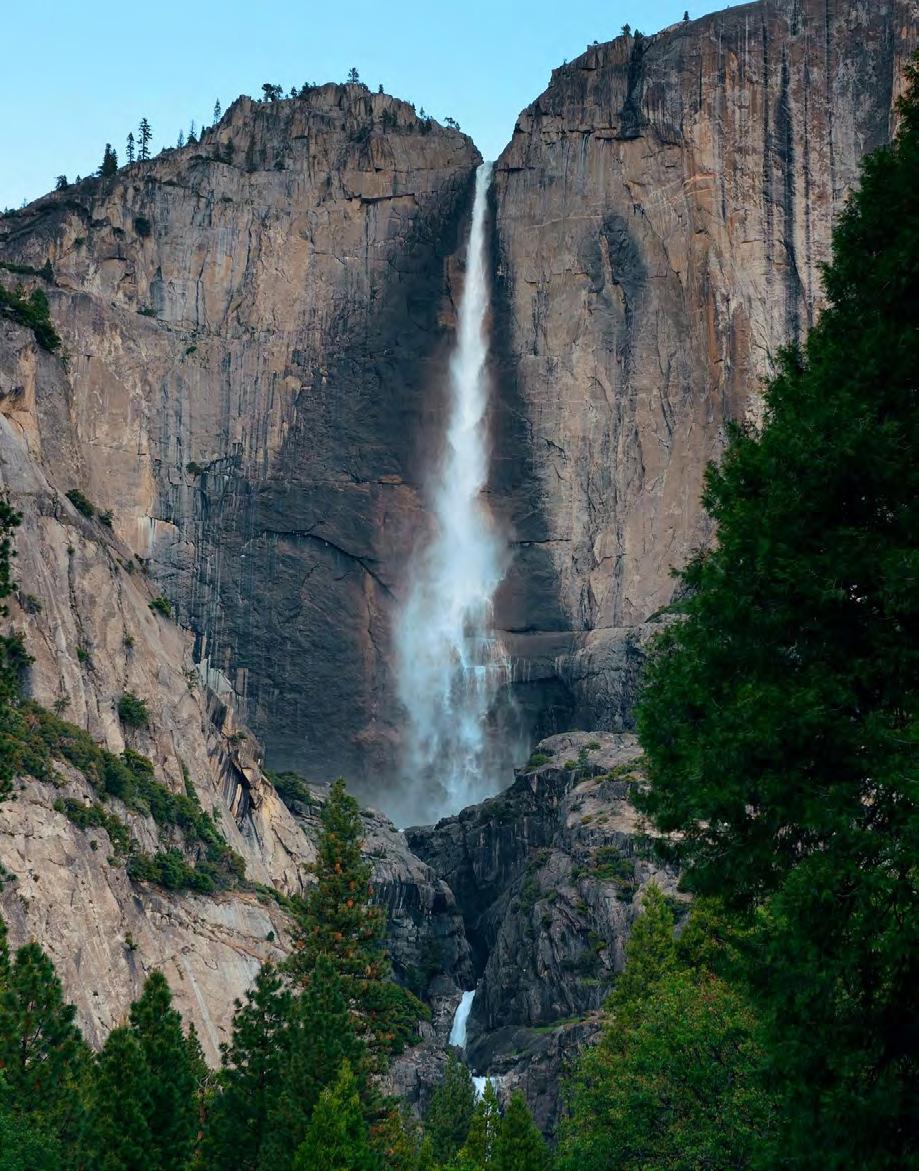

1. Hiking
Yosemite is a hiking paradise, with trails ranging from easy strolls to full-day treks.
Easy: Lower Yosemite Fall Trail, Mirror Lake Loop
Moderate: Mist Trail to Vernal and Nevada Falls
Challenging: Half Dome (requires permit), Clouds Rest
2. Rock Climbing
Yosemite is considered the birthplace of modern rock climbing, with El Capitan and Cathedral Spires attracting climbers from around the world.
3. Photography
Golden hour in Yosemite is unreal. Catch sunrise at Tunnel View or sunset at Glacier Point for unbeatable light and scenery.
4. Camping
Whether you’re pitching a tent or parking an RV, Yosemite offers 13 campgrounds — but book early! Reservations fill up quickly.
5. Wildlife Watching
Yosemite is home to black bears, mule deer, bobcats, coyotes, and over 260 bird species. Keep your eyes peeled, especially at dawn and dusk.
6. Winter Activities
Yosemite in winter is magical. Head to Badger Pass Ski Area for skiing and snowboarding, or try snowshoeing through the snowy sequoia groves.

Tips for Visiting
Book early: Lodging and campsite reservations open months in advance and sell out quickly, especially from May to September.
· Start early in the day: Popular spots get crowded fast, and parking can be limited.
· Weather varies: Summer can be warm, while spring and fall bring cool temps and the best waterfall flows. Winter offers solitude and snow sports.
· Leave no trace: Help keep Yosemite beautiful by packing out trash and respecting wildlife.
Final Thoughts
Yosemite isn’t just a park — it’s an experience. Whether you’re admiring the power of waterfalls, trekking across granite ridges, or sitting quietly under a sequoia that’s been standing for over a thousand years, you’ll come away feeling refreshed, inspired, and deeply connected to nature.
Plan smart, tread lightly, and let Yosemite take your breath away.

by Jacquelyn Fogel
In 2015 the AKC in cooperation with Keep Your PetsWisconsin, the national elkhound parent club, and 3 families of Indiana Amish Breeders prevented a disaster by performing an intervention with an AKC breeder. The Mission, which we all accepted, was to get to an Elkhound breeder’s Illinois facility before the animal rights people could put together a raid that was going to publicly expose terrible conditions at an AKC breeder’s home (we had inside information that detailed when the raid was going to occur). We needed to prevent them from using the raid to condemn other AKC breeders and
preserve the dignity of the targeted breeder. We had to get there first, use the power and authority of the AKC to convince this breeder to let the AKC affiliated organizations enter her property, confiscate the dogs immediately, and place them with other breeders willing to offer temporary housing, send in a clean-up crew to the property, and work with the national parent club’s rescue organization to find permanenthomesforthedogs.TheAKCalsoworked out a recovery program with the breeder so she could reclaim some of her dogs if she went through a program that proved she was capable of managing
her dogs in a safe, clean, healthy environment. By the time the AR people with their reporters and TV cameras arrived at the breeder’s facility, there was nothing to report. The dogs were gone, and the place was cleaned up.
We succeeded, and we reported the results to the AKC Delegates in hopes that they might see the benefit of what we did and put together a program to provide this service to other AKC breeders in distress. The AKC declined to move forward. They believed they had spent too much money on temporary boarding and care, and the need was not great enough. We used the services of 3 boarding kennels, all owned by other AKC breeders. My own kennel had maintained services longer than the other two kennels, and our reimbursement fees were approximately $3,000.00. The AKC had other priorities, none of which were focused on preserving the reputation and dignity of an aging population of preservation breeders of merit. They profusely thanked us for our efforts and success, but in their shortsightedness could not see the real value of funding and implementing a program like this in their future.
Fast forward 10 years to another situation in Wisconsin where a raid actually occurred and a long-time outstanding golden breeder’s reputation was destroyed and all her dogs were confiscated, spayed and neutered or put down, and placed in pet homes by the local humane society. It was front page news, and fodder for social media for weeks. Ironically this woman lived only 3 miles away from my boarding kennel that ran the Keep Your Pets-Wisconsin for nearly 20 years. This was the organization that was key to making the Elkhound situation a success because it was a non-profit that could coordinate with all the other essential services,
and it could accept and disperse donations from the public. We disbanded the organization in 2022 when my husband and I moved to Nevada. We could not generate enough revenue to support the non-profit’s mission, and the kennel was going to be sold, so we needed to end its subsidizing of the mission. All relationships with the humane society, the women’s shelter, local homeless shelters and the sheriff’s department evaporated. If the AKC had inside information that a raid was going to happen, there was nobody local to coordinate a response. My daughter, who still works at my boarding facility, was horrified to read about what happened to the breeder and her dogs knowing that Keep Your Pets-Wisconsin could have been the first call the sheriff’s department made instead of the humane society. We knew the breeder well, and all she would have had to do was call us or direct the sheriff to call us and we would have gone out to pick up her dogs immediately. We could have coordinated with other kennels in the area to take some of the dogs at reduced boarding rates to be reimbursed when the dogs left. We could have contacted Stacy Mason from the AKC to coordinate an inspection team and contact the Golden parent club to begin the process of rehoming beautiful dogs that should not have been spayed and neutered just because. Our groomers could have donated their time to clean up any of the dogs that needed it (though few of them did despite what the humane society reported to the press). The AKC could have required the breeder to put together a succession plan and allowed her to keep some of the dogs upon her completion of a recovery program like the one they did for the Elkhound breeder. And most importantly they could have helped to preserve the dignity of this well-known breeder. But of course, none of that happened because
the AKC decided preserving the dignity of AKC breeders and their breeding programs, even the most successful ones, was not important enough to spend money on. All AKC Breeders are sadly on their own. And God help the breeders who live alone in case some kind of misfortune or health crisis happens unexpectedly. They can all say goodbye to breeding programs that took a lifetime to build, and all the dogs will be removed from anyone else’s breeding program forever.
Perhaps I am overly sensitive to this issue because I am now one of those aging breeders who have spent the last decade trying to encourage a young breeder of two to take over either my basset or bedlington breeding program. Several people have expressed an interest, but as soon as they find out the there is no instant gratification, but there is actual work involved in an endeavor like this, they’re out the door, usually taking one or two beautiful dogs with them – dogs they now have no intention of breeding because, well, breeding good dogs is work and costs money. This has been an active search on my part for more than a decade, and I am frustratingly unsuccessful at finding heirs to two extremely successful breeding programs. I have dogs that would start someone on an amazing breeding path,
but everyone wants to breed their own, and they don’t care about the actual quality they’re breeding. “If I own it, it must be a great one,” seems to be the mantra of young breeders now.
My aging husband and I have 11 dogs and a beautiful breeding kennel right now. I still breed but must be much more careful about timing than previously. I can no longer leave Darling Husband alone to take care of our dogs – it’s just too much work for him alone. His physical health is not good, and one bad fall could leave him in a precarious position, so I always hire additional help, and have back-up plans if something does go wrong. But I would feel much better about my situation if I knew there was a non-profit like Keep Your Pets –Wisconsin to come in and help take care of dogs and contact our two parent clubs for help if it came to that.
I’ve read many of the comments people have written on Facebook about the Golden breeder, and why didn’t she have a plan for an emergency. Maybe she did but did not have an opportunity to implement them before being taken to the hospital. Or maybe she didn’t think about the possibility that something that bad could happen that unexpectedly. Things happen, and no matter how carefully we make plans to avert a disaster, sometimes they just don’t work out as we want them to. It’s difficult for people who are used to managing everything themselves to ask for help. Sometimes when we ask, the answer is no. I have back-ups for my backups, and sometimes they all fall through. Then I stay home.
No one knows how vulnerable they are until something debilitating actually happens. But if there was an organization in place with ties to other people in the
same local area as the aging breeders, that could make all the difference in the world, especially if that organization was seen as a first-call for professionals responding to a crisis. In our area in Wisconsin the Sheriff’s department contacted Keep Your Pets –Wisconsin before any other call was made. They had business and personal phone numbers for the entire management staff.
The AKC raises and spends a lot of money supporting Women’sshelterssotheclientsintheseshelterscankeep their pets with them while they are in crisis. It’s a great idea – one Keep Your Pets-Wisconsin also embraced. It’s not such a huge step to extend that program’s resources to also help the breeders who have supported the AKC for decades. If Keep Your Pets-Wisconsin had received grants from larger organizations like the AKC or Purina or Royal Canin it would still be operational.
I know my daughter, Andrea wants to resurrect Keep Your Pets-Wisconsin in light of the recent crisis, but she simply does not have time to do a lot of fundraising, and soon she will not have the kennel to support the effort without additional financing. Her heart is in the right place, but the finances are not there to support what she wants to do.
The open question now is whether or not the AKC feels any responsibility to the preservation breeders of merit that have supported them for decades? We have been the backbone of the AKC mission but are always treated like needy stepchildren. Back in the days before AKC decided to add animal health and welfare as its primary mission, when the AKC was a registry and advocate for purebred dogs, we at least felt appreciated by the organization. We still are, but only so long as we can continue to breed and exhibit beautiful dogs to show up
asentertainmentforshowsliketheRoyalCaninNational Dog Show and Westminster. The perks of entering those shows have even diminished radically over the past few years to the point where we pay to be the entertainment and we pay to see the entertainment, as well as pay for everything involved with transportation to the location, lodging and meals once we get there. Usually in the entertainment industry the people who provide the entertainment get some kind of remuneration, but no, we’re all just so excited to be there that we continue to pay for the honor ourselves.
Iamnotafool.Iclearlyunderstandthattheperformance events now bring in more revenue for the AKC than the conformation-related events. But conformation remains the face of the AKC to the public. The public watches dog shows, not agility trials or fast-cat. And the public loves dog shows! So perhaps it might be possible for the AKC to entertain an idea, once again, to assist the people who have maintained the mission and public presence of everything the AKC does as these breeders enter their retirement years? Could it be an investment fund started with donations from the large dog food companies? Could it be designed to not only preserve the dignity of senior preservation breeders of merit, but to also maintain their dogs for young breeders who might appreciate a head start on a breeding program? I think it’s all possible. We’re just lacking the imagination and will to try.


Date: April 9-12, 2025 · Location: Syracuse, NY
Judge: Michael Van Tassell, Dogs · Carl Williford, Bitches · Marianne Sullivan
BOV, BOB
Name: GCH WYNDLAIR STAR SPANGLED
Breeder: AnitaStelter,MattStelter,AlHernandez,LeslitHernandez
Owner: Anita Stelter, Matt Stelter, Al Hernandez, Leslit Hernandez
Handler: Anita Stelter
BOS to BOV
Name: GCHG AUREALIS PLAY FOR KEEPS
Breeder: Matt Stelter, Anita O Stelter, Deborah Falk, Lauren Falk
Owner: Lauren Browning, Deborah Falk, Julianna Falk, Maret Conahan
BOV, BOS to BOB
Name: GCHP CREEKWOOD LOCHLOMUN I’LL BE D’AMNED FDC
Breeder: Robin Reed, Virginia Mehr, Mary Lee Shingle
Owner: Robin Reed, Virginia Mehr, Joann Thomas, Ron Luster Jr., Alexis Coriell, Elizabeth Lude
BOS to BOV
Name: GCHG SHEPHERDS’ MISSION & CHRYSALIS RAISE YOUR GLASS CGC
Breeder: Debra Waelde
Owner: Tammie L Jacobs, George Jacobs, Judy Walburn


Date: April 3, 2025 · Location: Albany, OR · Judge: Kimberly Anne Meredith
BOB
Name: GCH SHEEZ-BEEZ EVERMORE TWICE TOLD TALES
Breeder: Megan Honari, Christian Rutten, Sheila Allen
Owner: Megan Honari, Christian Rutten, Sheila Allen
Handler: Megan Honari
BOS, BOBOH
Name: GCHS BLYTHMOOR INTO THE WOODS AT SHADOWMERE
Breeder: Margie Dykstra, Peggy Miller
Owner & Handler: Peggy Miller
WD
Name: KINGSBURY YOU ONLY LIVE ONCE
Breeder: Kingsbury kennels
Owner: Kingsbury kennels, Dusty Trieschman, Angela Greer
WB, BOW, Best Bred by Exhibitor
Name: ILLUMINATE N BRIGCASTLE CAN’T KEEP A SECRET
Breeder: Lisa Haines, Jennifer Maplethorpe, Jill
Briggs
Owner: Lisa Haines, Jennifer Maplethorpe, Jill Briggs
Select Dog
Name: CHILLUMINATEASCANDALOUSRUMORAT
BRIGGCASTLEB
Breeder: Lisa Haines, Jennifer Maplethorpe, Jill
Briggs
Owner: Jill Briggs
Select Bitch
Name: GCHB BLYTHMOOR’S A ROSE BY ANY OTHER NAME BCAT
Breeder: Margie Dykstra, Peggy Miller
Owner: MargieDykstra,CamilleJones
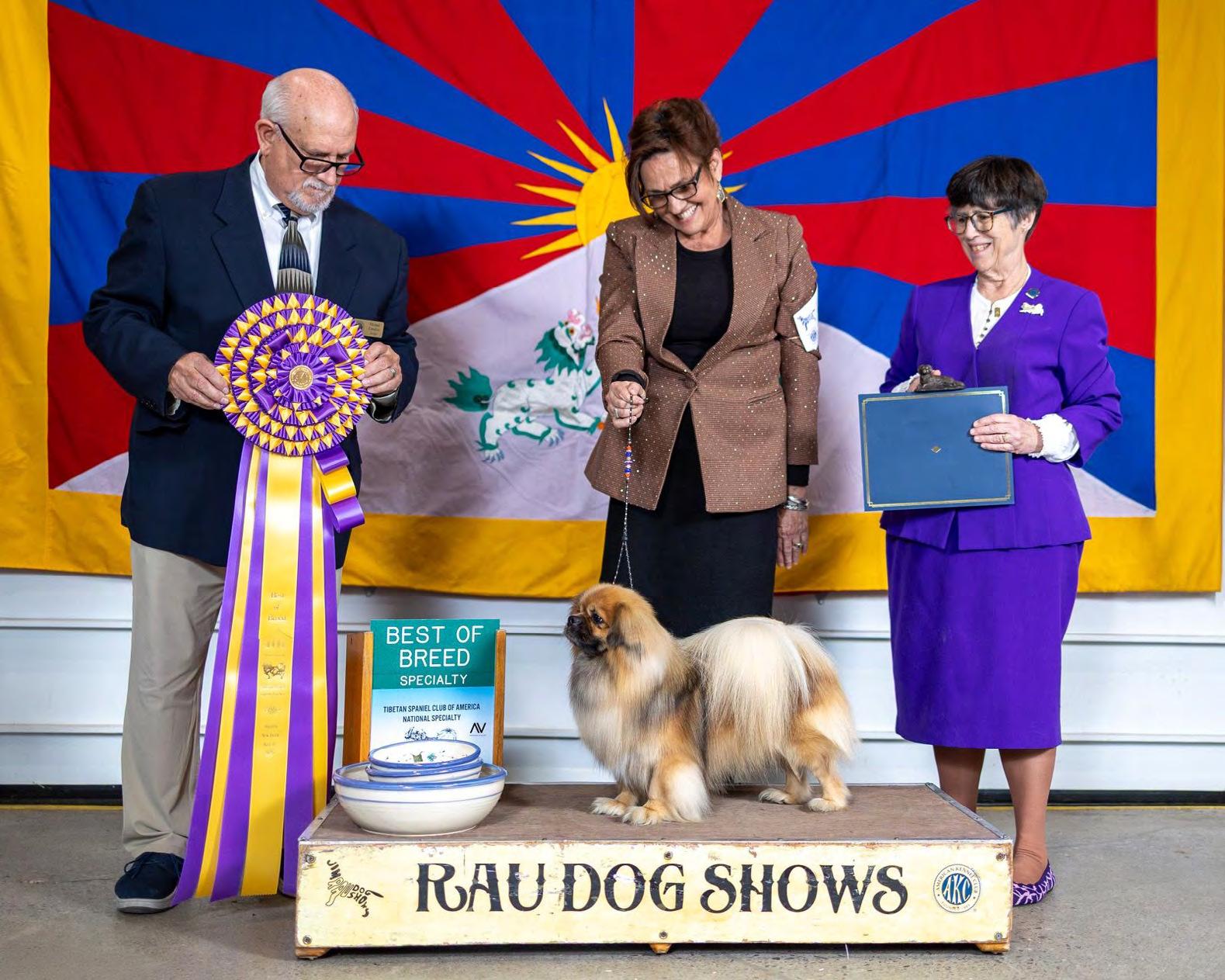

Date: April 10, 2025 · Location: Augusta, NJ · Judge: Michael Canalizo
BOB
Name: GCHP LANTANA’S TIME TO TALK AT
BRADMAR CGC
Breeder: Carole Zieris, Shirley Carroll
Owner: Barbara Eymard, Sabrina Hewitt
Handler: Terri Galle
BOS, BOBOH
Name: CH YELLOW ROSE OF TEXAS FOR SABARI
LIVOLLY
Breeder: Magdalena Andrusiewicz, Poland
Owner: Jeanie Ayala, Patricia Gilliard, Donna Hamner
Handler: Jeanie Ayala
WD, BOW, Best Puppy, Best Bred by Exhibitor
Name: OAK’S ECHO IN TIME
Breeder: Patricia Gilliard
Owner: Patricia Gilliard
Handler: Patricia Gilliard
WB
Name: WHITE ACRES FRAMBOISE BELIEVES IN ANGELS
Breeder: Carol Tyte, PeggyWatson
Owner: Peggy Watson
Select Dog
Name: GCHG KOFUKU TOP GUN OF JOLYTIBS
Breeder: JoLynnia Ann Luttrell, Marilynn Miller
Owner: Marilynn Miller, Angela Chase
Handler: Angela Chase
Select Bitch
Name: GCHB AMBRIER WHITE ACRES THE SECRET IS IN THE SA
Breeder: White Acres kennels, Mallory Cosby Driskill
Owner: Mallory Cosby Driskill, White Acres kennels, Delores Dills


Date: April 14-17, 2025 · Location: Hyannis, MA
Judge: Tanya Ireland, United Kingdom · Sweepstakes Judge: Paula Ayers · Futurity Judge: Trudy Owens
BOB
Name: GCHG FORESTCREEK JUST RIGHT
Breeder: Dr Kevin Cline
Owner: Joshua Marshall, Dr Kevin Cline
Handler: Mike Pitts
BOS, BOW, WB, BOBOH, Best Bred by Exhibitor
Name: ALMEARA LOVE HER MADLY
Breeder: Linda S Whitmire
Owner: Linda S Whitmire
Handler: Linda S Whitmire
WD
Name: BROOKHAVEN HOT SHOT
Breeder: Paula Ayers, Brenda Martz
Owner: Paula Ayers
Select Dog
Name: GCHP SHEEBA LADIES MAN CGC TKN
Breeder: Jasmin Becker, Karin Ostmann
Owner: Karin Ostmann, Idelle Cahn, Danna Salthoff
Handler: Tabatha Bettis
Select Bitch
Name: GCH ORCHARD HILL DIVERSIFIED
Breeder: Erica Venier, Rachel Venier
Owner: Erica Venier, Rachel Venier
Best Puppy
Name: FORESTCREEK HALO
Breeder: Dr Kevin Cline, Joshua Marshall, Lorie Koch
Owner: Dr Kevin Cline, Joshua Marshall
Best Veteran in Sweepstakes
Name: GCHB SHEEBA HENRIETTA
Breeder: Suzanne Robinson, Karin Ostmann, Danna Robinson Saathoff
Owner: Suzanne Robinson, Karin Ostmann, Danna Robinson Saathoff
Best in Futurity
Name: CROWNHEIR CARTIER HALO
Breeder: Kelly Fadel, Christian Fadel, Faith Fadel
Owner: Stephanie Deaver, Kelly Fadel
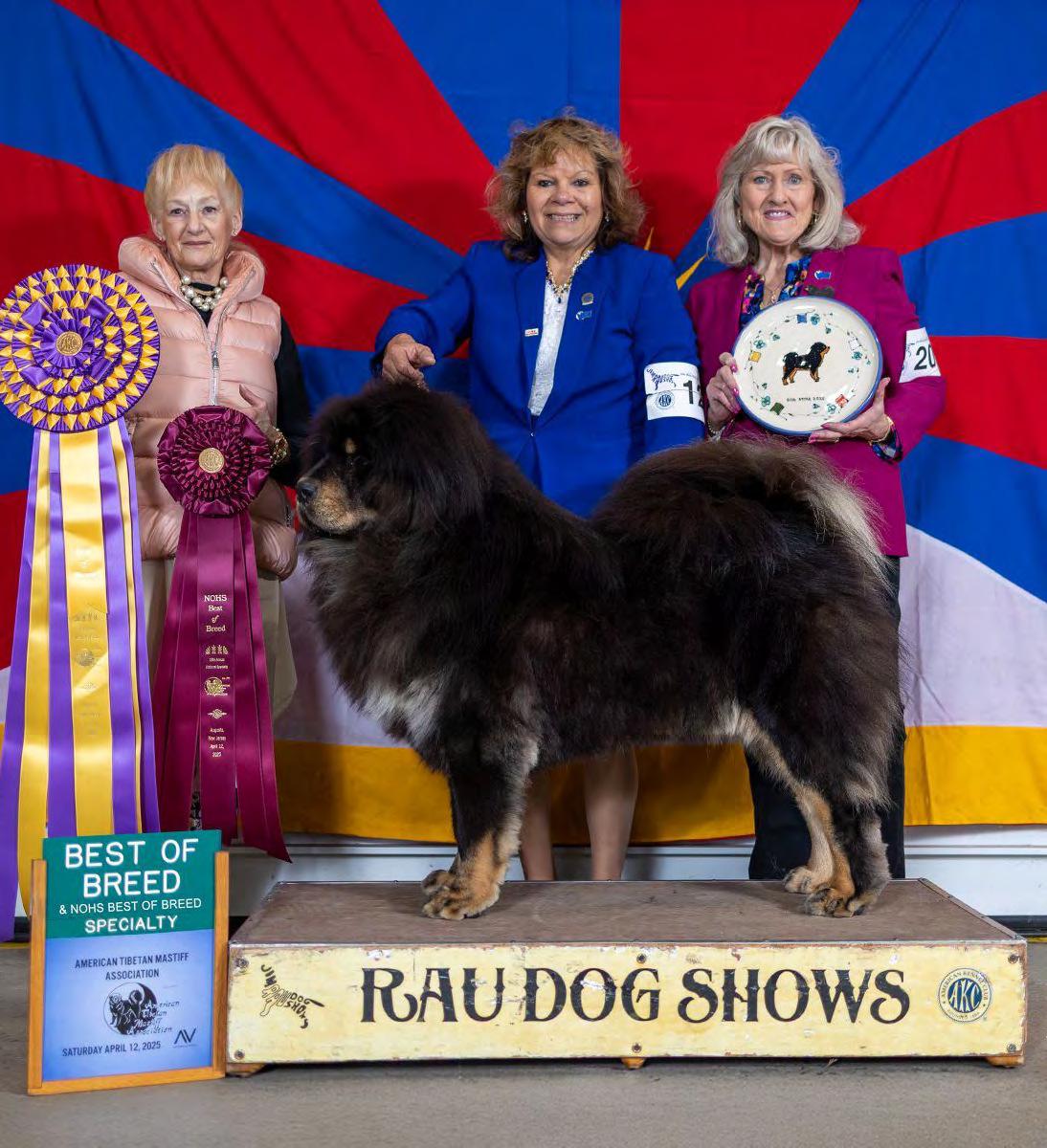
Date: April 12, 2025 · Location: Augusta, NJ · Judge: Elaine Lessig
BOB, BOBOH
Name: GCHB AUJUDON DREAMCATCHER I AM THE TORNADO
Breeder: Audrey Lee
Owner: Audrey Lee
Handler: Audrey Lee
BOS, BOW, WD, Best Bred by Exhibitor
Name: AUJUDON’S YOU BETTER BE GOOD TO ME
Breeder: Audrey Lee
Owner: Audrey Lee
Handler: Audrey Lee
WB
Name: AUJUDON’S FOREIGN AFFAIR
Breeder: Audrey Lee
Owner: Audrey Lee
Select Dog
Name: CH FLASHPOINT’S CIRCLE OF LIFE
Breeder: Laurel Cain Denk DVM
Owner: Katie and Josh Pate
Select Bitch
Name: GCH IRIE DREAMCATCHER BUBBLEDOG
Breeder: Hana Pauchova, Czech Republic
Owner: Audrey Lee


Date: April 13, 2025 · Location: Perry, GA · Judge: Betty-Claire Peacock
BOB, BOBOH
Name: CH MONTAI SPELL CASTER
Breeder: Heather and Justin Ginochio
Owner: Susan Dublinski, Heather and Justin Ginochio
Handler: Heather Ginochio
WB, BOW, Best Bred by Exhibitor
Name: MOSSO BUCKLE UP
Breeder: Stir Greer
Owner: Stir Greer
Handler: Stir Greer
BOS
Name: GCH WE-SYNG LIVIN WRIGHT
Breeder: Nanette Wright, Amy McCrary
Owner: Cecilia Resnick
Select Dog
Name: JENKAR U R MY SUNSHINE FROM WINDEMERE
Breeder: Karen Crane, Malinda Johnston, Andrea Johnson
Owner: Karen Meacham, Karen Crane
WD
Name: FOXBROOK’S FAMOUS AMOS
Breeder: Guyan Lange, Malinda Jacques
Owner: Guyan Lange, Malinda Jacques
Select Bitch
Name: GCH XELA’S FAME AND FORTUNE
Breeder: Stephanie Hill, C Dyson
Owner: Stephanie Hill, A Gerber, S Jones
31-JanSahuaro State K.C.Phoenix, AZ CH Contigo Paragon’s Make It A Macaroon Golden RetrieverA Heuslein & R HeimannRebecca Heimann
31-Jan Griffin Georgia K.C. Atlanta, GAGCHS Eastern Magic DesperadoChow Chow J & W Shen, M Brantley & M Fan Michael Brantley
31-JanDanville Illinois K.C.Indianapolis, INGCHS Top Speed NealBichon Frise E Charles, F Yang, N Brown & G Lajeski Lisa Bettis
30-Jan
30-Jan
Working Dog Club of Az #2 Phoenix, AZ GCHS Connquest Best Of Both Worlds Doberman Pinscher F & D Sparagna, T ConnorsChan & G Chan Andy Linton
Working Dog Club of Az #1 Phoenix, AZ GCHG Topaz Wildfire For Umunhum Siberian HuskyR McQueen & M RusherLauren House
30-JanSun Country Terrier #2Phoenix, AZGCHS Carmel Mr. Joe AdamisMiniature Schnauzer M Lande, M Jacobs & J & L Constantine-Amodei Jorge Olivera
30-JanSun Country Terrier #1Phoenix, AZGCHP Medley’s Just Reward Standard Manchester Terrier T Meyers, S Printemps & R Berrend Rachel Berrend
30-Jan
30-Jan
Sporting Dog Association of Az #2 Phoenix, AZ
Sporting Dog Association of Az #1 Phoenix, AZ
GCHG Boardwalk Here Comes The Sun LagottiA Ross & A KilleenTiffany Skinner
GCHG Boardwalk Here Comes The Sun LagottiA Ross & A KilleenTiffany Skinner
30-Jan Griffin Georgia K.C. Atlanta, GAGCH Chyscott’s The Dark HorseScottish Terrier P Malvar, P Jaruthavee, L Gerstner, R Hess, W & L Shafer & K Simmons Rebecca Cross
30-Jan BloomingtonIndianaK.C. Indianapolis, INGCHG Pinnacle Garden PartyWhippet N Shaw & J & C SmitheyJustin Smithey
29-JanDanville Illinois K.C.Indianapolis, INGCHG Next Generation’s Accelerate Chesapeake Bay Retriever M Schumann, A Levy, D Bleifer DVM, K Scribner & T Gerardi-Miller Devon Kipp-Levy
26-Jan St. Charles Missouri K.C.Gray Summit, MOGCHP Kaleef’s MercedesGerman ShepherdC Wilhelmy & S MosesKent Boyles
26-Jan Los Encinos K.C.Ventura, CAGCH Lyric’s Diamond All StarMiniature PoodleA Chicorli and P DicksonEthan Coye
26-Jan Kachina K.C.Surprise, AZ GCHS Connquest Best Of Both Worlds Doberman F & D Sparagna, T ConnorsChan & G Chan Andy Linton
26-Jan Erie K.C.Erie, PA GCHP Hallmark Jolei Out Of This World Shih Tzu L & D Ehricht & B Miller DVM Luke Ehricht
26-Jan
Greater Gainesville Dog Fanciers Association Ocala, FLGCHG DC Abbaio BushbabyIbizan Hound S Murphy, S Fuller, L Hotchkiss & V Tippens Sarah Murphy
26-Jan Carroll K.C.West Friendship, MDGCHS Stelor’s Rock Solid German Shorthaired Pointer A Partridge, L Estes, D Stelmach & M Hungerford MelissaHungerford
26-Jan Chain O’Lakes K.C.Grayslake, IL
26-Jan Alexandria K.C.Alexandria, LA
25-Jan
25-Jan
Aloha State Sporting Dog Association #2 Aiea, Hi
Aloha State Sporting Dog Association #1 Aiea, Hi
GCHBTheLionLady’sAutumnBlaze Chinese CrestedS Lyon & S LewisSammie Lewis
GCHP Good Fortune Good And Ready Shar PeiJ & V MaukClint Livingston
GCHB Lochinvar You Make Me Feel Like Dancing Labrador Retriever P Mizuno, B Duarte, C Garcia & D Yeager Craig Garcia
GCHB Lochinvar You Make Me Feel Like Dancing Labrador Retriever P Mizuno, B Duarte, C Garcia & D Yeager Craig Garcia
25-JanSt. Charles Missouri K.C.Gray Summit, MOGCHP Telltale Bohemian Rhapsody English Springer Spaniel B Fink, L Pike, J Vanderlip, S Hatch & G Paulucci Robin Novak
25-JanSan Fernando K.C.Ventura, CAGCH Lyric’s Diamond All StarMiniature PoodleA Chicorli and P DicksonEthan Coye
25-JanPark Shore K.C.Grayslake, IL
GCHS Dobhran’s Alexa Play Some Music Otterhound S & J Wilkins & A, J & J McIlwaine Jason McIlwaine
25-JanKachina K.C.Surprise, AZGCHS Carmel Mr. Joe AdamisMiniature Schnauzer M Lande, M Jacobs & J & L Constantine-Amodei Jorge Olivera
25-Jan
Greater Gainesville Dog Fanciers Association Ocala, FL
25-JanErie K.C.Erie, PA
CH Dreamtime Blue Moon Cirque Du Soleil
Australian Terrier R Whitlow, A Moulton, K Williams & J Popovits Kellie Williams
GCH Crystal Fountain Tanqueray At Snoebear Siberian HuskyH Shimizu & T & M TerellaTim Terella
25-JanCarroll K.C.West Friendship, MDGCHG Bagatelle Rainbow MoonOld English SheepdogR Corbett & B & J CharestCliff Steele
25-JanAlexandria K.C.Alexandria, LA
24-Jan
24-Jan
Arizona Toy Dog Fanciers #2 Surprise, AZ
Arizona Toy Dog Fanciers #1 Surprise, AZ
GCHP Good Fortune Good And Ready Shar PeiJ & V MaukClint Livingston
GCHG Riesa N Passionpap’s Locked And Loaded Papillon M Mosing, L Foiles & D & D Kelly Brian Livingston
GCHS Winsome N Nirvana’s Lil Nitro Gummy Bear PugV Flatley & E VeltmanSusie Olivera
24-JanSan Fernando K.C.Ventura, CAGCH Lyric’s Diamond All StarMiniature PoodleA Chicorli and P DicksonEthan Coye
24-JanLake Eustis K.C.Ocala, FLGCHG Rejoice’s To The PointCocker Spaniel
J Stevens, B Pike, P Maher & P Rismyhr Per Ingar
24-JanChain O’Lakes K.C.Grayslake, IL GCH Pegfield Tiintern Tickled Pink Sealyham Terrier P Browne, C Jenning & H Sutliff III Ania Kelly
24-JanAlexandria K.C.Alexandria, LA GCHS Tybrushe Livin’ On The Edge Of X-Cellence BoxerB TanMichael Shepherd
23-JanPark Shore K.C.Grayslake, IL GCH Cammcastle’s National Anthem V. Sanguino Rottweiler Z Fares, S Roberts & S GuynnErin Piercy
23-JanLake Eustis K.C.Ocala, FLGCHG Rejoice’s To The PointCocker Spaniel J Stevens, B Pike, P Maher & P Rismyhr Per Ingar
22-JanKenosha K.C.Grayslake, ILGCHS Mystic Suntime EverclearShetland Sheepdog B Wohlferd, T Robinson & N Yadong Marty Miller
19-JanWest Oahu K.C.Waianae, HI GCH Jimeni’s Yougogirl Scarab Sierra German ShepherdP & A Ayers & B Bigornia
19-JanTualatin K.C.Portland, OR GCHG Riesa N Passionpap’s Locked And Loaded Shetland Sheepdog M Mosing, L Foiles & D & D Kelly Brian Livingston
19-JanMississippi State K.C.Jackson, MS GCH Pegfield Tintern Tickled Pink Sealyham Terrier P Browne, C Jennings & H Sutliff III Peggy Browne
19-JanManatee K.C.Brooksville, FLGCH Skansen’s Ulysses S GrantGiant SchnauzerC KingAnia Kelly
19-JanCentral Iowa K.C.Des Moines, IAGCHS Sheep Creek MalbecKerry Blue Terrier J Rees, J Schaefer & J & M Rich Paul Catterson
18-JanTampa Bay Terrier ClubBrooksville, FLGCHS Carmel Mr. Joe AdamisMiniature Schnauzer M Lande, M Jacobs & J & L Constantine-Amodei John ConstantineAmodei
18-JanMemphis Toy Dog ClubJackson, MSSunryze Poms The Bringer Of Light PomeranianF Almeida & S FreitasLaura Werneck
18-JanWest Oahu K.C.Waianae, HI GCH Jimenis Yougogirl Scarab Sierra German ShepherdP & A Ayers & B Bigornia
18-JanMississippi State K.C.Jackson, MSGCHG DC Abbaio BushbabyIbizan Hound S Murphy, S Fuller, L Hotchkiss & V Tippens Sarah Murphy
18-Jan Dog Fanciers Association of Oregon Portland, ORGCH Bugaboo’s Give Me S’moreOld English SheepdogC, H, M & D JohnsonColton Johnson
18-JanClearwater K.C.Brooksville, FLGCHS Eastern Magic DesperadoChow Chow J & W Shen, M Brantley & M Fan Michael Brantley
18-JanCentral Iowa K.C. #2Des Moines, IAGCH Seasyde Harvest MistPointerA Crandall & C PinkstonMark Bettis
18-JanCentral Iowa K.C. #1Des Moines, IAGCHS Sheep Creek MalbecKerry Blue Terrier J Rees, J Schaefer & J & M Rich Paul Catterson
17-JanMemphis Toy Dog ClubJackson, MS
GCHG Nautica Wildhart I Have A Dream Italian GreyhoundD Stutzman & D ClineDaniel Stutzman
17-JanTampa Bay K.C.Brooksville, FLGCHS Sir Barton De Casa OrangePug J Carr, L Strain Bommarito, J Farias, J Cuello & E Leon Esteban Farias
17-JanMississippi State K.C.Jackson, MSGCHP Blue Heaven’s Orange CrushShetland SheepdogZ Wu & S Perry-HinkleKaren Livingston
17-Jan Dog Fanciers Association of Oregon Portland, OR
GCHS Player’s Alitara Magic In The Air Tibetan Terrier S & D Getman, N Hammel & G Mattison David Murray
16-Jan Tualatin K.C.Portland, ORGCH Bugaboo’s Give Me SmoreOld English SheepdogC, H, M & D JohnsonColton Johnson
16-Jan Pasco Florida K.C.Brooksville, FLGCH Lex Ayur-Es-Sahel AzawakhJ Winton & L Berezkina Ashleigh Oldfield
15-Jan Terrier Association of Oregon Portland, OR
15-JanHernando County K.C.Brooksville, FL
13-Jan Puyallup Valley Dog Fanciers Puyallup, WA
GCHB Studio Be Curious Jp Justice Hero Welsh TerrierJ See, Y Iguchi & G & Y RangelGabriel Rangel
GCHG Hammersmith Heathcliff Heathcliff CGCA TKN German Shepherd DogP Zapf, A Funk & J KarrasLenny Brown
GCHS Connquest Best Of Both Worlds Doberman Pinscher F & D Sparagna, T ConnorsChan & G Chan Andy Linton
13-JanManatee K.C.Brooksville, FLGCH Everland Castle Dandie Dinmont Terrier M RadzinskiLuiz Abreu
12-JanWinnegamie Dog ClubOshkosh, WI
GCHP Gumby’s Hey Now You’re An Allstar NWR Chinese Shar-Pei R & J Bryant, S Demirjian & A Robbins Katherine Wurz Smoot
12-JanTampa Bay K.C.Brooksville, FLGCHG DC Abbaio Bushbaby MC ATTIbizan Hound S Murphy, S Fuller, L Hotchkiss & V Tippens Sarah Muphy
12-JanSanta Clara Valley K.C.Turlock, CAGCHG Nakoa TaliskerCairn TerrierH CampbellTaffe McFadden
12-JanGig Harbor K.C.Puyallup, WA
12-JanCorpus Christi K.C.Sinton, TX
12-JanAnnapolis K.C.West Friendship, MD
11-JanWinnegamie Dog ClubOshkosh, WI
GCHG Regale’s Casino Royal Definitely A Winner Beauceron K Muller, T Carter, A McLaughlin & G Sharp Amie McLaughlin
GCHG Riesa N Passionpaps Locked And Loaded Papillon M Mosing, L Foiles & D & D Kelly Brian Livingston
GCHS Dobhran’s Alexa Play Some Music Otterhound S & J Wilkins & A, J & J McIlwaine Jason McIlwaine
GCHP Hallmark Jolei Out Of This World
Shih TzuL & D Ehricht & B Miller DVMLuke Ehricht
11-JanSeattle K.C.Puyallup, WAGCH Diamond OhlalaMalteseMark IsekiP Armstrong
11-JanSanta Clara Valley K.C.Turlock, CA
GCHS Player’s Alitara Magic In The Air
Tibetan Terrier S & D Getman, N Hammel & G Mattison David Murray
11-JanPasco Florida K.C.Brooksville, FLGCHB Sober’s HazelynGreyhound A Sobrado, W Santiago & B Ahrens Willy Santiago
11-JanCorpus Christi K.C.Sinton, TX
11-JanAnnapolis K.C.West Friendship, MD
10-Jan All Terrier Club of Western Washington Puyallup, WA
GCHB KiMik Tasen Westgate Spin The Bottle FDC Lhasa ApsoL DeMers, S Giles & C SehnertLois DeMers
GCH Long Grove’s Prettie In Pinke CGC TKN
GCHB Studio Be Curious Jp Justice Hero
Giant SchnauzerC & S SansoneAdam Bernardin
Welsh TerrierJ See, Y Iguchi & G & Y RangelGabriel Rangel
10-JanSanta Clara Valley K.C.Turlock, CAGCHS Sharbelle Dream Out Loud Toy PoodleR & S StevensTerry Bernier
10-JanCorpus Christi K.C.Sinton, TXGCHS Eastern Magic DesperadoChow Chow J & W Shen, M Brantley & M Fan Michael Brantley
10-JanClearwater K.C.Brooksville, FL GCHS Tamarack Valley View River Of Dreams
Gordon Setter Dr. E Shanahan & S ThrelfallStacy Threlfall
9-JanHernando County K.C.Brooksville, FLGCHG Ta Sen Westgate Jingle JuiceLhasa Apso S Giles, C Sehnert & S Campbell Susan Giles
9-JanCorpus Christi K.C.Sinton, TXGCHS Eastern Magic DesperadoChow Chow J & W Shen, M Brantley & M Fan Michael Brantley
5-JanRubber City K.C.Tallmadge, OH
GCHS Dobhran’s Alexa Play Some Music Otterhound S & J Wilkins & A, J & J McIlwaine Jason McIlwaine
5-JanNortheastern Illinois K.C.Tinley Park, ILGCH Denalli’s The Heat Is OnDoberman PinscherL SiboLeona Sibo
5-JanNolan River K.C.Glen Rose, TXGCHS Silhouette BlacklightCocker Spaniel E Charles, S Kaul, M Feltenstein, C Douglas, R Beinhauer, L Pitts & L Werneck Linda Pitts
5-JanMerrimack Valley K.C. West Springfield, MA GCHS Stelor’s Rock Solid German Shorthaired Pointer A Partridge, L Estes, D Stelmach & M Hungerford MelissaHungerford
5-JanLand O’Lakes K.C.St Paul, MN
5-JanK.C. of Palm SpringsIndio, CA
5-JanClemson K.C.Pendleton, SC
4-JanNorth Star Toy Dog ClubSt Paul, MN
GCHP Hallmark Jolei Out Of This World Shih TzuL & D Ehricht & B Miller DVMLuke Ehricht
GCHB Studio Be Curious Jp Justice Hero Welsh TerrierJ See, Y Iguchi & G & Y RangelGabriel Rangel
GCHS Windsong Bonheur Well Spirited DN RN CGC TKN BCAT Belgian Tervuren T Stone, B Donoho, A Dickens & M Schubert Taylor Stone
GCHP Hallmark Jolei Out Of This World Shih TzuL & D Ehricht & B Miller DVMLuke Ehricht
4-JanRubber City K.C.Tallmadge, OH
GCH Crystal Fountain Tanqueray At Snoebear Siberian HuskyH Shimizu & T & M TerellaTim Terella
4-JanNolan River K.C.Glen Rose, TXGCHS Mystic Suntime EverclearShetland Sheepdog B Wohlferd, T Robinson & N Yadong Marty Miller
4-JanMerrimack Valley K.C. West Springfield, MA GCH Monocacy Bend’s Farnsworth English FoxhoundT Koerber & K BernardinKatie Bernardin
4-JanLand O’Lakes K.C.St Paul, MN
GCHP Hallmark Jolei Out Of This World Shih TzuL & D Ehricht & B Miller DVMLuke Ehricht
4-JanK.C. of Palm SpringsIndio, CAGCHP2 Sunlit’s King Of QueensAfghan Hound A Morrison Jones & J SouzaBartlett Alicia Morrison Jones
4-Jan
International K.C. of Chicago Tinley Park, IL
4-JanClemson K.C.Pendleton, SC
3-Jan
3-Jan
GCHG Candela MyAngel And The Winner Is… Chinese CrestedS Fox, U Mencia & E BauteKelly Shupp
GCHS Windsong Bonheur Well Spirited DN RN CGC TKN BCAT Belgian Tervuren
T Stone, B Donoho, A Dickens & M Schubert Taylor Stone
Toy Dog Breeders Association of Southern California Indio, CAGCHS Sharbelle Dream Out Loud Toy PoodleR & S StevensTerry Bernier
Southern California Sporting Dog Fanciers Indio, CACH Winelight Wine DancerCocker SpanielJ Bruce Jose Aguilar Portillo
3-Jan Sand to Sea NonSporting Association of Southern California Indio, CA
3-JanNorth Star Toy Dog ClubSt Paul, MN
3-Jan
3-Jan
3-Jan
North Texas NonSporting Association Glen Rose, TX
GCHG Master Rock Calaco (Alonso Tojo) XoloitzcuintliS Tojo & M AlonsoDylan Kipp Keith
GCHP Hallmark Jolei Out Of This World Shih TzuL & D Ehricht & B Miller DVMLuke Ehricht
GCHS Spotlite’s Dappled Shining Light DalmatianR & L Wilthew & J MeischDarcie Cantor
Desert Empire Terrier Club of Southern California Indio, CAGCH Chyscott’s The Dark HorseScottish Terrier P Malvar, P Jaruthavee, L Gerstner, R Hess, W & L Shafer & K Simmons Rebecca Cross
Chicagoland Hound Association Tinley Park, ILGCHB Wildisle Brie Six ShooterIrish WolfhoundD & B Chastain MD
3-JanWheaton K.C.Tinley Park, ILGCH Baha Babylon And OnSalukiS WilcoxRyan Wolfe
3-JanNolan River K.C.Glen Rose, TXGCHG Forestcreek Just Right Cavalier King Charles Spaniel Dr. K Cline & J MarshallMichael Pitts
3-JanLand O’Lakes K.C.St Paul, MN
GCHP Hallmark Jolei Out Of This World
Shih TzuL & D Ehricht & B Miller DVMLuke Ehricht
3-JanColumbiana County K.C.Tallmadge, OH
2-Jan
2-Jan
2-Jan
Toy Dog Breeders Association of Southern California Indio, CA
GCH Crystal Fountain Tanqueray At Snoebear Siberian HuskyH Shimizu & T & M TerellaTim Terella
GCHP Wynmark’s Les Bijouxs Rock’N’Rolz At Reverie Havanese F Holt, M Coombs, B & C Hewlett & B White David Murray
Sand to Sea NonSporting Association of Southern California Indio, CAGCHB Rock’N’Rolla Black ObsidianStandard PoodleO FagenboymOlivia Hodgkinson
Northstar Working Group Association St Paul, MNGCH Marqway’s Born Into RoyaltyAkitaM ProkopchukLaura King
2-Jan North Star Herding Group Club St Paul, MNGCH Sircle Of Life Of Prairie CrestBeauceronA ScottLaura King
2-Jan
Desert Empire Terrier Club of Southern California Indio, CA
GCHB Studio Be Curious Jp Justice Hero Welsh TerrierJ See, Y Iguchi & G & Y RangelGabriel Rangel



